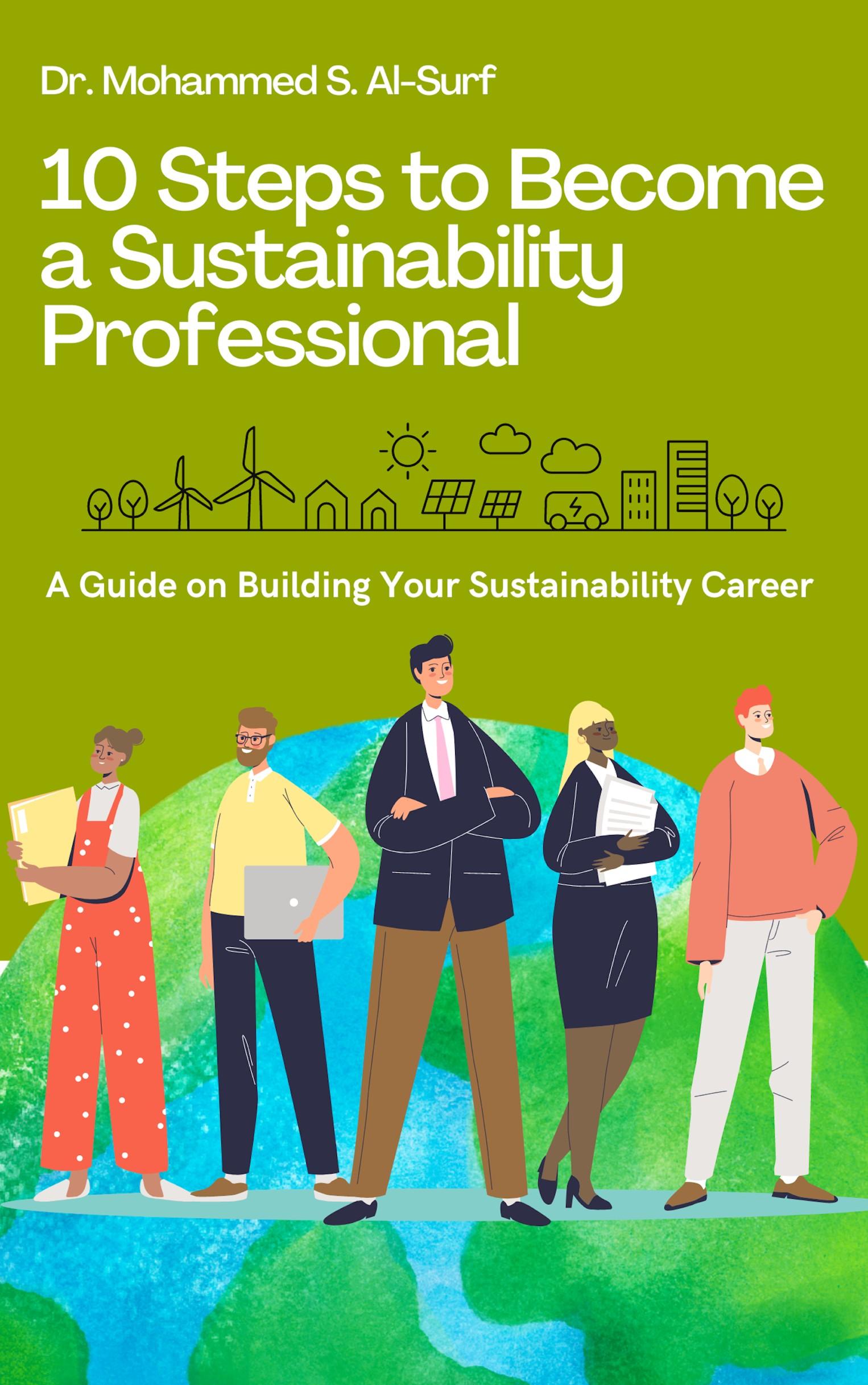
Title: 10 Steps to Become a Sustainability Professional: A Guide to Building your Sustainability Career.
Author: Mohammed S. Al-Surf
Paperback ISBN: 9798371507600
Hard Cover ISBN: 9798372122819
All rights reserved. No part of this book may be reproduced or used in any manner without the prior written permission of the copyright owner, except for the use of brief quotations in a book review.
First Edition, Jan, 2023.
Sponsored by The Green Building Training Center (GBTC) www.GBTConline.net (info@GBTConline.net)

Supported by The Sustainability Processionals in Saudi Arabia Network (SPSA) (info@spsaonline.net)

Copyright © [2023] [Mohammed S. Al-Surf]
10 Steps to Become a Sustainability Professional - Dr. Mohammed S. Al-Surf
2
3 10 Steps to Become a Sustainability Professional - Dr. Mohammed S. Al-Surf 10 Steps to Become a Sustainability Professional Table of Contents 10 Steps to Become a Sustainability Professional........................................................3 Foreword........................................................................................................................7 Acknowledgment..........................................................................................................10 A Guide to Becoming a Sustainability Professional...................................................11 What is a Sustainability Professional?.............................................................................12 Why Become a Sustainability Professional?....................................................................16 Sustainability: An Introduction........................................................................................18 The Dangers of Unsustainable Practices..........................................................................24 The Principles of Sustainable Development.....................................................................28 The SDGs for a Sustainability Professional.....................................................................30 SDG 3 36 SDG 6 38 SDG 7..............................................................................................................................................40 SDG 8..............................................................................................................................................42 SDG 9 44 SDG 11 46 SDG 12 48 SDG 13 50 SDG 17............................................................................................................................................52 The Need for Sustainability Professionals........................................................................54 The Benefits of Being a Sustainability Professional........................................................57 The Benefits of Hiring a Sustainability Professional.......................................................62 The Skills of a Sustainability Professional.......................................................................65
4 10 Steps to Become a Sustainability Professional - Dr. Mohammed S. Al-Surf Thinking Strategically 68 Analytical Skills 71 Project Management Skills 73 Communication Skills: The Power of Tone....................................................................................75 The Education of a Sustainability Professional: Why it Matters...................................77 The Experience of a Sustainability Professional..............................................................79 The Challenges of Being a Sustainability Professional and How to Overcome Them..83 10 Steps to Become a Sustainability Professional............................................................86 Sustainability Credentialing and Certifications Programs...........................................112 The U.S. Green Building Council (USGBC) and Green Business Certification Inc. (GBCI) 115 LEED Green Associate 117 LEED AP with specialty................................................................................................................119 SITES AP.......................................................................................................................................124 TRUE Advisor 127 Edge Expert 129 LEED Green Rater 130 International Society of Sustainability Professionals (ISSP) 131 Mostadam.......................................................................................................................................134 Estidama, Peral Qualified Professional (PQP)..............................................................................137 QSAS, The Global Sustainability Assessment System (GSAS)....................................................140 BREEAM Assessors and APs 143 World Green Economy Council Certifications 146 Certified Green Building Consultant (CGBC™) 146 CGE® - Certified Green Economist 147 Global Energy Manager (GEM)....................................................................................................147 Green Project Management Professional (GPMP®).....................................................................148 The CGLP® Designation 149 Fitwel Ambassadors 150 The Association of Climate Change Officers (ACCO) 151 Sustainability Reporting Certifications 152 Global Reporting Initiative (GRI) Professional Certification........................................................154
5 10 Steps to Become a Sustainability Professional - Dr. Mohammed S. Al-Surf Sustainability Accounting Standards Board (SASB) Fundamentals of Sustainability Accounting Credential 155 CDP Climate Change Survey Certification 156 Integrated Reporting (IR) Fundamentals of Integrated Reporting Certificate...............................158 Certified Sustainability Reporting Assurer (CSRA)......................................................................159 Green Building Initiative’s Green Globes 161 International Living Future Institute (ILFI)’s Living Building Challenge 163 International WELL Building Institute’s WELL Building Standard 164 Certified Green Building Engineer - GBE™ 166 Certifications Related to Energy for The Built Environment.......................................167 Association of Energy Engineers (AEE) 168 Certified Energy Manager 169 Certified Business Energy Professional 170 Renewable Energy Professional Certification...............................................................................171 Certified Building Commissioning Professional - CBCP®..........................................................172 Specialty Certifications....................................................................................................173 Envision Sustainability Professional (ENV SP) 174 International Supply Chain Education Alliance: Certified Supply Chain Manager 176 Global Association of Risk Professionals (GARP) Sustainability and Climate Risk (SCR) Certificate.......................................................................................................................................178 Carbon Auditing Professional - CAP™ 180 The CFA Institute Certificate in ESG Investing 181 Alliance for Water Stewardship (AWS) AWS Professional (Foundation, Advanced and Specialist levels) 183 Certified Water Efficiency Professional - CWEP™......................................................................185 The World Bank City Climate Planner (CCP) Certificate Program..............................................186 The Events Industry Council Sustainable Event Professional Certificate 188 Green Roofs for Healthy Cities Green Roof Professional (GRP) Accreditation 189 The Institute of Environmental Management and Assessment (IEMA) (based in the United Kingdom) Chartered Environmentalist (CEnv) And Registered Environmental Practitioner (REnvP) 192 The American Institute of Chemical Engineers (AIChE) Institute for Sustainability (IfS) AIChE Credential for Sustainability Professionals (ACSP)......................................................................194 Life Cycle Assessment Certified Professional (LCACP) 195
6 10 Steps to Become a Sustainability Professional - Dr. Mohammed S. Al-Surf The Australian Life Cycle Assessment Society (ALCAS), Life Cycle Assessment Certified Practitioner (LCACP) 196 GEP Environmental 198 ISO 14001 LEAD AUDITOR.......................................................................................................201 SDG Related.....................................................................................................................202 Certified Sustainable Development Professional - CSDP® 202 The SDG Academy 203 The SDG Action Manager.............................................................................................................204 The Young SDG Innovators Program...........................................................................................206 The SDG Ambition Program 207 The Climate Ambition Accelerator 208 Target Gender Equality 209 Useful Sustainability Glossary........................................................................................210 References..................................................................................................................219 About the Author........................................................................................................223
Foreword
It was back in 2004 when I was in my sophomore year at KFUPM when I heard the term “Sustainability” for the first time as an Architect student. I was amazed by the word and what it meant for me individually, but more importantly what it holds for the whole world. It was from that point on I knew I had to dig deeper into that word and become a professional in it.
I’ve come a long way since then and have been an advocate for sustainability and have trained hundreds of professionals for the past ten years since becoming a USGBC Faculty back in 2012. I am always confronted with the question: “How Can I Become a Sustainability Professional?” So, I thought it’s time to do something that will benefit everyone who is passionate about becoming a sustainability professional. That’s why I decided to write this book and list in it all the sustainability credentialing programs and professional certifications that a person can apply for. The list is not exhaustive of all the programs in the world, but I did my homework to list as many programs as I can for the benefit of everyone, anywhere.
The term Sustainability has made its way into mainstream media of all forms, to the point where it is no longer a term privy and of importance to the professionals of the industry. With the increasing strains on the environment by global warming and pollution of all types and skyrocketing levels, it is evident that work of all types in the application of sustainability is a force of promising employment and promotion in the workplace. Sustainability is fast becoming a career choice for many young professionals and job seekers typically ask – so what certifications do I need?
Having become a licensed professional with fully updated credentials, I strongly encourage others to showcase your commitment and specialize in something that can
10 Steps to Become a Sustainability Professional - Dr. Mohammed S. Al-Surf
7
help the environment. Whether it might be a general certificate in Green Buildings like the LEED Green Associate or something more specific like the TRUE Advisor credential, which is aiming towards a ZERO Waste environment, or the AAE credential “Renewable Energy Professional Certification”. This book lists more than 60 credentialing programs covering the whole spectrum of sustainability from the whole building level to the individual systems such as energy, water, waste and much more.
Most of those who work closely in Sustainability are quite familiar with two of the more common known certification systems – GRI and LEED. Before we do a deep dive into sustainability certifications there are few basic things to consider before thinking of getting one:
• Firstly, we need to remember that certifications in Sustainability are vast and there is no one certification that covers the entire spectrum that sustainability has to offer.
• Getting a certificate is not the only way to gain credibility in a certain area of sustainability. A certificate can only complement the skill sets (and passion) that you already possess. Volunteering, reading up on case studies, analysing current projects and taking up new work projects even in your current assignment can give you the much-needed exposure in areas that you are seeking to build credibility.
• Make sure that your basics of sustainability are very strong before you pursue any certification. Both Harvard and Stanford Business Schools offer great online courses in sustainability that will help you build a strong foundation.
• Once you have analysed what kind of certifications best complement your current role and future career growth, you can take a pick from the great certifications listed in this book.
10 Steps to Become a Sustainability Professional - Dr. Mohammed S. Al-Surf
8
Note that in this book I tried to collect as many certification and credentialing programs from various organizations, websites, training institutions and more for the ease of access to all sustainability professionals. The listed names of certifications and credentialing programs in this book are not exhaustive and I’m sure there are some which I might have missed. None of the listed certifications and credentialing programs have paid for this book in any way shape or form and it's only intended to benefit all who are interested to become sustainability professionals for the greater good of the world we live in. Nor do any of these credentialing programs necessary endorse this book. All rights to the information listed with respect to all of the certifications systems listed in this book are reserved to each organization and any concerns or questions need to be addressed to the organization’s contact information listed in the reference list at the end of the book.
9
10 Steps to Become a Sustainability Professional - Dr. Mohammed S. Al-Surf
Acknowledgment
Writing a book is harder than I thought and more rewarding than I could have ever imagined. None of this would have been possible without the full support of my lovely family. Having an idea and turning it into a book is as hard as it sounds. The experience is both internally challenging and rewarding.
First and foremost I would like to thank the Almighty Allah for his grace and giving me the strength and knowledge to complete this book
Secondly, I am utterly grateful to my father and mother, Saied and Samira, for their heartwarming and generous continuous support throughout my life. So thank you Mom and Dad for everything, you made me believe I can do it.
I also would like to extend my sincere gratitude and love to my lovely wife, Alaa, and my children, Balqees, Abdulaziz, Basil and Lamis for their never ending support and continuous love. They waited for me patiently every day and in lonely nights to finish this book. So thank you from the bottom of my heart.
I would like to also thank my brother and sister, Faris and Zuhrah, for their cheering and encouragement. Thank you to my extended family for your prayers and thoughts.
10
10 Steps to Become a Sustainability Professional - Dr. Mohammed S. Al-Surf
A Guide to Becoming a Sustainability Professional
There's never been a more important time to become a sustainability professional. As the effects of climate change become more and more evident, businesses and organizations are under pressure to reduce their environmental impact. That means there's a growing demand for sustainability experts who can help organizations develop green initiatives and achieve their sustainability goals. If you're interested in pursuing a career in sustainability, here's everything you need to know about becoming a sustainability professional.
First, you'll need to acquire the right skills and knowledge. You can do this through formal education, such as a degree in environmental science or sustainability, or through on-the-job training. Once you have the necessary skills and knowledge, you'll need to start building your experience. This can be done through internships, volunteer work, or paid positions with sustainability-focused organizations. Becoming a sustainability professional requires both hard work and dedication, but it can be an incredibly rewarding career. With the right skills and experience, you'll be able to make a real difference in the fight against climate change.
As the world becomes increasingly interconnected, the need to focus on sustainability has become more paramount than ever. It is our collective responsibility to ensure that our future generations inherit a world that is healthy and thriving. Sustainability is not about just minimizing our negative impacts on the environment, but it is also about transforming the way we treat and use the resources that are available to us. We must prioritize sustainability in everything from our daily actions to our policies and investments, in order to create a more equitable and resilient future.
11 10
Steps to Become a Sustainability Professional - Dr. Mohammed S. Al-Surf
What is a Sustainability Professional?

As the world becomes increasingly aware of the need to address environmental and social issues, more and more businesses are looking to hire sustainability professionals. But what exactly is a sustainability professional?
A sustainability professional is someone who helps organizations implement sustainable business practices. This can involve anything from developing environmental policies to conducting energy audits to overseeing recycling programs. Sustainability professionals often have a background in environmental science or engineering, but increasingly, business schools are offering programs specifically geared towards sustainability. This means that there are now many different paths into the field. The most important thing for any sustainability professional is a passion for making a difference. If you care about the environment and want to help businesses operate in a more sustainable way, then a career in sustainability might be for you.
10 Steps to Become a Sustainability Professional - Dr. Mohammed S. Al-Surf
12
There is no one-size-fits-all definition of sustainability, as the term can mean different things to different people. However, most definitions of sustainability include three key pillars: environmental protection, social justice, and economic development.
Sustainability professionals typically have a background in one of these areas, plus experience in fields like project management, policymaking, or communications. They use their skills to identify opportunities for sustainable development and then create and implement plans to make those opportunities a reality. The job of a sustainability professional is important work that can have a positive impact on the world. If you're interested in making a difference, consider becoming a sustainability professional yourself.
As a sustainability professional, you will have the opportunity to make a real difference in the world. You will be working to create solutions to environmental and social problems. You will be helping businesses and organizations operate more sustainably. And you will be making a positive impact on the lives of people and communities around the world.
The road to becoming a sustainability professional is not well-defined. Generally, the term “sustainability professional” is used to refer to anyone who works in the field of sustainability. However, there are certain qualifications and skills that are important for a successful career in this field.
In order to become a sustainability professional, you should have an understanding of the core principles of sustainability. This includes knowledge of green building techniques, renewable energy sources, and sustainable business practices. You should also be familiar with environmental and social impact assessments, as well as strategies for reducing greenhouse gas emissions and other climate change mitigation
10 Steps to Become a Sustainability Professional - Dr. Mohammed S. Al-Surf
13
measures. Additionally, it’s important to have experience in research and project management, communication, and writing.
In addition to these qualifications, you will need a strong background in economics, policy development, and stakeholder engagement. This will enable you to understand the economic and political aspects of sustainability initiatives. It’s also beneficial to have knowledge of corporate social responsibility (CSR) initiatives as well as international environmental regulations and standards.
A sustainability professional is someone who works to ensure that environmental and social sustainability principles are integrated into all aspects of an organization's operations. This can include developing and implementing sustainability policies, conducting audits and assessments, and providing training and support on sustainable practices. Sustainability professionals typically have a background in environmental science or engineering, with many also having a law or business degree. They must be able to effectively communicate with a variety of stakeholders, including senior executives, government officials, and the general public.
The role of the sustainability professional within an organization can vary, depending on the organization and the centrality of sustainability to its organizational strategy.
For some organizations, sustainability is an organizational form of greenwashing; their goal is to make the place seem more interested in environmental protection than it is.
These make-believe sustainability organizations are easy to spot, and important to identify. The definition of sustainability can also vary legitimately with efforts to subsume social justice, equity, or corporate social responsibility within a very general concept of “sustainability”.
Sustainability professionals must be scientifically literate. The sustainability professional must understand cutting-edge science and new discoveries about our planet. They must be able to assess the impact of our ever-changing technology on the
10 Steps to Become a Sustainability Professional - Dr. Mohammed S. Al-Surf
14
planet. They do not need to be scientific experts, but they must be capable of learning new science. Scientific debate is a central part of the evolution of our knowledge and an important part of the sustainability professional’s code of ethics must be to accept scientific uncertainty where it exists, and act accordingly. In the same vein, when scientific consensus has been achieved, as in the case of climate change, they must accept that consensus and act upon it.
To be effective, sustainability professionals must serve and facilitate their organization’s goals. Other professions do this all the time. A company’s lawyers aren’t interested in creating the most elegant contract or most visible lawsuit, they are interested in applying their professional skill to achieving the organization’s goals. The goal of the sustainability professional is to help organizations pay attention to the physical dimensions of sustainability in routine decision-making. For example: When a decision is made to move offices, have we thought about the source of energy and the energy efficiency of the new location? When we select a company to ship our packages, what type of packaging does this company use? What type of vehicles do they have? Are energy savings reflected in their cost structure? There are many options, new technologies and new practices that can be considered, and new vendors are constantly entering the marketplace and must be evaluated. Sustainability professionals bring this thought process and analytic capacity into the organization.
Given the complexities involved in dealing with sustainability issues on a global scale, it’s important for a sustainability professional to be adept at working with diverse stakeholders from government agencies, corporations, non-profits, and academia. As such, having strong communication skills is essential for success in this field.
Overall, becoming a sustainability professional requires both technical expertise as well as interpersonal abilities. With the right combination of education, experience and skillset you can become an effective leader in this rapidly growing sector.
10 Steps to Become a Sustainability Professional - Dr. Mohammed S. Al-Surf
15
Why Become a Sustainability Professional?

There are many reasons why you might want to become a sustainability professional. Perhaps you're passionate about environmental protection and want to help organizations operate in a more sustainable way. Or maybe you're interested in the business opportunities that come with being at the forefront of the sustainability movement.
Whatever your motivation, there's no doubt that sustainability is one of the most important issues of our time, and sustainability professionals are playing a vital role in addressing it. If you're thinking of becoming a sustainability professional, here are a few things to keep in mind:
1. Sustainability is an evolving field: As we become more aware of the environmental and social challenges we face, the field of sustainability is constantly evolving. This means there are always new opportunities for those who are willing to stay ahead of the curve.
10 Steps to Become a Sustainability Professional - Dr. Mohammed S. Al-Surf
16
2. It's not all doom and gloom: Yes, sustainability professionals often deal with some weighty issues, but it's important to remember that this work is also about creating positive change. So if you're someone who gets energized by working on solutions rather than just identifying problems, this could be the perfect career for you.
3. You can make a real difference: As a sustainability professional, you'll have the chance to make a real difference in the world. Whether you're helping an organization reduce its carbon footprint or teaching people about sustainable living, your work will contribute to making our planet a healthier place for generations to come.
Becoming a sustainability professional can be a great way to make a positive impact on the world. As a sustainability professional, you can help organizations reduce their environmental impact and operate more efficiently – saving on resources as well as funds. You can also help raise awareness of sustainability issues and promote sustainable practices.
If you're interested in making a difference and want to work in a field that is growing and offers good career prospects, then sustainability might be the right area for you. There are many different types of sustainability jobs available, so you can find one that suits your skills and interests.
17
10 Steps to Become a Sustainability Professional - Dr. Mohammed S. Al-Surf
Sustainability: An Introduction
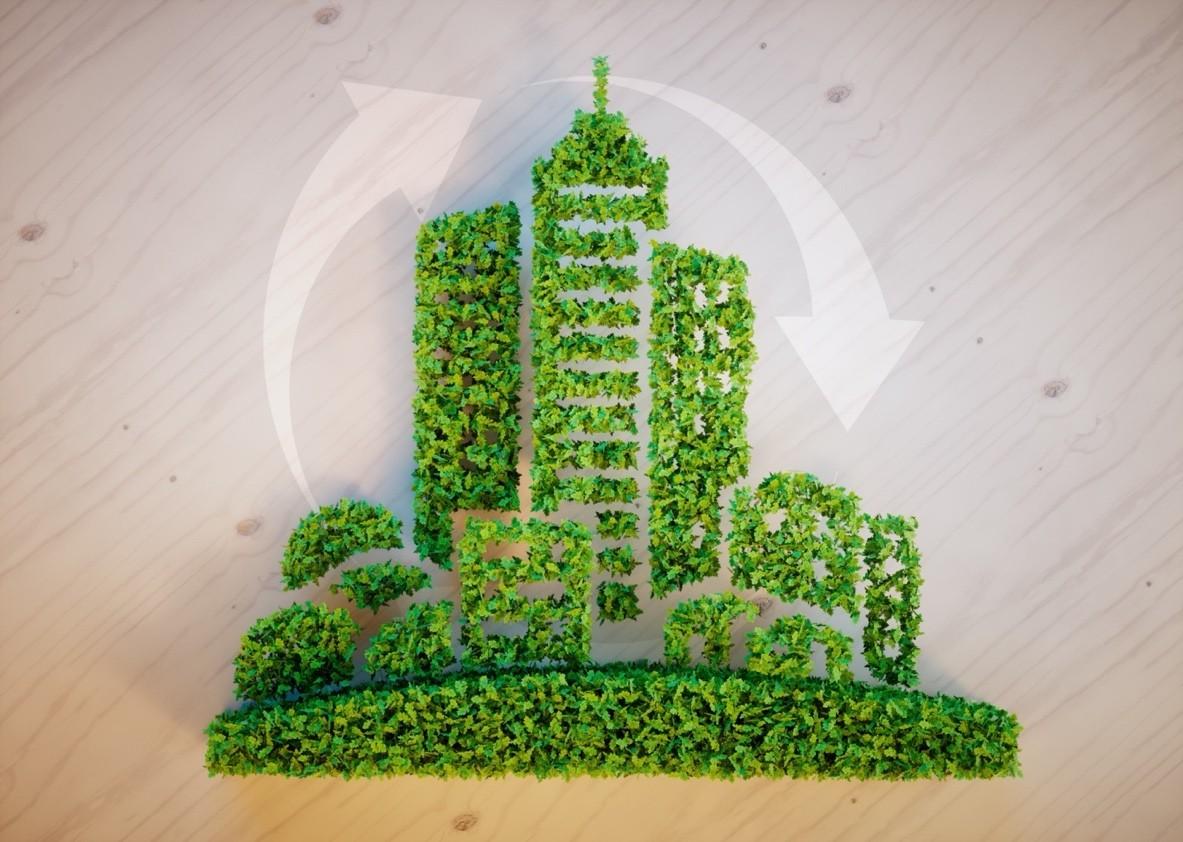
What is sustainability? Sustainability is the ability to meet the needs of the present without compromising the ability of future generations to meet their own needs. It is often defined as “development that meets the needs of the present without compromising the ability of future generations to meet their own needs.” There are three key pillars to sustainability – environmental, social, and economic.
Environmental sustainability refers to the need to protect and conserve our natural resources, such as air, water, and soil.
Social sustainability includes the need to build strong and resilient communities, with a focus on social inclusion and equity.
Economic sustainability refers to the need to create jobs and grow the economy in a way that benefits everyone, not just a select few.
10 Steps to Become a Sustainability Professional - Dr. Mohammed S. Al-Surf
18

Why is sustainability important? Sustainability is important because it is essential for the survival of our planet and all its inhabitants. We are already seeing the effects of climate change, and if we do not act now, the situation will only get worse. We need to be sustainable in order to protect our environment and our planet for future generations.
How can we be more sustainable? There are many ways we can be more sustainable in our daily lives. We can start by reducing our consumption of resources, recycling and composting more, and using less energy. We can also support sustainable businesses and buy local produce. Every little bit helps! So let’s all do our part to make the world a more sustainable place. It’s up to us to protect our planet and ensure a bright future for all.
A sustainable built environment is one that meets the needs of the present without compromising the ability of future generations to meet their own needs. The term
10 Steps to Become a Sustainability Professional - Dr. Mohammed S. Al-Surf
19
“sustainable” refers to the idea of meeting current environmental, social and economic challenges while also preserving our planet’s vital resources for future generations. To achieve this, we must find ways to use our natural resources more efficiently and reduce pollution and waste. A sustainable built environment is possible through the creative application of architectural design principles that integrate economic, social and environmental considerations. By working with nature, rather than against it, architects can create structures that are not only aesthetically pleasing but also energyefficient, durable and resilient.
As architects, we have the opportunity to create sustainable built environments that minimize the negative impact on our natural environment. This can be done through the use of environmentally friendly materials, energy efficient design, and water conservation. By creating sustainable buildings, we can help reduce the strain on our planet's resources and create a more sustainable future for all.
It is now globally accepted that the built environment should not only be fit for purpose but also sustainable. The 2030 Agenda for Sustainable Development, which includes the highly important United Nations Sustainable Development Goals (SDGs), and was adopted by all UN Member States in 2015, includes Goal 11: Make cities and human settlements inclusive, safe, resilient and sustainable. This requires a fundamental rethink of the way we plan, design, finance, build and manage our urban areas. There is an urgent need to move away from business-as-usual approaches in planning and designing our built environment if we are to achieve the SDGs by 2030.
10 Steps to Become a Sustainability Professional - Dr. Mohammed S. Al-Surf
20

The world is ever-changing, and with that so is the way we build and design our surroundings. What was popular a hundred years ago in terms of architecture and design may not be well-suited for the present or the future. As we face new challenges posed by a growing population and diminishing resources, it's important that we consider sustainable methods for building and construction. A sustainable built environment is one that can be maintained indefinitely without damaging or depleting natural resources. This includes using materials that can be replenished, renewable energy sources, and designing structures that minimize waste and protect the environment.
Sustainable building is characterized by an ability to meet the needs of the present without compromising the ability of future generations to meet their own needs. Sustainable building practices can help us to protect and restore the natural environment, while also providing comfortable and healthy places for people to live, work, and play.
There are many ways to make our built environment more sustainable. We can start by using energy-efficient lighting and appliances, and insulating our homes to reduce heat loss in winter and heat gain in summer. We can also choose materials that are
10 Steps to Become a Sustainability Professional - Dr. Mohammed S. Al-Surf
21
environmentally friendly and that can be reused or recycled. When we design and build sustainably, we create places that are not only good for the environment, but also good for our health and well-being. Sustainable buildings can help us save money on energy bills, while also providing us with cleaner air to breathe and a more pleasant place to live.
Sustainable architecture is not only about the materials you use, but also the way you use them. Every element of a building, from the framing to the finishes, can be designed with sustainability in mind. And when it comes to creating a sustainable space, tonality is just as important as form. The use of light and dark colors can create a sense of depth and dimension, while also helping to regulate temperature. By using a dark color on the south-facing facade of a building, for example, you can help deflect heat and keep the interior cooler. On the other hand, using a light color on the northfacing facade can help maximize sunlight and heat gain.
In addition to regulating temperature, the right tonal combination can also create a sense of formal sophistication or informal comfort. A building that uses a monochromatic palette of dark hues may appear more serious and formal, while one that incorporates a variety of light colors may seem more approachable and inviting. Ultimately, the goal of sustainable architecture is to create spaces that are not only environmentally friendly, but also comfortable and beautiful, and tonality plays an important role in achieving that goal.
As society progresses, so too does our need for sustainable architecture. What is sustainable architecture, you may ask? It is the practice of designing buildings and other structures with the goal of minimizing the negative environmental impact of the built environment. In other words, sustainable architecture is all about being kind to the planet – saving on resources while not contributing to extensive gas emissions.
10 Steps to Become a Sustainability Professional - Dr. Mohammed S. Al-Surf
22
There are many different ways to achieve this goal, and each project will require a different approach. Some of the most common strategies include using recycled materials, constructing buildings that make use of natural lighting and ventilation, and incorporating green spaces into the design. What’s important is that we start thinking about sustainability from the very beginning of the design process. We need to consider how our choices will affect the environment both now and in the future. Only by working together can we create a built environment that is safe and healthy for both people and the planet.
10 Steps to Become a Sustainability Professional - Dr. Mohammed S. Al-Surf
23
The Dangers of Unsustainable Practices
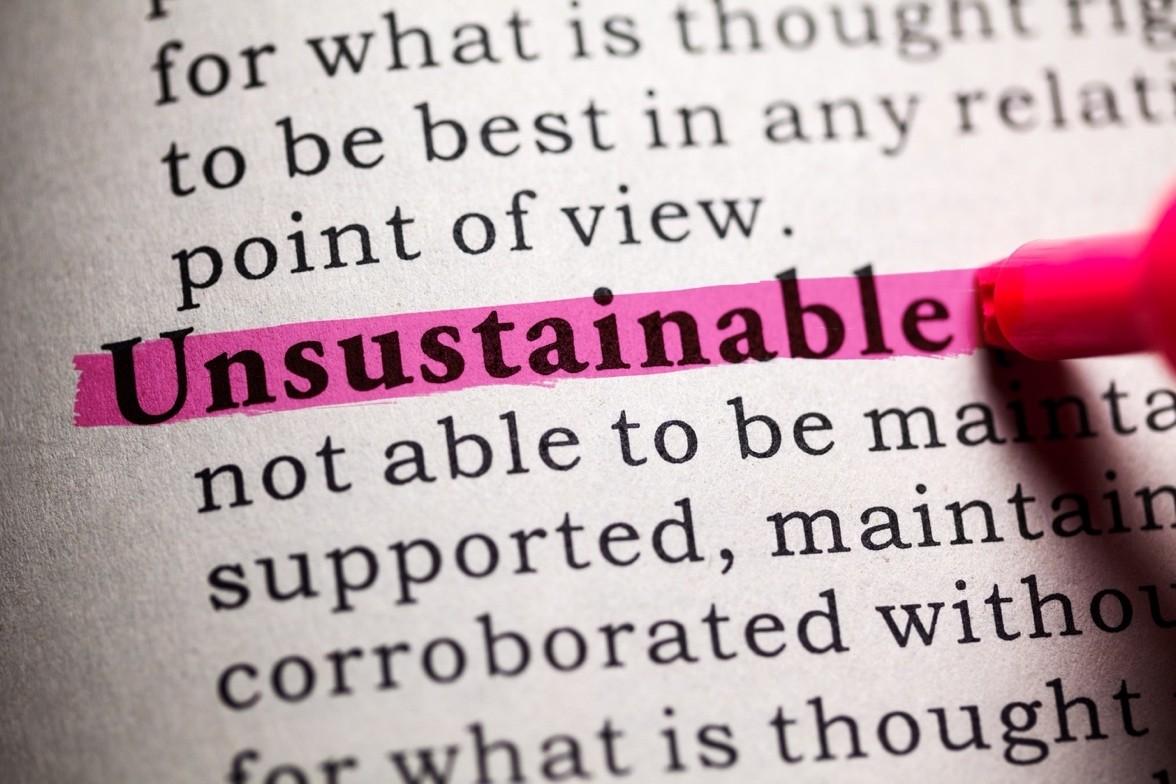
The world is facing a lot of environmental problems, and it is becoming more and more clear that unsustainable practices are to blame. From climate change to water pollution, the effects of unsustainable practices are starting to be felt by people all over the world.
There are many dangers associated with unsustainable practices. One of the most serious is climate change, as it is a major threat to both the environment and human health. It is caused by activities like burning fossil fuels, deforestation, and agriculture. Climate change can cause droughts, floods, extreme weather conditions, and other problems.
10 Steps to Become a Sustainability Professional - Dr. Mohammed S. Al-Surf
24
Another danger of unsustainable practices is water pollution. Water pollution is caused by things like sewage, oil spills, chemicals from factories, and runoff from farms. Water pollution can contaminate drinking water, harm aquatic life, and make swimming and fishing dangerous. These are just some of the dangers associated with unsustainable practices. It is important to be aware of these dangers so that we can take steps to avoid them. We need to be sustainable in our practices in order to protect the environment and ensure a bright future for generations to come.
Sustainability is not only important for the Earth’s environment, but it is also important for the future of humanity. Without sustainability, our planet’s resources will eventually run out and it could have devastating consequences. If we continue to use natural resources at an unsustainable rate, entire ecosystems could be destroyed, leading to a disruption in the food chain and loss of biodiversity.
In addition, climate change caused by unsustainable practices has lead to (and is continuing to promote) extreme weather conditions and rising sea levels that will threaten human life. The effects of global warming are already being felt all around the world, with extreme heat waves, droughts, and floods causing displacement and destruction of communities. Even the extreme winter storms that are increasing annually are an effect of global warming. We need to act now if we want to protect our planet’s future. We must come together to promote sustainable practices such as recycling, reducing energy consumption, using renewable energy sources like solar power, and protecting natural habitats from destruction. By making small changes in our everyday lives, we can make a big difference in preserving the environment and protecting our planet for generations to come.
The impact of unsustainable practices on the environment is serious and long-term. Unsustainable practices such as overfishing, deforestation, burning of fossil fuels, and overuse of pesticides can cause a variety of environmental problems. Overfishing can lead to reduced fish populations and an imbalance in the food chain. Deforestation
10 Steps to Become a Sustainability Professional - Dr. Mohammed S. Al-Surf
25
reduces habitats for wild animals and can disrupt local ecosystems. Burning of fossil fuels increases carbon dioxide in the atmosphere, which leads to global warming. The use of toxic pesticides can contaminate soil and water, threatening both human health and wildlife populations.
In addition to these immediate dangers, there are also potential long-term impacts from unsustainable practices. For example, climate change caused by burning fossil fuels could lead to extreme weather events such as floods, droughts, hurricanes, and heat waves. Rising sea levels could also have devastating effects on coastal communities. The overuse of pesticides could damage vital agricultural lands and reduce crop yields.
Consumers must be aware of the dangers posed by unsustainable practices and take steps to protect our environment. Sustainable solutions such as reducing energy consumption, buying sustainably sourced products, conserving water use, eating locally grown food, and recycling should be encouraged. Governments should also implement policies that promote sustainable development and discourage unsustainable practices. By taking action now we can help ensure that future generations will not have to suffer the consequences of our irresponsible actions today.
There's no denying that the way we live is not sustainable. We consume too much, we produce too much waste, and we pollute the planet at an alarming rate. If we want to preserve our planet for future generations, we need to make some changes and fast.
The good news is that more and more people are beginning to understand the need for sustainability. More companies are implementing green practices, more individuals are making conscious choices to reduce their impact on the environment, and slowly but surely, we're beginning to turn the tide. But we need to do more. We need to be louder in our demand for change. We need to hold corporations and governments accountable for their inaction on climate change. We need to vote with our wallets and support
10 Steps to Become a Sustainability Professional - Dr. Mohammed S. Al-Surf
26
businesses that are working towards a sustainable future. We need to be the change we want to see in the world.
10 Steps to Become a Sustainability Professional - Dr. Mohammed S. Al-Surf
27
The Principles of Sustainable Development
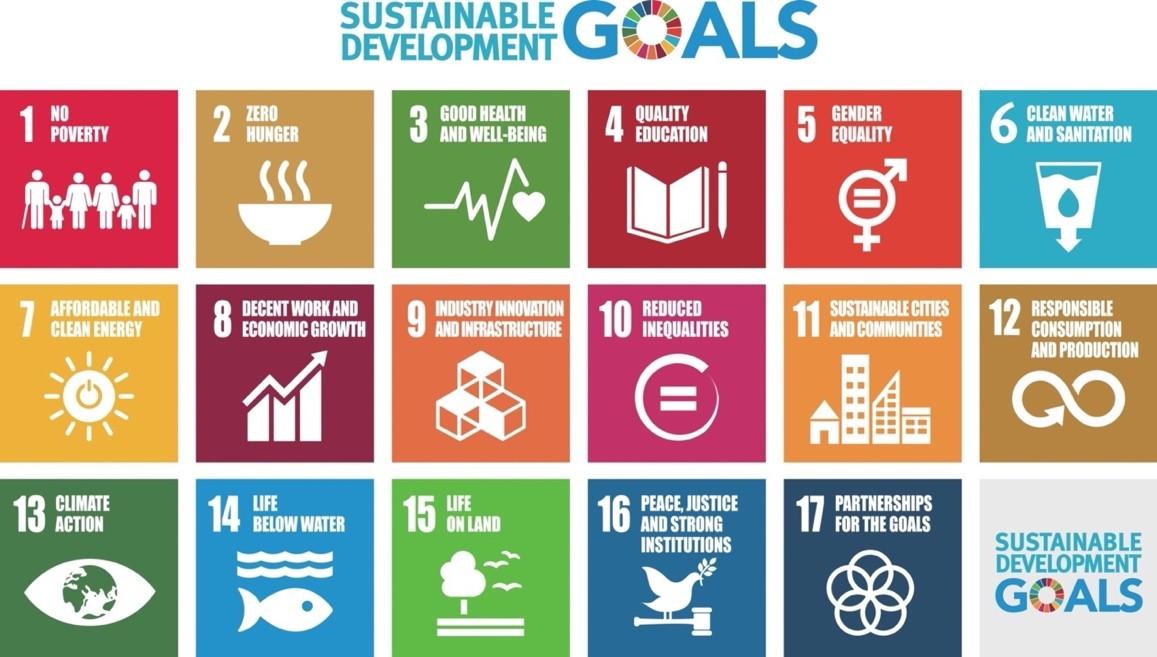
The principles of sustainable development have been defined by the United Nations as a framework to balance economic, social and environmental needs while ensuring that future generations can meet their own needs. The three pillars of sustainability are environmental protection, social inclusion and economic prosperity. In order to achieve sustainable development, we must find ways to balance these three pillars in a way that meets the needs of current and future generations.
The United Nations Conference on Environment and Development, held in Rio de Janeiro in 1992, defined the term "sustainable development" as development that meets the needs of the present without compromising the ability of future generations to meet their own needs. The international community has since embraced sustainable development as the guiding framework for addressing global environmental issues. Sustainable development has been defined in various ways, but the most frequently cited definition is from Our Common Future, also known as the Brundtland Report:
10 Steps to Become a Sustainability Professional - Dr. Mohammed S. Al-Surf
28
"Sustainable development is development that meets the needs of the present without compromising the ability of future generations to meet their own needs." (United Nations, 1987)
The three principles of sustainable development are:
1. Meeting the needs of the present generation without compromising the ability of future generations to meet their own needs
2. Ensuring a fair and equitable distribution of resources and benefits
3. Taking into account the environmental impact of our actions

10 Steps to Become a Sustainability Professional - Dr. Mohammed S. Al-Surf
29
The SDGs for a Sustainability
Professional
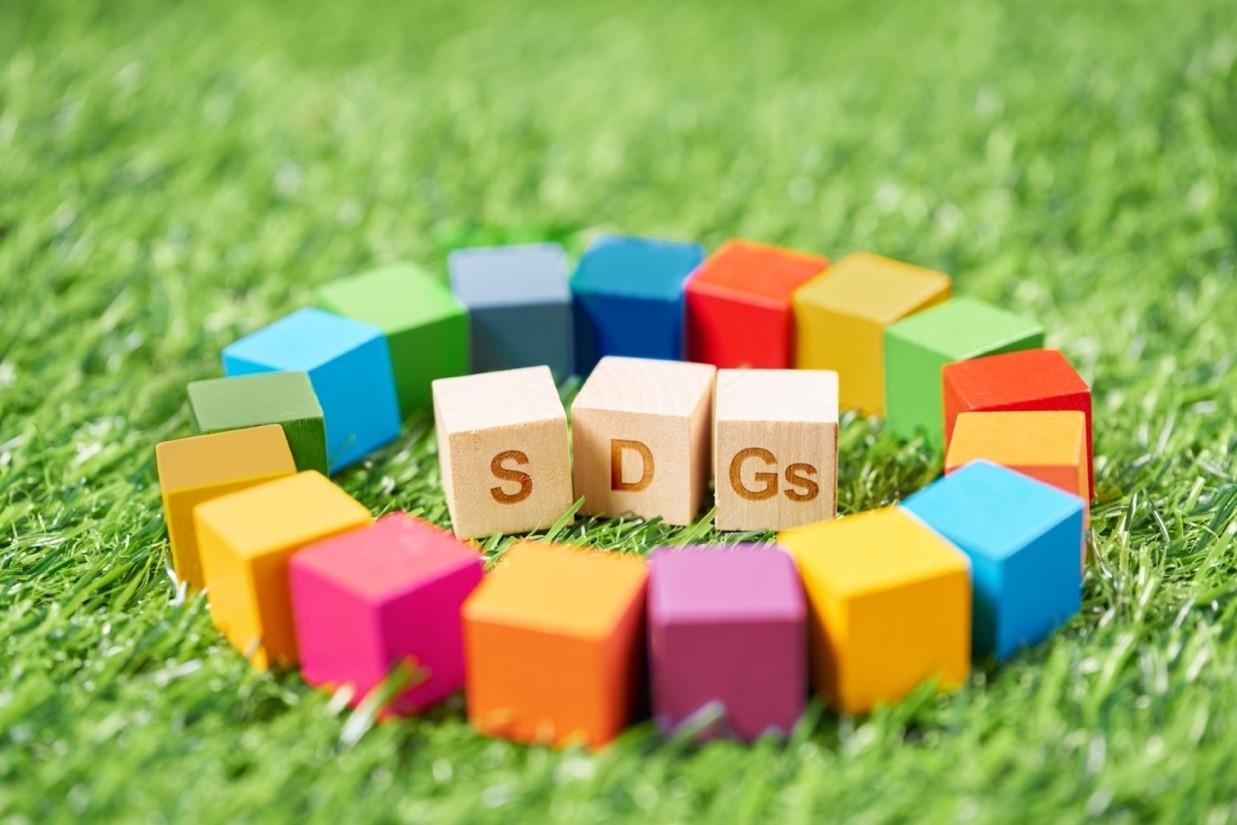
The United Nations' Sustainable Development Goals, SDGs, also known as the Global Goals, were adopted by all United Nations Member States in 2015 as a universal call to action to end poverty, protect the planet and ensure that all people enjoy peace and prosperity. The SDGs are a blueprint for a better and more sustainable future for all. They address the global challenges we face, including those related to poverty, inequality, climate change, environmental degradation, peace and justice.
The 2030 Agenda for Sustainable Development provides a comprehensive and integrated framework to end poverty and promote prosperity while protecting the planet. The Agenda is built on the three pillars of sustainable development—economic, social and environmental—and sets out 17 Sustainable Development Goals (SDGs)
10 Steps to Become a Sustainability Professional - Dr. Mohammed S. Al-Surf
30
and 169 targets to be achieved by 2030. To achieve the SDGs, it is essential to scale up and accelerate actions to strengthen the means of implementation and revitalize the Global Partnership for Sustainable Development. The means of implementation include financing, technology, capacity-building and data. They are essential for achieving the SDGs, but progress has been insufficient. For example, official development assistance (ODA) has stagnated in recent years, while private investment flows have been insufficient to close the financing gap. (United Nations, Transforming our world: the 2030 Agenda for Sustainable Development, 2015)
To accelerate progress, it is essential to increase ODA and other forms of international support, as well as domestic resource mobilization. Technology is another critical enabler of sustainable development. Harnessing technological advances can help achieve many of the SDGs, including those related to health, education, food security and nutrition, water and sanitation, energy, climate change and sustainable cities and communities. However, technology must be affordable, accessible and user-friendly to be effective.
In addition, capacity-building is needed to ensure that people have the skills to use technology appropriately. Data is also essential for sustainable development. Good data helps track progress towards the SDGs and identify gaps where more effort is needed. To improve data availability and quality, it is important to invest in national statistical systems. The Global Partnership for Sustainable Development is a key platform for mobilizing resources and cooperation to implement the 2030 Agenda. The Partnership was launched at the United Nations Sustainable Development Summit in September 2015 with the adoption of the 2030 Agenda. The Partnership brings together all relevant stakeholders—including governments, civil society, the private sector, academia and international organizations—to take action on sustainable development.
10 Steps to Become a Sustainability Professional - Dr. Mohammed S. Al-Surf
31
The Partnership’s work is guided by five principles: inclusiveness, voluntary action, common but differentiated responsibilities, multi-stakeholder partnerships, and respect for national sovereignty. The Partnership’s main platforms are: - The Technology Facilitation Mechanism (TFM), which promotes technology transfer and capacitybuilding; - The Financing for Sustainable Development Office (FSDO), which supports efforts to mobilize resources; - The Sustainable Development Solutions Network (SDSN), which provides technical assistance; and - The Data2X initiative, which promotes gender-responsive data collection and analysis. These platforms work together to support countries in implementing the 2030 Agenda. The COVID-19 pandemic has highlighted the importance of strong global cooperation to overcome challenges. It has also underscored the need to accelerate progress towards the SDGs. In this context, it is more important than ever to revitalize the Global Partnership for Sustainable Development.
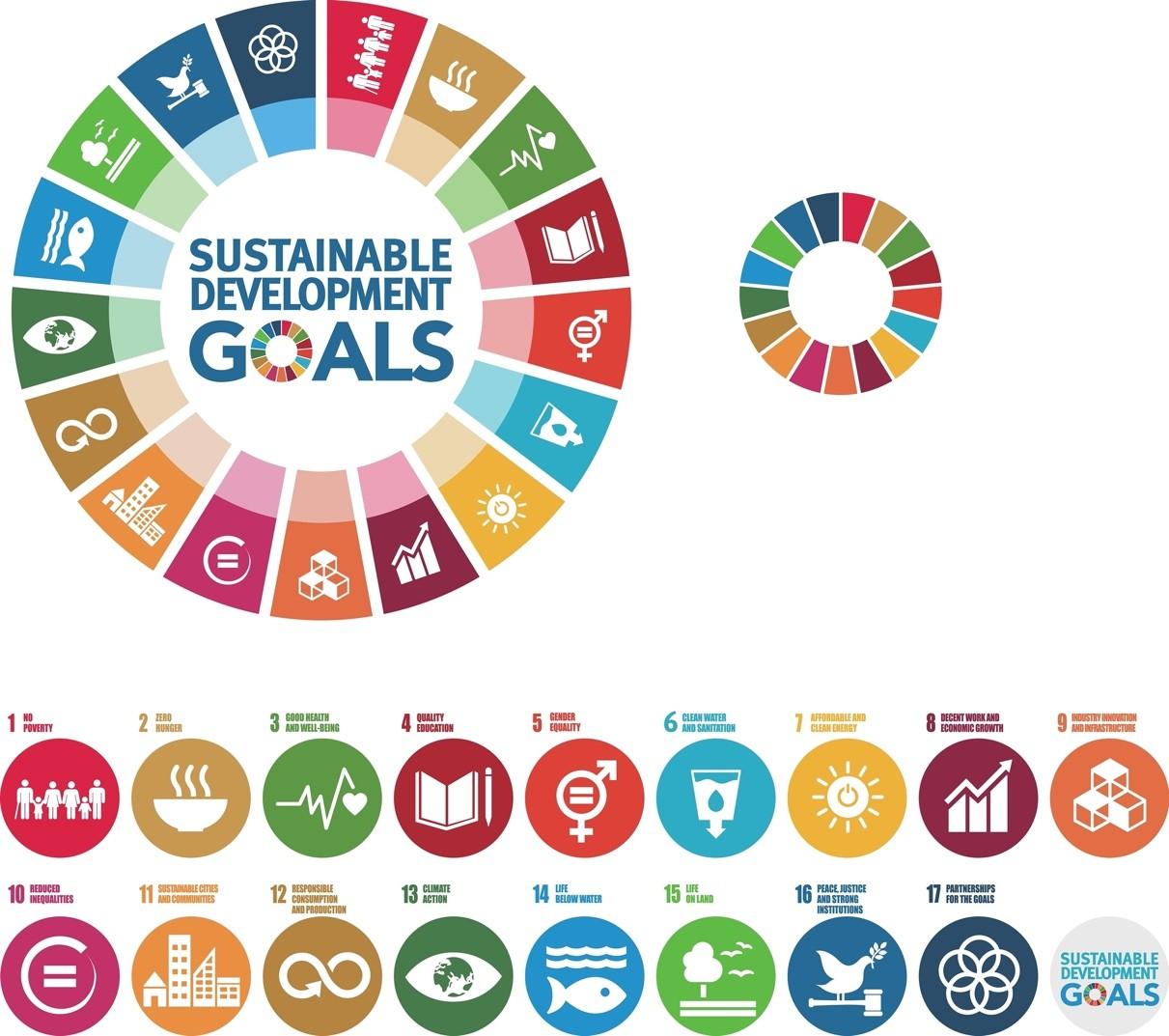
The 17 SDGs are:
1. End poverty in all its forms everywhere
2. End hunger, achieve food security and improved nutrition and promote sustainable agriculture
3. Ensure healthy lives and promote well-being for all at all ages
4. Ensure inclusive and equitable quality education and promote lifelong learning opportunities for all
10 Steps to Become a Sustainability Professional - Dr. Mohammed S. Al-Surf
32
5. Achieve gender equality and empower all women and girls
6. Ensure availability and sustainable management of water and sanitation for all
7. Ensure access to affordable, reliable, sustainable and modern energy for all
8. Promote sustained, inclusive and sustainable economic growth, full and productive employment and decent work for all
9. Build resilient infrastructure, promote inclusive and sustainable industrialization and foster innovation
10. Reduce inequality within and among countries
11. Make cities and human settlements inclusive, safe, resilient and sustainable
12. Ensure sustainable consumption and production patterns
13. Take urgent action to combat climate change and its impacts
14. Conserve and sustainably use the oceans, seas and marine resources for sustainable development
15. Protect, restore and promote sustainable use of terrestrial ecosystems, sustainably manage forests, combat desertification, halt on biodiversity loss
16. Promote peaceful and inclusive societies for sustainable development, provide access to justice for all and build effective, accountable institutions at all levels
17. Strengthen the means of implementation and revitalize the Global Partnership for Sustainable Development.
Sustainable development has been defined in many ways, but the most frequently quoted definition is from Our Common Future, also known as the Brundtland Report: "Sustainable development is development that meets the needs of the present without compromising the ability of future generations to meet their own needs." (United Nations, Our Common Future, 1987) In 2015, all United Nations Member States adopted the 2030 Agenda for Sustainable Development. The 2030 Agenda consists of 17 Sustainable Development Goals (SDGs), which are a universal call to action to end poverty, protect the planet and ensure that all people enjoy peace and prosperity.
33
10 Steps to Become a Sustainability Professional - Dr. Mohammed S. Al-Surf
The SDGs build on the successes of the Millennium Development Goals (MDGs), while addressing their unfinished business. They also seek to revitalize global political commitment for sustainable development, including by establishing a set of goals that balance the three dimensions of sustainable development: economic, social and environmental.
The 17 goals cover a broad range of social and environmental issues, from ending poverty and hunger to ensuring clean energy and gender equality. The SDGs are an ambitious yet achievable blueprint for a better world that puts people first, and they are now the world's foremost guiding force for sustainable development.
At the heart of the 2030 Agenda for Sustainable Development are the 17 Sustainable Development Goals (SDGs), which are an urgent call for action by all countriesdeveloped and developing - in a global partnership. They recognize that ending poverty must go hand-in-hand with strategies that build economic growth and address a range of social needs including health, education, social protection, job opportunities, gender equality, water, sanitation, energy, environment and climate change.
The world has made great strides in sustainable development in recent years, but the pace of progress is not enough to meet the Sustainable Development Goals (SDGs) by 2030. To accelerate progress, it is essential to strengthen the means of implementation and revitalize the Global Partnership for Sustainable Development. The United Nations General Assembly, in its resolution 71/1 on "Transforming our world: the 2030 Agenda for Sustainable Development", called for a comprehensive review in 2019 of the progress made in implementing the 2030 Agenda and identified means of implementation and global partnership as one of five key priorities for the review. The Secretary-General's report on this issue will contribute to the comprehensive review by providing Member States with an opportunity to share their experiences and best practices on strengthening the means of implementation and revitalizing global
10 Steps to Become a Sustainability Professional - Dr. Mohammed S. Al-Surf
34
partnerships. It will also inform deliberations on how best to scale up efforts to achieve the SDGs over the next decade.
In the following sections, I will discuss the most important and relevant SDGs to ensuring that a Sustainable Built Environment can be achieved by 2030.
10 Steps to Become a Sustainability Professional - Dr. Mohammed S. Al-Surf
35
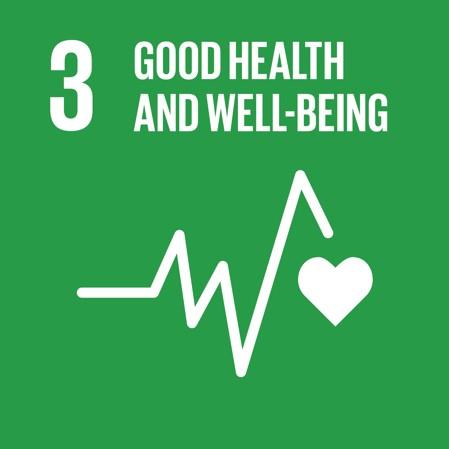
Health is a fundamental human right and a key to achieving sustainable development. It is essential for human health and wellbeing at every stage of life, from birth to old age. Good health enables children to learn and grow, adults to be productive and earn an income, and older people to lead full lives with dignity. However, poor health can lead to poverty and jeopardize the ability of individuals, families, and countries to prosper. Globally, more than 800 million people do not have access to clean water, and 2.4 billion people lack basic sanitation facilities—conditions that foster the spread of disease. In addition, close to 3 billion people do not have access to clean cooking fuels or technologies—a leading cause of indoor air pollution and a major risk factor for noncommunicable diseases (NCDs), such as heart disease, stroke, cancer, diabetes, and chronic respiratory diseases.
In line with the SDGs, WHO is committed to ensuring healthy lives and promoting well-being for all at all ages. Good health is fundamental to human happiness and well-being. It also makes an important contribution to economic progress, as healthy populations live longer, are more productive, and save more money. Despite remarkable progress over the last few decades in improving health globally – including significant reductions in child mortality rates – about 100 million people were pushed into extreme poverty between 1990 and 2010 because they had to spend substantial amounts of money on health care. Every day almost 16,000 children die before their fifth birthday from largely preventable causes such as pneumonia or diarrhoea. The world will not meet the SDG goal of universal health coverage without addressing these inequities: WHO’s work focuses on making quality health services affordable and accessible to everyone – wherever they live and whatever their economic status is
10 Steps to Become a Sustainability Professional - Dr. Mohammed S. Al-Surf
36
SDG 3
There is no magic pill when it comes to maintaining good health and well-being throughout our lives. However, making small lifestyle changes can have a big impact. Here are some simple tips to help you keep your mind and body healthy at any age:
1. Eat a nutritious diet: A balanced diet is essential for good health at any age. Make sure to include plenty of fruits, vegetables, whole grains, and lean protein in your daily meals.
2. Stay active: Regular physical activity helps to keep your body strong and your mind sharp. It’s never too late to start exercising, so find an activity that you enjoy and make it part of your daily routine.
3. Get plenty of sleep: Getting enough rest is crucial for both physical and mental health. Most adults need around 7-8 hours of sleep per night.
4. Take breaks: When you’re feeling overwhelmed or stressed, take a few minutes to relax and rejuvenate. Take a hot bath, read your favorite book, or take a walk outdoors.
5. Connect with others: Spending time with loved ones is a great way to reduce stress and promote positive emotions. Whether you stay in touch via text, social media, or in person, quality time with those you care about is always valuable. (United Nations, Transforming our world: the 2030 Agenda for Sustainable Development, 2015)
37
10 Steps to Become a Sustainability Professional - Dr. Mohammed S. Al-Surf
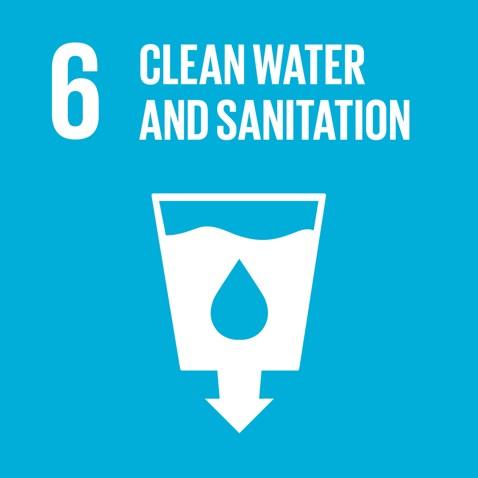
Water is one of the most essential natural resources. It is a key ingredient for sustaining life and supporting economic development. Despite this, billions of people around the world do not have access to safe water and sanitation. This has serious implications for public health, as well as social and economic development. Ensuring availability and sustainable management of water and sanitation for all is therefore a top priority for governments, businesses and communities worldwide. There are many ways to achieve this, but it requires a concerted effort from all stakeholders. Only by working together can we hope to provide clean water and sanitation for everyone, now and in the future.
The United Nations estimates that by 2025, 1.8 billion people will be living in areas where water is scarce. Water is essential for life – there is no substitute for it. Yet, today, billions of people do not have access to clean water and sanitation. This has major consequences for public health, livelihoods and the environment. Sustainable development cannot be achieved without addressing the water and sanitation crisis. Ensuring availability and sustainable management of water and sanitation for all is an integral part of the Sustainable Development Goals (SDGs).
There are many reasons why water and sanitation access is so low in many parts of the world. Poverty is a major factor, as poor people often live in areas with limited or no access to clean water and sanitation facilities. Lack of infrastructure is another challenge, as is weak governance and institutions. Climate change is also a significant factor, as it can lead to more frequent and intense floods or droughts. Water scarcity already affects four out of every 10 people worldwide and is projected to rise to half of
10 Steps to Become a Sustainability Professional - Dr. Mohammed S. Al-Surf
38
SDG 6
the global population by 2030. If we don’t act now, the number of people facing severe water stress could increase from 3.6 billion today to 5.7 billion in 2050.
Addressing the water and sanitation crisis requires a concerted effort from all sectors of society. Governments must invest in infrastructure and governance, businesses must adopt sustainable practices, and individuals must change their consumption habits. Only by working together can we hope to achieve the SDG target of ensuring availability and sustainable management of water and sanitation for all by 2030.
Water is essential for life. It is a fundamental human right, and access to safe water and sanitation is critical to achieving many of the Sustainable Development Goals. Yet, billions of people still lack access to these basic services. Water availability is becoming an increasingly pressing issue as a result of climate change, with droughts and floods becoming more common in many regions. This puts even greater pressure on already strained water resources. While technological solutions can help increase water availability, it is also important to focus on reducing demand through efficient use and reuse of water. Sustainable management of water resources is essential to ensuring that all people have access to safe water now and in the future.
We must take action to protect and restore our freshwater ecosystems, so that they can continue to provide the many benefits they offer. This includes ensuring that wastewater is properly treated before being released back into the environment. We all have a role to play in ensuring that everyone has access to clean water and sanitation. Let's make this a priority in our fight for a sustainable future for all. (United Nations, Transforming our world: the 2030 Agenda for Sustainable Development, 2015)
10 Steps to Become a Sustainability Professional - Dr. Mohammed S. Al-Surf
39

Sustainable development Goal 7 is Ensure access to affordable, reliable, sustainable and modern energy for all. This goal has the target of achieving universal access to affordable, reliable and modern energy services by 2030. Sustainable energy is a rapidly growing industry with the potential to create millions of jobs and lift millions more out of poverty. It is also an essential part of the effort to combat climate change.
SDG7 has an ambitious target of ensuring access to affordable, reliable, sustainable and modern energy for all by 2030. This is critical to achieving the other SDGs as energy lies at the nexus of so many development challenges. It is essential for powering homes, hospitals, schools and businesses; for driving economic growth; and for mitigating and adapting to climate change. Achieving SDG7 will require a massive increase in investment in renewable energy sources such as solar, wind and hydropower. It will also require improvements in energy efficiency, which accounts for two-thirds of global emissions reductions by 2030. Policies that enable a just transition to clean energy systems that create decent work and quality jobs will be critical to success.
There are many energy poverty solutions, but which one is right for you? When it comes to energy poverty, there is no one-size-fits-all solution. But there are a number of options available that can help ensure access to affordable, reliable, sustainable and modern energy for all. One option is to develop off-grid renewable energy solutions. This can be done through a variety of means, such as solar, wind or hydro power. Off-
40
10 Steps to Become a Sustainability Professional - Dr. Mohammed S. Al-Surf SDG 7
grid solutions can be particularly helpful in rural areas where the grid is not accessible or reliable.
Another option is to develop microgrids. Microgrids are small-scale power grids that can operate independently from the main grid. They can be used to provide power to specific communities or regions, and can be tailored to meet the specific needs of those areas. A third option is to improve energy efficiency. This can be done through a variety of measures, such as insulation, improved cookstoves and LED lighting. Improving energy efficiency can help reduce overall energy consumption and costs.
All of these options have the potential to help reduce energy poverty and improve access to affordable, reliable, sustainable and modern energy for all. (United Nations, Transforming our world: the 2030 Agenda for Sustainable Development, 2015)
10 Steps to Become a Sustainability Professional - Dr. Mohammed S. Al-Surf
41
SDG 8
Sustained, inclusive and sustainable economic growth is essential for achieving full employment and decent work for all. Promoting such growth requires macroeconomic policies that are conducive to strong private sector investment, productivity-enhancing structural reforms and investments in human capital. In this regard, it is essential to create an enabling environment for businesses, including small and medium enterprises, and to invest in infrastructure.
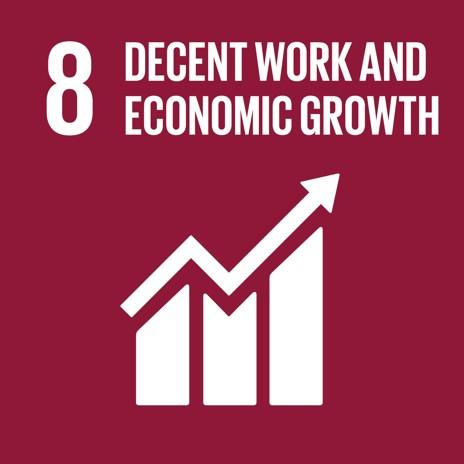
Labour market policies also play an important role in promoting sustained, inclusive and sustainable economic growth. Active labour market programmes can help people find decent jobs by providing them with the skills they need to succeed in the labour market. Social protection programmes can also help reduce poverty and inequality, while ensuring that everyone can participate fully in society and the economy.
The world economy is increasingly interconnected, and sustained economic growth is essential for lifting people out of poverty and promoting shared prosperity. Inclusive and sustainable economic growth creates opportunities for all, including women and youth, and supports environmental sustainability. Decades of experience have shown that countries that are open to trade and investment tend to grow faster and create more jobs than those that are not. Trade can be an important driver of inclusive growth by providing opportunities for small businesses and entrepreneurs to access new markets. Inclusive and sustainable economic growth is also essential for achieving the Sustainable Development Goals (SDGs). The SDGs call for action to end poverty, protect the planet, and ensure that all people enjoy peace and prosperity. To achieve these goals, we need to promote sustained, inclusive, and sustainable economic
10 Steps to Become a Sustainability Professional - Dr. Mohammed S. Al-Surf
42
growth. (United Nations, Transforming our world: the 2030 Agenda for Sustainable Development, 2015)
10 Steps to Become a Sustainability Professional - Dr. Mohammed S. Al-Surf
43
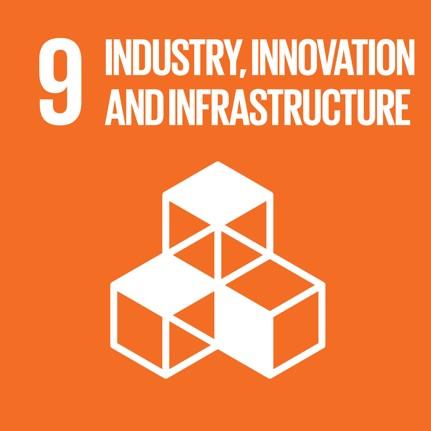
The United Nations' Sustainable Development Goal 9 is to "build resilient infrastructure, promote inclusive and sustainable industrialization and foster innovation." In order to achieve this, countries must invest in infrastructure that can withstand climate change and other shocks, while also promoting economic growth. This means investing in renewable energy, green buildings, smart cities and digital technologies. It also means supporting small businesses and entrepreneurs, who are key to driving innovation.
As the world progresses, it is important to build resilient infrastructure in order to maintain a high quality of life for all. This means creating systems that can withstand shocks and stresses, whether they be natural disasters or economic downturns. It also means promoting inclusive and sustainable industrialization, which gives everyone a chance to participate in and benefit from economic growth. Finally, it is important to foster innovation, which helps us find new and better ways to do things. All of these things are interconnected, and by working on all of them together, we can build a stronger, more resilient world for everyone.
The world is increasingly interconnected and interdependent. Rapid changes in technology and global economic conditions have created new opportunities and challenges for countries, businesses and people. To seize the opportunities and meet the challenges of this rapidly changing world, we need resilient infrastructure, inclusive and sustainable industrialization, and innovation. Resilient infrastructure is critical to sustaining economic growth and development. It enables countries to withstand shocks, respond effectively to emergencies, and continue to function in the
10 Steps to Become a Sustainability Professional - Dr. Mohammed S. Al-Surf
44
SDG 9
face of adversity. Inclusive and sustainable industrialization creates jobs, spurs economic growth, and improves lives. Innovation is essential for finding new solutions to old problems and developing new technologies that can improve our lives. (United Nations, Transforming our world: the 2030 Agenda for Sustainable Development, 2015)
10 Steps to Become a Sustainability Professional - Dr. Mohammed S. Al-Surf
45
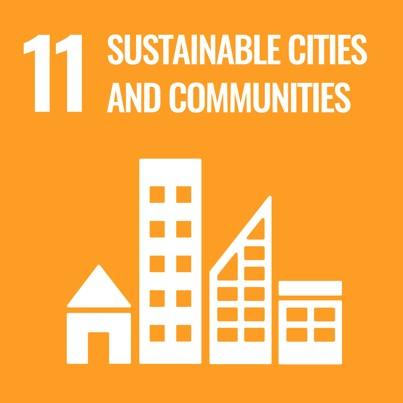
The United Nations' Sustainable Development Goal 11 includes a target to "Make cities and human settlements inclusive, safe, resilient and sustainable." This goal recognizes the importance of urban areas in promoting sustainable development. It also highlights the need for action to address the challenges faced by cities, including those related to climate change, natural disasters, and access to essential services.
In order to achieve this goal, it is necessary to consider a number of factors, including urban planning, transportation, housing, waste management, and disaster risk reduction. It is also important to ensure that all members of society have access to opportunities and services within cities. This includes ensuring that women, children, older persons, persons with disabilities, and other vulnerable groups are not left behind. Achieving Sustainable Development Goal 11 will require a concerted effort by all stakeholders at the local, national, and international levels.
Cities and human settlements around the world are facing increasing challenges. To make them more inclusive, safe, resilient and sustainable, it is important to focus on four key areas:
1. Infrastructure and basic services: Cities need reliable infrastructure and basic services, such as water, sanitation, electricity and transportation, to function properly.
2. Economic development: A thriving economy is essential for a city to be livable and sustainable.
10 Steps to Become a Sustainability Professional - Dr. Mohammed S. Al-Surf
46
SDG 11
3. Social inclusion: All citizens should feel safe and included in their city, regardless of their background or identity.
4. Environmental protection: Cities must protect their environment, including air quality, green space and biodiversity. (United Nations, Transforming our world: the 2030 Agenda for Sustainable Development, 2015)
10 Steps to Become a Sustainability Professional - Dr. Mohammed S. Al-Surf
47
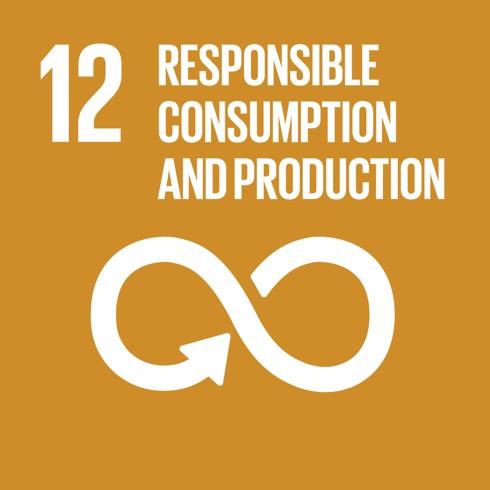
The UN’s 2030 Agenda has called on all nations to ensure sustainable consumption and production patterns. To achieve this, nations must take steps to promote sustainable lifestyles, including education and awarenessraising campaigns that engage all sectors of society. In addition, policies and regulations are needed to support the shift to sustainable patterns of consumption and production. Governments, businesses, and consumers all have a role to play in achieving SDG 12. Together, we can create a more sustainable future for all.
The United Nations Sustainable Development Goal 12 is to ensure sustainable consumption and production patterns. It has targets to halve per capita global food waste at the retail and consumer levels and reduce food losses along production and supply chains, including post-harvest losses. Sustainable consumption and production is about promoting resource and energy efficiency, sustainable infrastructure, and providing access to basic services, green jobs and a better quality of life for all.
It is important to ensure sustainable consumption and production patterns in order to protect our environment. There are a number of ways to do this, including reducing our consumption of resources, recycling and reuse of materials, and using renewable energy sources. One way to reduce our consumption of resources is to simply use less. This can be done by using energy-efficient appliances, insulating our homes, and driving less. We can also recycle and reuse materials instead of throwing them away. This helps to conserve resources and prevent pollution. Finally, we can switch to renewable energy sources such as solar and wind power. Making these changes will help to ensure sustainable consumption and production patterns and protect our
48
10 Steps to Become a Sustainability Professional - Dr. Mohammed S. Al-Surf SDG 12
10 Steps to Become a Sustainability Professional - Dr. Mohammed S. Al-Surf environment for future generations. (United Nations, Transforming our world: the 2030 Agenda for Sustainable Development, 2015)
49
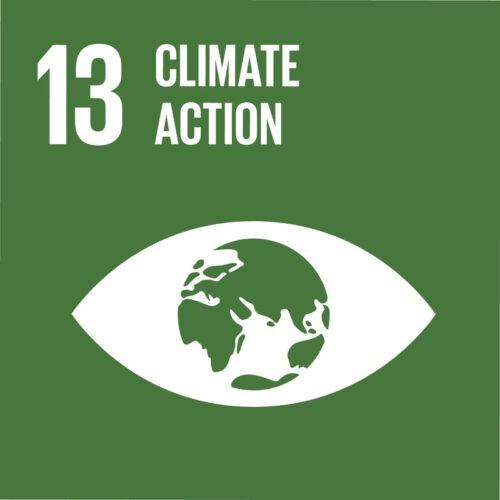
Climate change is one of the most pressing issues of our time. If we do not take urgent action to combat it, we will face dire consequences. Climate change is already causing extreme weather events that are costing lives and destroying livelihoods. It is also making it harder for people to access clean water and air, and exacerbating poverty and inequality. We must urgently transition to a low-carbon economy and put an end to deforestation. We must also invest in resilience-building measures, so that communities can better withstand the impacts of climate change. It is imperative that we act now. If we don't, we will be condemning future generations to a world that is increasingly inhospitable to life.
There is now overwhelming evidence that climate change is happening, and it is happening faster than we thought. The time for action is urgent. We must take immediate steps to reduce our emissions of greenhouse gases, and we must also prepare for the impacts of climate change that are now inevitable. Delaying action will only make the problem worse and will cause more suffering, especially for the most vulnerable people on our planet. It is time for us to act, for the sake of our planet and for future generations.
As the world grapples with the CO2 emissions from human endeavors, it becomes more urgent to consider how our built environment affects the climate. The process of photosynthesis helps to offset our carbon footprint, but as cities expand and sprawl outward, there is less green space for plants to convert sunlight into oxygen. In addition, the heat island effect caused by urbanization can lead to higher temperatures in metropolitan areas. As summers become hotter and longer, the demand for air
10 Steps to Become a Sustainability Professional - Dr. Mohammed S. Al-Surf
50
SDG 13
conditioning will increase, straining energy resources. There is an opportunity to mitigate these effects through thoughtful design of our built environment. By reducing wasted space and promoting green roofs and solar panels, we can make a difference in the fight against climate change. With responsible planning, we can create cities that are not only livable but also sustainable. (United Nations, Transforming our world: the 2030 Agenda for Sustainable Development, 2015)
10 Steps to Become a Sustainability Professional - Dr. Mohammed S. Al-Surf
51
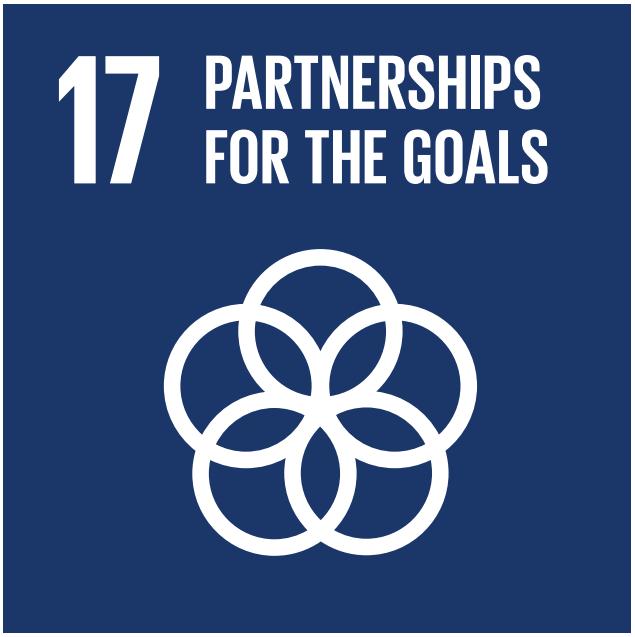
The high-level political forum on sustainable development is the central United Nations platform for reviews of progress made in the implementation of the 2030 Agenda for Sustainable Development and its Sustainable Development Goals. The Forum provides an opportunity for all States to report on their progress, share best practices and challenges encountered in the implementation process, and address means of implementation and revitalization of the global partnership for sustainable development.
The Power of Partnerships When it comes to making progress on the Sustainable Development Goals (SDGs), it is clear that no one organization or government can do it alone. It will take a global partnership for sustainable development to make sure that we reach these goals by 2030. There are many examples of successful partnerships that have made a difference in the world, and we need to build on these successes to achieve the SDGs. One example is the Global Partnership for Education (GPE), which brings together donors, governments, civil society organizations, and the private sector to invest in education. The GPE has helped millions of children get access to quality education and has made progress towards achieving SDG 4 (quality education for all).
Another example is the Global Alliance for Clean Cookstoves, which is working to increase access to clean and efficient cookstoves and fuels in order to improve health, save lives, and combat climate change. The Alliance has brought together over 1,000 partners from across the globe to achieve this goal. These are just two examples of what can be achieved when we work together towards a common goal. The SDGs provide us with a framework for doing just that – for coming together as a global
10 Steps to Become a Sustainability Professional - Dr. Mohammed S. Al-Surf
52
SDG 17
community to end poverty, protect the planet, and ensure that all people can live prosperous and fulfilling lives.
The world is facing many daunting challenges that require us to come together and take action. Sustainable development is one of the most pressing issues of our time, and it's one that we can only address through global partnership. The United Nations Sustainable Development Goals (SDGs) provide a framework for countries to work together to end poverty, protect the planet, and ensure prosperity for all. The Global Partnership for Sustainable Development brings together governments, businesses, civil society, and other stakeholders to take action on the SDGs. We believe that sustainable development is essential for the well-being of people and Planet Earth, and that it is achievable if we work together. Join us in working towards a more sustainable future! (United Nations, Transforming our world: the 2030 Agenda for Sustainable Development, 2015)
10 Steps to Become a Sustainability Professional - Dr. Mohammed S. Al-Surf
53
The Need for Sustainability Professionals

The world is changing. The way we produce and consume goods and services is not sustainable. We are depleting our natural resources at an alarming rate, polluting our air and water, and causing climate change. Sustainability professionals are needed to help organizations and businesses develop and implement strategies to become more sustainable.
Sustainability professionals have a unique skillset that combines technical knowledge with business acumen and a passion for environmental protection. They use their skills to improve organizational performance while reducing environmental impacts. By working with businesses, governments, and non-profit organizations, sustainability professionals can help create a more sustainable world.
10 Steps to Become a Sustainability Professional - Dr. Mohammed S. Al-Surf
54
The demand for sustainability professionals is growing rapidly as organizations look to become more eco-friendly and reduce their environmental impacts. With the need for a sustainable future becoming increasingly urgent, organizations are looking to hire individuals with the knowledge and skills to implement sustainability initiatives. The roles of these professionals are varied, ranging from research and development to operations and communications.
Sustainability professionals have an important role in helping companies develop strategic plans that reduce their environmental footprint while increasing efficiency and profitability. These professionals help companies identify areas where they can reduce their energy consumption, waste production, water usage, and emissions. They also work with business leaders to set targets for reducing emissions, promoting renewable energy use, and improving resource management.
Additionally, sustainability professionals can develop strategies for improving the social well-being of employees by ensuring their health and safety in the workplace. With the increasing need for sustainable solutions in both private and public sectors, there is a growing demand for sustainability professionals who are experienced in developing and implementing responsible practices. To meet this demand, organizations are beginning to invest in training programs that provide individuals with the knowledge and skills necessary to be successful as a sustainability professional.
Furthermore, universities around the world are offering degree programs that focus on sustainability topics such as green building design or renewable energy technology. These programs create a pool of talent that will be well-prepared to tackle current environmental challenges. As we move into a future of increased environmental responsibility, businesses will continue to rely on sustainability professionals to ensure they remain competitive while meeting their commitments to corporate social responsibility goals. The growth of this profession means that now is an excellent time
10 Steps to Become a Sustainability Professional - Dr. Mohammed S. Al-Surf
55
to consider pursuing a career as a sustainable expert – it’s an opportunity that won’t be around forever.
10 Steps to Become a Sustainability Professional - Dr. Mohammed S. Al-Surf
56
The Benefits of Being a Sustainability Professional
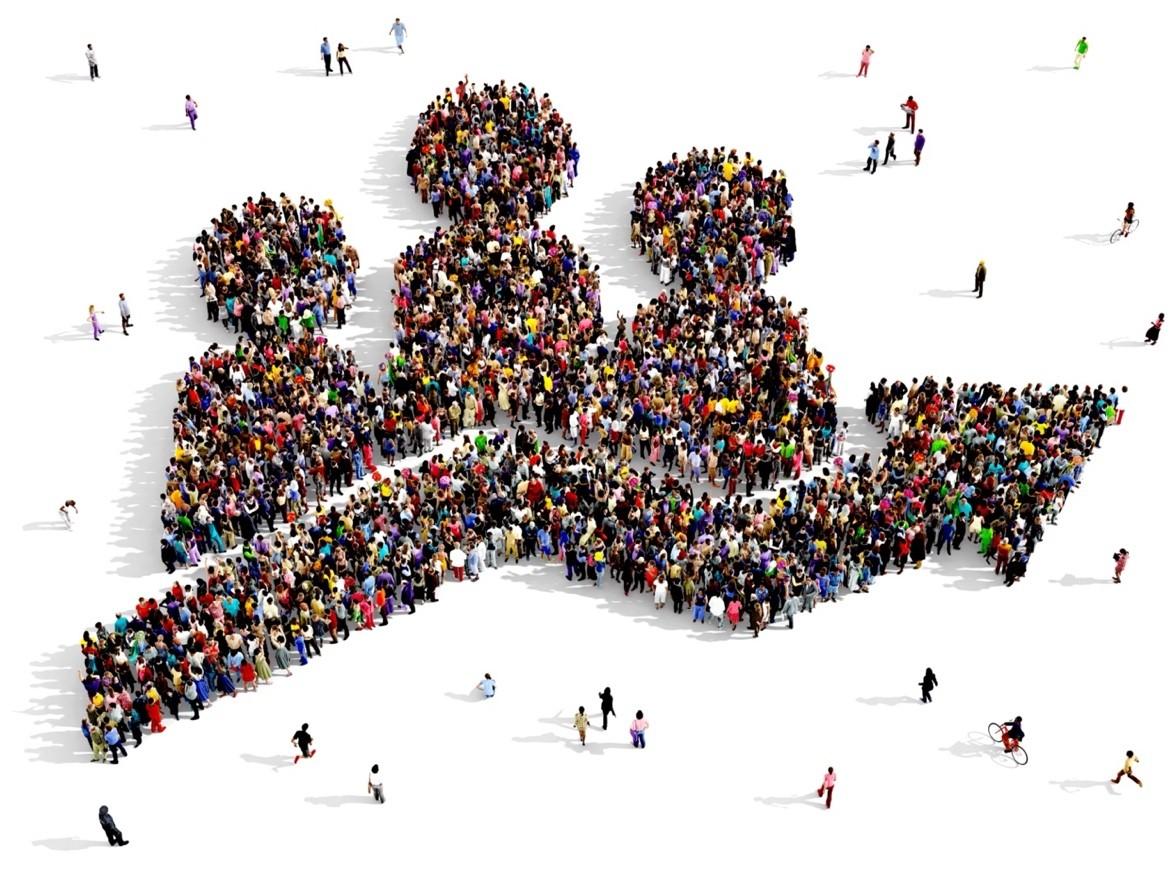
The benefits of pursuing a career in sustainability are numerous. As a sustainability professional, you can have an impact on the world and help make it a better place. Not only will you be well-positioned to promote green initiatives and sustainable practices, but you’ll also gain valuable skills that can be applied to other areas of your life. Here are just a few of the benefits you can enjoy by pursuing this rewarding career:
1. A Sense of Purpose: Becoming a sustainability professional gives you an opportunity to make a positive difference in the world and contribute to meaningful change that has tangible results. This sense of purpose makes pursuing this profession incredibly rewarding for many people.
10 Steps to Become a Sustainability Professional - Dr. Mohammed S. Al-Surf
57
2. Professional Growth: Working in sustainability requires innovative thinking, creativity, and problem-solving skills – all qualities that employers often look for when hiring new staff members. These skills will not only help you excel as a sustainability professional but also give you an edge over other candidates when looking for jobs outside the field.
3. Job Security: With environmental concerns becoming increasingly important, the demand for skilled professionals with expertise in sustainability is likely to remain high for years to come. This means that those who pursue this career path will likely have job security over the long-term.
4. Financial Rewards: Sustainability professionals can often command higher salaries than those working in other industries due to their specialized knowledge and expertise. This can lead to higher earnings potential both now and down the line as your career progresses.
5. Networking Opportunities: Pursuing a career in sustainability opens up many opportunities for networking with like-minded individuals who share your passion for making the world a greener place to live in. You’ll have access to conferences, workshops, and seminars where you can learn from experts and build relationships with potential employers or collaborators who could prove invaluable down the road.
For the environment, having a professional in place ensures that sustainability initiatives are properly implemented and long-term goals are achieved. From an economic perspective, hiring a sustainability professional can help companies reduce costs by minimizing energy consumption, water use, and waste generation. With their expertise in green building design and energy efficiency strategies, they can also help companies reduce their overall environmental impact.
Additionally, sustainability professionals can help companies identify new opportunities to be more sustainable. This could include finding alternative sources of
58
10 Steps to Become a Sustainability Professional - Dr. Mohammed S. Al-Surf
renewable energy or reducing emissions through more efficient practices. For businesses looking to increase their customer loyalty, having a sustainability professional on board can be extremely beneficial. Customers want to know that the companies they buy from prioritize the environment and take steps to reduce their impact.
With a sustainability expert in place, businesses can communicate these efforts and demonstrate their commitment to environmental stewardship. As customers become more aware of these efforts and appreciate them more, their loyalty will only grow. Ultimately, having a sustainability professional on board is an investment that pays off in multiple ways. Not only does it save money and increase customer loyalty, but it also helps improve the environment by decreasing carbon footprints and conserving resources. Those companies that are serious about making a positive impact should consider investing in a sustainability expert who will help them reach their long-term goals while also providing immediate benefits along the way.
When it comes to sustainability, having a professional on board can make all the difference. Having a sustainability professional in your organization brings with it many advantages from improved efficiency and cost savings to increased customer satisfaction. Here are some of the key benefits of hiring a sustainability professional for your organization:
1. Cost Savings – One of the most immediate benefits of having a sustainability professional is their ability to help you identify areas with potential for cost savings. By introducing sustainable practices such as energy-efficient lighting, green building materials, and reduced water consumption, they can help reduce overhead costs while increasing profits.
10 Steps to Become a Sustainability Professional - Dr. Mohammed S. Al-Surf
59
2. Improved Efficiency – Sustainability professionals understand the importance of resource efficiency and can help you maximize resources while reducing waste. They have experience in identifying sustainable solutions that are tailored to your specific needs and goals, helping you reach those objectives more quickly and efficiently.
3. Brand Value – A sustainability professional can also help strengthen your brand value by promoting environmentally friendly practices within your organization. Customers are increasingly looking for companies that practice sustainable business practices, so having a sustainability expert on board can give them assurance that you’re making ethical choices when it comes to environmental protection.
4. Increased Employee Engagement – Another major benefit of having a sustainability professional is their ability to engage employees in sustainability initiatives. By engaging staff in green initiatives, they can help create an atmosphere where workers feel empowered to make sustainable choices both inside and outside the office environment.
Having a dedicated sustainability expert on board not only helps businesses become more eco-friendly but also brings with it various other benefits like cost savings, better efficiency, brand value and increased employee engagement. With the right person in place, businesses can work towards achieving their sustainability goals while reaping all the associated rewards!
Overall, there are countless benefits of choosing to become a sustainability professional, from gaining valuable skills that can be applied elsewhere to having job security and earning potential in an ever-growing field of work. If you’re passionate
60
10 Steps to Become a Sustainability Professional - Dr. Mohammed S. Al-Surf
about protecting our planet and making it a better place for future generations, then consider exploring what a career in sustainability could offer you today.
10 Steps to Become a Sustainability Professional - Dr. Mohammed S. Al-Surf
61
The Benefits of Hiring a Sustainability Professional
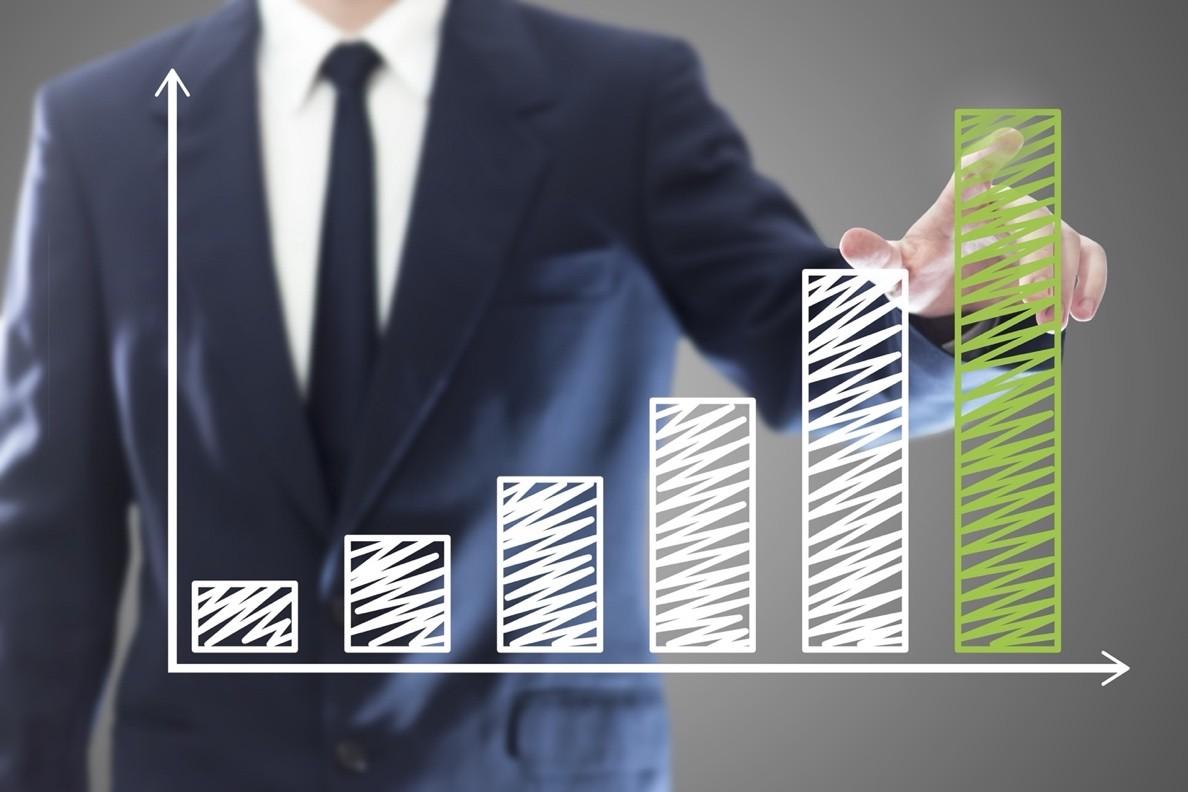
The benefits of hiring a sustainability professional are clear. By investing in an experienced and knowledgeable professional, businesses can ensure that their operations adhere to sustainable principles. Not only is this good for the planet, but it can also have a positive impact on a company’s bottom line.
Sustainability professionals are equipped with the skills and knowledge to help organizations reduce their environmental footprint, improve their energy efficiency, and meet regulatory requirements. They can also advise on long-term strategies for sustainability and develop cost-effective solutions that benefit both the environment and the business. A sustainability professional can help identify areas where resources are being wasted and provide guidance on how to make better use of them.
10 Steps to Become a Sustainability Professional - Dr. Mohammed S. Al-Surf
62
Hiring a sustainability professional can also provide an organization with valuable insights into customer sentiment regarding sustainability. This person will be able to provide feedback on how customers perceive a company's environmental credentials, which can then be used to tailor products or services accordingly. Additionally, they will be able to help companies build relationships with stakeholders by developing a sustainability policy that meets best practice standards.
But why should a company invest in a sustainability professional in the first place?
There are many reasons to hire a sustainability professional, but here are three of the most important:
1. To ensure your company is compliant with environmental regulations
2. To help your company save money by becoming more energy efficient
3. To help your company improve its public image by becoming more sustainable
Environmental regulations are becoming increasingly strict, and if your company is not compliant, you could face heavy fines. A sustainability professional can help you ensure that your company is meeting all the necessary requirements. Becoming more energy efficient can save your company a lot of money on utility bills. A sustainability professional can help you identify areas where you can make changes to reduce your energy consumption. Improving your company's public image is important for attracting and retaining customers. Consumers are increasingly interested in supporting sustainable businesses, so by becoming more sustainable, you can improve your company's reputation and bottom line.
Overall, having a knowledgeable and experienced sustainability professional on board is an invaluable asset for any business seeking to become more sustainable. By
10 Steps to Become a Sustainability Professional - Dr. Mohammed S. Al-Surf
63
investing in one, businesses can stay ahead of the competition as well as demonstrate their commitment to reducing their environmental impact.
10 Steps to Become a Sustainability Professional - Dr. Mohammed S. Al-Surf
64
The Skills of a Sustainability
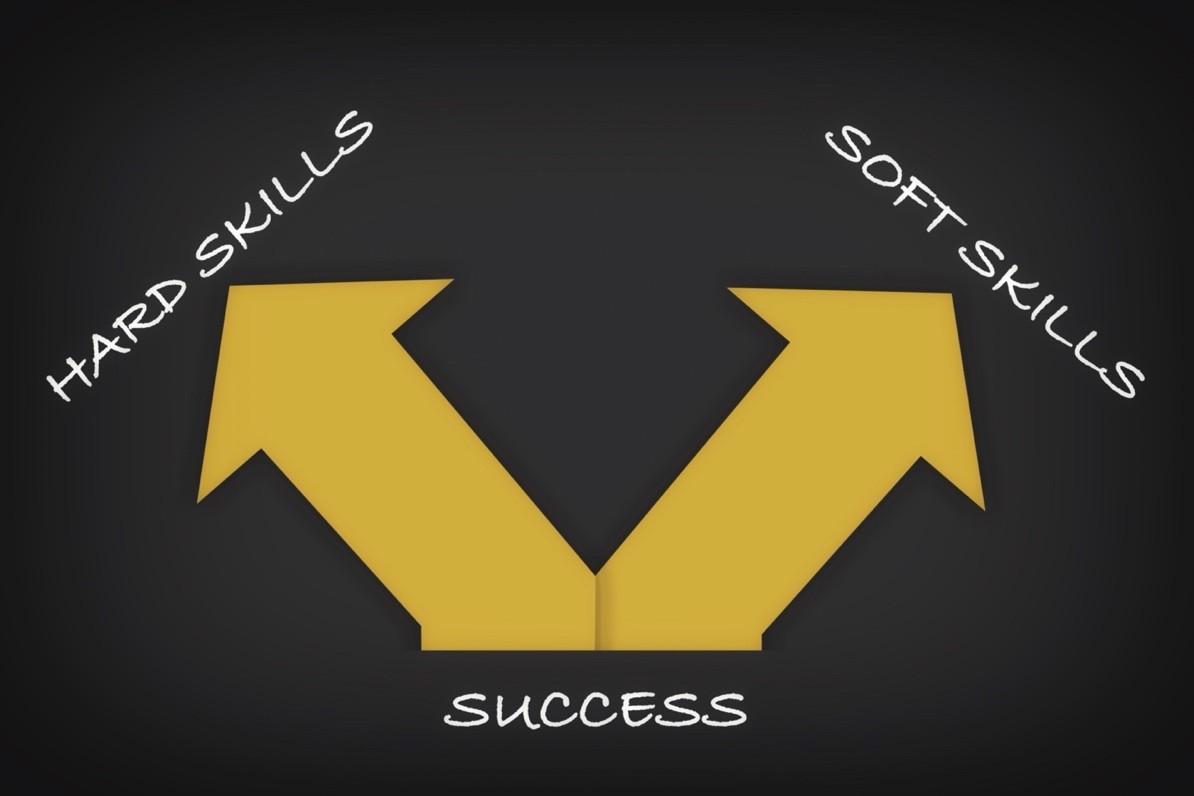
A sustainability professional is someone who has the skills and knowledge to help organizations operate in a more sustainable way. This includes reducing their impact on the environment, ensuring social and economic justice, and creating lasting value for stakeholders.
The skills of a sustainability professional go beyond just being knowledgeable about environmental issues. To be truly effective, sustainability professionals need to be able to communicate persuasively and work collaboratively. One of the most important skills for a sustainability professional is the ability to communicate persuasively. This means being able to present information in a way that will convince others to take action. Sustainability professionals need to be able to make complex environmental
10 Steps to Become a Sustainability Professional - Dr. Mohammed S. Al-Surf
65
Professional
issues understandable to a lay audience, and they need to be able to do so in a way that inspires people to take action.
Another important skill for sustainability professionals is the ability to work collaboratively. Sustainability is not something that can be achieved by one person working alone; it requires the efforts of many. Sustainability professionals need to be able to build consensus and get people with different perspectives to work together towards a common goal. This can be a challenge, but it is essential if we want to create a more sustainable world.
There are a number of different areas of specialization within sustainability, including energy, resource management, materials management, waste management, and environmental impact assessment. Each of these areas requires specific skills and knowledge to be successful. For example, energy sustainability professionals must have an understanding of renewable and non-renewable energy sources, as well as their associated risks and benefits. They must also be able to develop strategies for reducing energy consumption.
Similarly, material and waste management professionals must have an understanding of recycling processes and policies, as well as best practices for reducing waste generation. Environmental impact assessment professionals must be able to evaluate the environmental impacts of proposed projects or activities and develop strategies for minimizing these impacts. In order to be successful in any of these areas, it is important to have a broad understanding of sustainability principles and practices, as well as the ability to problem-solve creatively. Communication skills are also essential, as sustainability professionals will often need to communicate their ideas and proposals to other stakeholders.
10 Steps to Become a Sustainability Professional - Dr. Mohammed S. Al-Surf
66
There are a number of skills that are important for sustainability professionals, including:
Thinking strategically: Being able to see the big picture and understand how different factors impact each other is essential for making effective decisions about sustainability.
Analytical skills: Sustainability professionals need to be able to gather data, analyze it, and draw conclusions from it. They also need to be able to communicate their findings clearly to others.
Project management: Many sustainability initiatives involve complex projects with multiple stakeholders. Being able to effectively manage these projects is crucial for success.
Communication: Sustainability professionals need to be able to effectively communicate with a wide range of people, from business leaders to frontline employees. They need to be able to share information in a way that everyone can understand and buy into.
10 Steps to Become a Sustainability Professional - Dr. Mohammed S. Al-Surf
67
Thinking Strategically

Thinking strategically is an important skill for any sustainability professional to have. By taking a strategic approach, sustainability professionals can maximize their efforts and impact. Strategizing helps sustainability professionals create long-term plans, identify potential problems, and develop creative solutions that will drive meaningful change.
When applying their thinking strategically skills, sustainability professionals are able to think critically and analyze their current situation in order to make the most beneficial decisions for their organization or project. This means they can identify new opportunities and potential risks that could affect the success of their efforts. They can also develop strategies that will help them achieve their goals effectively while staying within budget or other resource constraints.
10 Steps to Become a Sustainability Professional - Dr. Mohammed S. Al-Surf
68
The ability to think strategically also helps sustainability professionals become more efficient and productive. They can assess the strengths and weaknesses of different approaches before deciding which one will yield the best results. This allows them to save time by avoiding unnecessary activities and focus on those actions that are most likely to produce positive outcomes.
Moreover, thinking strategically can provide valuable insights into the current state of a project or organization's sustainability efforts. It enables professionals to identify areas of improvement and take appropriate steps to enhance overall performance. Furthermore, it encourages them to consider innovative ideas that could further advance their initiatives and lead to greater success in the long run.
Overall, thinking strategically is an invaluable skill for any sustainability professional who wants to make an impact in their field. By honing these skills, they can ensure they are making informed decisions that are based on sound data and analysis rather than guesswork or intuition. This will enable them to maximize their efforts and make a meaningful difference in the world around us.
Strategic thinking skills are essential for sustainability professionals. By understanding how to think strategically, sustainability professionals can develop and implement effective plans to achieve their goals. Some key skills that are important for thinking strategically include:
• Understanding the big picture – Being able to see the forest through the trees is critical for sustainability professionals. To be successful, they need to be able to understand the interconnections between different systems and identify patterns and trends.
• Systems thinking – Sustainability professionals need to be able to think about how different elements of a system interact with each other. This includes
10 Steps to Become a Sustainability Professional - Dr. Mohammed S. Al-Surf
69
understanding feedback loops and how changes in one part of a system can impact other parts.
• Long-term thinking – Most sustainability issues require long-term solutions. To be successful, sustainability professionals need to be able to think beyond the immediate problem and consider the long-term implications of their actions.
• Creativity – Thinking creatively is important for coming up with innovative solutions to sustainability challenges. Sustainability professionals need to be able to generate new ideas and see problems from different perspectives.
• Critical thinking – Being able to critically evaluate information is essential for making sound decisions. Sustainability professionals need to be able to identify bias, assess risks and uncertainties, and weigh different options before making decisions. Developing strong strategic thinking skills is essential for any sustainability professional who wants to be successful in their field. By honing these skills, sustainability professionals can develop more effective plans and strategies for achieving their goals.
10 Steps to Become a Sustainability Professional - Dr. Mohammed S. Al-Surf
70
Analytical Skills
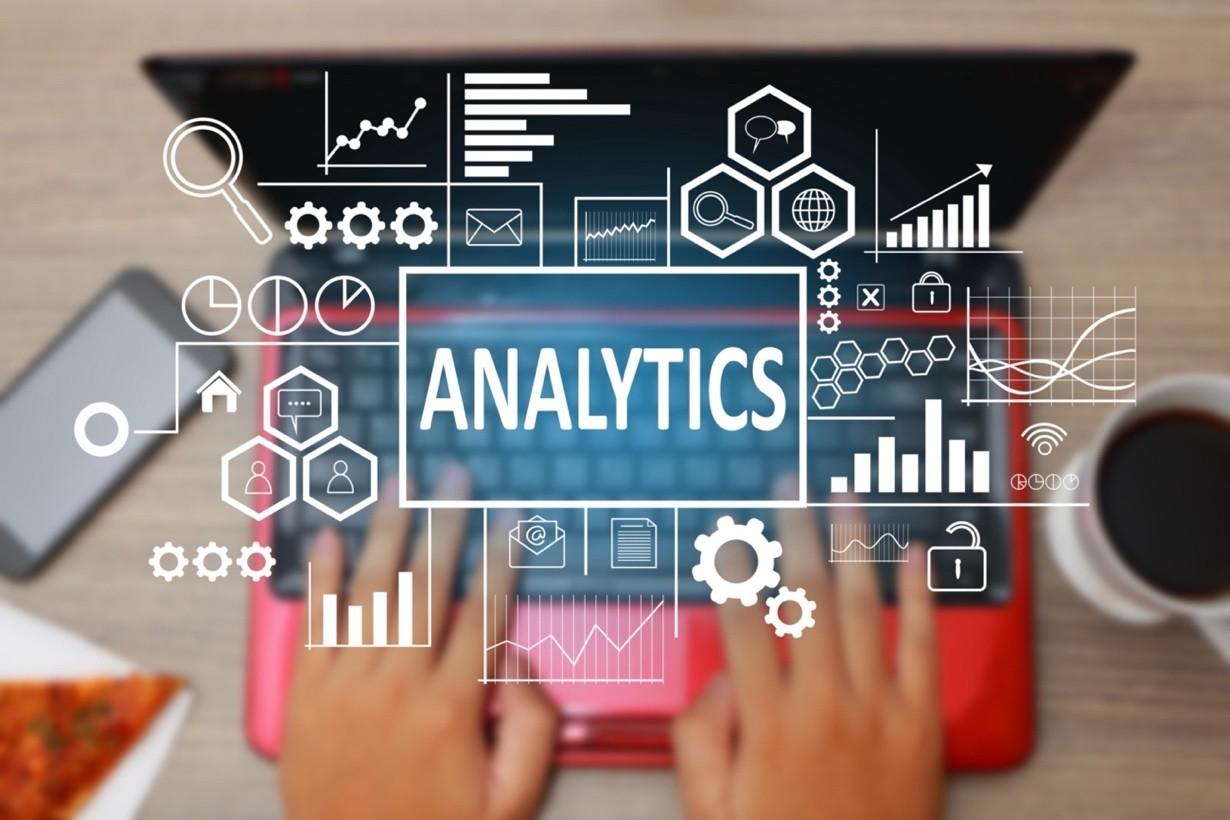
Analytical skills are a key part of the toolkit of any sustainability professional. The ability to analyze data, interpret trends, and draw conclusions is essential in order to form decisions related to sustainability initiatives. In addition, the ability to think critically and ask probing questions is necessary in order to identify potential solutions. The development of analytical skills begins with an understanding of basic data analysis techniques such as charting, graphing, and trend analysis. From there, more advanced techniques can be employed such as statistical modeling and regression analysis.
It’s also important for a sustainability professional to understand the implications of their findings in order to make well-informed decisions. In addition to being able to analyze data, it’s important for a sustainability professional to be able to develop hypotheses and draw conclusions from their findings. This means that they need to be
10 Steps to Become a Sustainability Professional - Dr. Mohammed S. Al-Surf
71
able to assess the quality of the evidence they have gathered and determine how it fits into their overall strategy for achieving sustainability goals. By developing hypotheses, it’s possible for a sustainability professional to identify potential solutions or areas for improvement that can then be tested and implemented.
Finally, analytical skills are also essential in order for a sustainability professional to communicate their findings effectively. They should be able to explain complex concepts in clear language and present compelling arguments in support of their recommendations. By doing this, they can ensure that stakeholders have all the necessary information needed in order to make informed decisions about sustainability initiatives.
10 Steps to Become a Sustainability Professional - Dr. Mohammed S. Al-Surf
72
Project Management Skills

Project management skills are essential for sustainability professionals as they have to efficiently and effectively manage projects that involve complex environmental issues. By having a strong project management approach, sustainability professionals can ensure a successful outcome of any environmental project. Project management revolves around the coordination of teams, resources and activities with the sole purpose of achieving a common goal. It requires the development of plans, setting deadlines, assigning tasks, managing budgets and working collaboratively with other stakeholders.
Sustainability professionals need to be able to make sure that all steps are taken to reach the ultimate goal of making an impact on the environment. Effective communication is also crucial in project management for sustainability professionals. They need to be able to explain their ideas clearly and concisely to other stakeholders
10 Steps to Become a Sustainability Professional - Dr. Mohammed S. Al-Surf
73
and team members in order to ensure that everyone understands what needs to be done. In addition, effective communication helps maintain relationships with key stakeholders which could be essential for getting the required support or resources needed for the project’s success. Another important skill for sustainability professionals is problem solving. This means being able to identify potential problems before they arise and then create solutions to address them quickly and effectively. This could involve finding ways to reduce costs or streamline processes in order to improve efficiency.
Finally, sustainability professionals need excellent organizational skills in order to stay on top of their projects. Good organization involves maintaining accurate records of all activities related to their projects as well as monitoring progress against set goals and deadlines. This helps them stay on track and ensure that everything is running smoothly throughout the course of their project. By having strong project management skills, sustainability professionals can ensure that their projects are successful and have a positive impact on the environment. By utilizing these skills they can increase efficiency while reducing costs, thus creating more sustainable solutions that benefit both our planet and its people in the long run.
10 Steps to Become a Sustainability Professional - Dr. Mohammed S. Al-Surf
74
Communication Skills: The Power of Tone

The ability to communicate effectively is critical for any sustainability professional. After all, part of the job is convincing others to adopt more sustainable practices. While there are many different aspects to communication, tonality is one of the most important. Simply put, tonality is the way in which something is said. It can be positive, negative, or neutral. And it can have a big impact on whether or not someone is persuaded by what you’re saying. Think about it this way: if you’re trying to convince someone to recycle more, it’s probably not going to be very effective if you sound angry or judgmental.
On the other hand, if you sound excited and optimistic about the benefits of recycling, you’re more likely to get them on board. The same goes for any other sustainable practice you’re trying to promote. If you want people to be interested in what you’re saying, it’s important to use a positive tonality. This doesn’t mean you have to be bubbly and enthusiastic all the time (although that can help). Just be sure to avoid
10 Steps to Become a Sustainability Professional - Dr. Mohammed S. Al-Surf
75
sounding like you’re lecturing or scolding. Of course, tonality isn’t everything – the content of your message is still important. But if you want people to actually listen to what you have to say, it’s worth paying attention to how you say it.
Using the right tone in communication can be a powerful way to convey your message and get results. As a sustainability professional, it is important to know how to use tonality to effectively communicate with a variety of people. Tone can be used to build relationships, gain trust, and ultimately persuade others to take action. When speaking with colleagues or clients, using a collaborative and respectful tone is essential. This type of tone helps foster an atmosphere of cooperation and understanding. It also helps create an environment where people feel comfortable expressing their opinions and ideas without feeling judged or attacked.
When speaking with stakeholders or members of the public, it is important to use a persuasive tone that emphasizes the importance of taking action on issues related to sustainability. This type of tone should be clear and concise while emphasizing why taking action is beneficial not just for the environment but for everyone involved. Finally, when communicating through written means such as emails or reports, using a professional yet friendly tone can help ensure that your message is properly interpreted. This type of tone allows you to show respect while still conveying your point in an effective manner.
Overall, the right tonality can be a great tool for any sustainability professional who wants to make sure their messages are heard and understood by all audiences. By understanding which type of tonality works best in different contexts, sustainability professionals can ensure they are effectively communicating their message while building relationships along the way.
10 Steps to Become a Sustainability Professional - Dr. Mohammed S. Al-Surf
76
The Education of a Sustainability Professional: Why it Matters
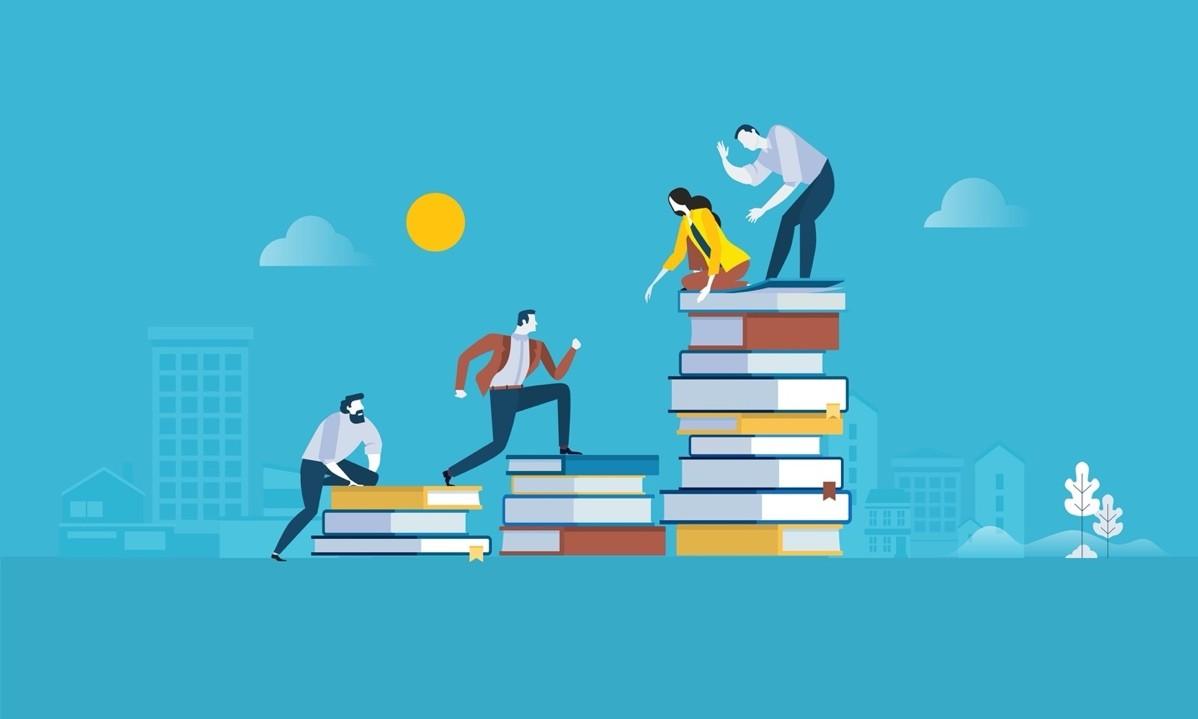
As the world becomes increasingly complex, the need for sustainability professionals who can navigate these challenges grows. A sustainability professional is someone who understands the interconnectedness of social, environmental, and economic systems and works to create solutions that balance all three. There are many ways to become a sustainability professional, but one of the most important things is to get a good education.
A sustainable future requires individuals who are equipped with the knowledge and skills to find innovative solutions to complex problems. A college education can provide students with the foundation they need to pursue a career in sustainability. But it is not just about acquiring knowledge - it is also about learning how to think critically and creatively about real-world problems. And it is about developing the
10 Steps to Become a Sustainability Professional - Dr. Mohammed S. Al-Surf
77
ability to communicate and collaborate with others who may have different perspectives.
The education of a sustainability professional is important because it prepares individuals to meet the challenges of our changing world. It gives them the skills and knowledge they need to find solutions that balance social, environmental, and economic systems. And it helps them develop the ability to think critically and creatively about real-world problems.
There are a lot of things to learn when you're first starting out as a sustainability professional. From understanding the latest trends and technologies to learning how to effectively communicate with stakeholders, there's a lot of knowledge that needs to be acquired. Luckily, there are plenty of resources available to help you on your journey. From online courses and certifications to in-person workshops and seminars, there's no shortage of ways to learn about sustainability. And with each new piece of knowledge you acquire, your skillset will become more and more valuable. So what are you waiting for? Get started today on your education as a sustainability professional.
10 Steps to Become a Sustainability Professional - Dr. Mohammed S. Al-Surf
78
The Experience of a Sustainability
Professional

As a sustainability professional, I am often asked to describe my experience. It's a difficult question to answer because the experience of sustainability is so varied and complex. It can range from the personal to the global, and it can touch on a wide range of topics including economics, politics, and ethics. The best way to understand my experience as a sustainability professional is to think about it in terms of three levels:
At the personal level, I am interested in how my own actions impact the environment.
At the community level, I am interested in how we can work together to create a more sustainable society.
And at the global level, I am interested in how we can create a more sustainable world for all life on Earth.
10 Steps to Become a Sustainability Professional - Dr. Mohammed S. Al-Surf
79
Each level requires a different kind of action and thinking, but they are all connected by a shared desire for more sustainable living. And as I've come to learn, this desire is what truly defines my experience as a sustainability professional.
As a sustainability professional, I have seen firsthand how businesses can make a positive impact on the environment and society. I believe that sustainability is not only good for the planet, but also good for business. By operating in a sustainable way, businesses can improve their bottom line, build customer loyalty, and attract top talent. There are many ways to operate sustainably. Businesses can reduce their carbon footprint, use renewable energy, or implement green building practices. They can also develop sustainable products and services, or support social and environmental initiatives. Whatever approach they take, businesses that embrace sustainability will be well positioned to succeed in the future.
The experience of a sustainability professional is one that is filled with a great sense of responsibility. This is because they are constantly working to ensure that the world around them is able to sustain itself for future generations. While this may seem like a daunting task, it is one that sustainability professionals find extremely rewarding.
As a sustainability professional, I often find myself working to persuade others to adopt more sustainable practices. This can be a difficult task, as many people are resistant to change. However, I have found that there are some effective strategies for persuading others to adopt sustainable practices. One strategy is to appeal to people's self-interest. Many people are reluctant to change their behavior because they believe it will be costly or inconvenient. However, if you can show them how sustainability will save them money or make their lives easier, they are more likely to be open to change.
Another strategy is to appeal to people's values. Many people want to do what is right for the environment but may not know how their actions impact the planet. If you can
10 Steps to Become a Sustainability Professional - Dr. Mohammed S. Al-Surf
80
help them understand how their choices affect the environment, they may be more likely to make changes that align with their values.
It is important to build relationships with those you want to influence. People are more likely to listen to someone they trust and respect. If you can develop a rapport with someone, they are more likely than strangers to heed your suggestions for change. If you want to persuade others to adopt sustainable practices, use these strategies. There are many different aspects to a sustainability professional's job. One of the most important is educating others about the importance of sustainability. This can be done in a variety of ways, such as giving presentations or writing articles.
It is also important for sustainability professionals to stay up-to-date on the latest sustainability news and research. This way, they can be sure to provide accurate information to those who are seeking it. Another important aspect of a sustainability professional's job is working with businesses and organizations to help them implement sustainable practices. This can involve anything from developing recycling programs to working on energy efficiency initiatives. Sustainability professionals often find themselves working with a variety of different people, which can be both challenging and rewarding.
Overall, being a sustainability professional is an extremely rewarding experience. It is a chance to make a real difference in the world and help ensure that future generations will be able to enjoy a healthy and sustainable planet. As a sustainability professional, you have the opportunity to make real and lasting change in the world. You have the chance to help protect our environment, create opportunities for economic growth and social progress, and improve quality of life for people around the globe.
The role of a sustainability professional can be incredibly rewarding. By taking on this role, you can help move businesses away from traditional practices that are damaging to the environment and towards more sustainable solutions that are better for our
10 Steps to Become a Sustainability Professional - Dr. Mohammed S. Al-Surf
81
planet. This shift towards sustainability is not only important for protecting our environment, but also for driving economic growth. By investing in clean energy sources like solar and wind, businesses can reduce their operational costs while creating jobs in the renewable energy sector. By taking on this role, you can also help to create more equitable societies by promoting corporate social responsibility initiatives that reduce poverty and inequality.You can also work with communities to help them access resources that will empower them to live healthier lives and lift themselves out of poverty.
Finally, as a sustainability professional you have an incredible opportunity to shape society’s understanding of sustainability and its importance. By engaging with stakeholders, raising awareness about sustainable practices, and advocating for policy change you can help to ensure that future generations have access to a healthy environment and quality of life. In short, being a sustainability professional comes with great rewards – both tangible and intangible – that make it an incredibly fulfilling career choice. From helping to protect our planet’s precious resources to creating longterm economic growth and social progress, there is absolutely no limit to what you can achieve as a sustainability professional
10 Steps to Become a Sustainability Professional - Dr. Mohammed S. Al-Surf
82
The Challenges of Being a Sustainability Professional and How to Overcome Them

As with any profession, becoming a sustainability professional is not without its challenges. It can be difficult to stay motivated when leading projects that may take years to yield tangible results, and there is an ever-changing landscape of policies and regulations. That said, there are also many rewards to being a sustainability professional that make it worth the effort.
The first step in overcoming the challenges of being a sustainability professional is to stay informed about the latest policies and regulations. Make sure to attend industry events, read relevant publications, and join professional organizations. Keeping up
10 Steps to Become a Sustainability Professional - Dr. Mohammed S. Al-Surf
83
with industry developments will help you stay ahead of the curve and anticipate potential obstacles before they arise.
Next, take time to plan out your projects from start to finish. This will help you break down long-term objectives into more manageable goals and ensure that all stakeholders are on board with the overall strategy. Planning ahead also allows you to identify potential pitfalls early on so you can find solutions before they become issues.
Finally, don’t forget to recognize your successes along the way. Celebrate small wins and reflect on lessons learned from past projects so that you can keep improving for future initiatives. Keeping track of your progress will not only help lift your spirits in tough times but also give you something positive to report back to your clients or employers. At the end of the day, the key to success as a sustainability professional lies in staying organized and focused on what you set out to achieve. With enough dedication and perseverance, even seemingly daunting tasks can be tackled with ease –bringing us one step closer towards a more sustainable future for all.
The challenges of being a sustainability professional are many and varied. From convincing businesses to change their practices to working with government officials to create policy change, sustainability professionals have their work cut out for them.
One of the biggest challenges faced by sustainability professionals is changing the way businesses operate. Businesses have been operating in the same way for decades, and it can be difficult to convince them to change their ways.
This is especially true when it comes to environmental sustainability, as businesses often see this as a cost rather than an investment. Another challenge faced by sustainability professionals is working with government officials to create policy change. Often, government officials are resistant to change and may not be supportive of sustainability initiatives. This can make it difficult to get policy changes enacted that would support sustainable practices. Overall, being a sustainability professional
10 Steps to Become a Sustainability Professional - Dr. Mohammed S. Al-Surf
84
can be a challenging but rewarding career. It requires a lot of hard work and dedication, but the rewards of making a positive impact on the planet can be worth it.
As a sustainability professional, you often find yourself facing challenges that other professionals don't. You may have to deal with difficult clients, push for change in an unsupportive environment, or struggle to get funding for projects. But despite these obstacles, there are many rewards that come from working in sustainability. You can make a difference in the world, help organizations become more sustainable, and enjoy the satisfaction of a job well done.
10 Steps to Become a Sustainability Professional - Dr. Mohammed S. Al-Surf
85
10 Steps to Become a Sustainability
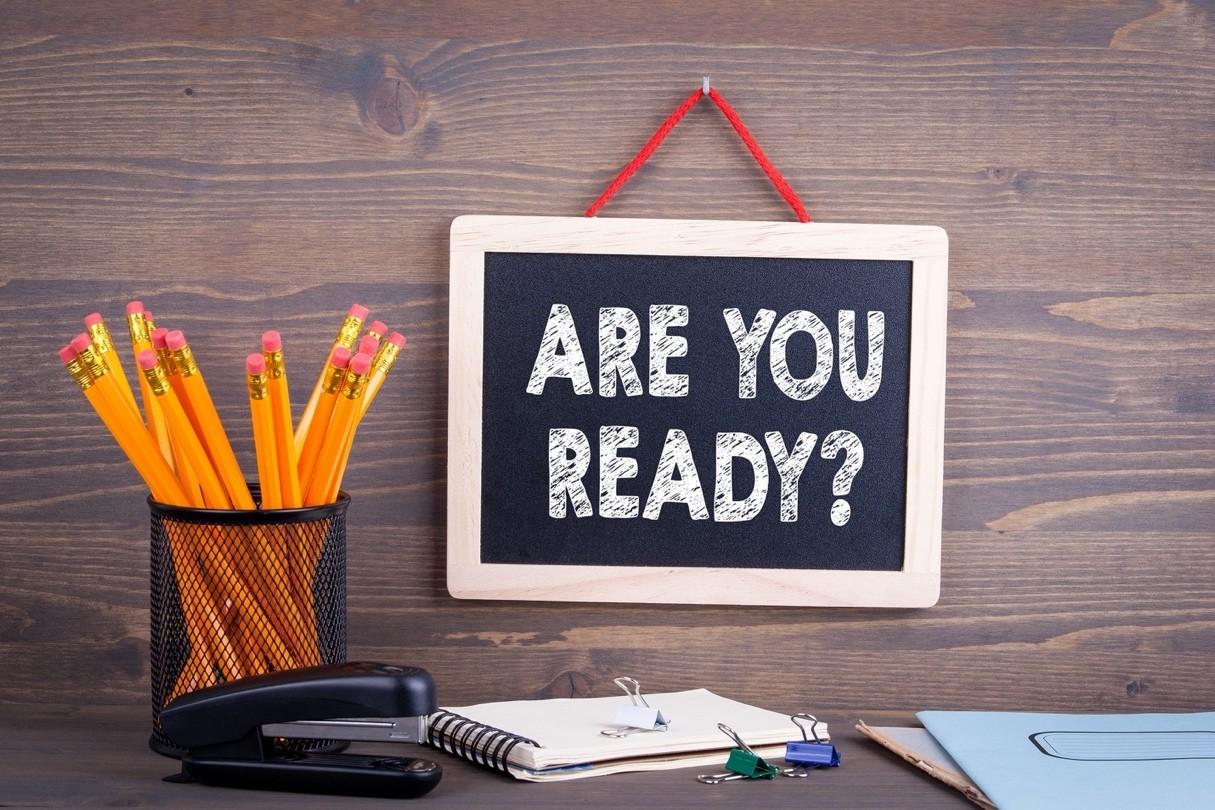
A career in sustainability is an increasingly popular and rewarding choice all across the world and across all sectors of the industry. There are numerous opportunities for those looking to make a meaningful contribution to the environment and society, as well as a financially rewarding one. However, getting started in this field is not always easy – there are several steps that need to be taken in order to ensure success. Sustainability is one of the most important issues of our time. And it's only going to become more important in the future. If you're interested in a career in sustainability, here are ten steps to get you started
10 Steps to Become a Sustainability Professional - Dr. Mohammed S. Al-Surf
86
Professional
10 Steps to Become a Sustainability Professional - Dr. Mohammed S. Al-Surf
87
1. Do Your Research

If you want to become a sustainability specialist, the first step is to do your research. There are many different ways to approach sustainability, so it’s important to find the approach that best suits your interests and skills. There are many online resources, such as blogs, articles, and websites, that can help you learn more about sustainability. You can also attend conferences and events, or even take courses on sustainable development.
When it comes to pursuing a career in sustainability, you may have a lot of different options. To make sure you choose the best one for you, it’s important to do your research and explore all of your possibilities. This is the only way to ensure that you are getting the best education and job opportunities available.
Start by looking into what type of degree or certification program would be right for you. Do you want to pursue a college degree in environmental sustainability? Or would a certificate program better suit your needs? Researching the different programs and their requirements can help you decide which one is best for you.
By taking the time to research your options and explore all available paths, you can ensure that you’re making an informed decision when it comes to pursuing a career in sustainability. Doing your due diligence now will pay off in the long run – so don’t forget this fundamental step.
88 10
Steps to Become a Sustainability Professional - Dr. Mohammed S. Al-Surf
Being interested in a career in sustainability, it's important to do your research to ensure that you have the necessary skills and knowledge to be successful. Here are three tips to help you get started:
1. Familiarize yourself with the basics of sustainability.
To be a professional in sustainability, you need to have a strong understanding of the key concepts and issues related to the field. Spend some time reading up on the basics of sustainability, including environmental science, sustainable development, and climate change. This will give you a good foundation to build upon as you further your research.
2. Identify your areas of interest.
Once you have a general understanding of sustainability, start narrowing down your focus to identify the specific areas that interest you most. Do you want to work on environmental policy? Or perhaps you're more interested in sustainable business practices? By zeroing in on your areas of interest, you'll be able to direct your research more effectively.
3. Research specific organizations and programs.
Once you know what you want to focus on, start looking into specific organizations and programs that working in those areas. What kind of work do they do? What kinds of qualifications do they look for in employees? By researching specific organizations, you'll get a better sense of what it takes to be successful in the field of sustainability.
Later in this book, I’ve listed more than 60 certifications and sources where a professional can get educated and certified in any of the well-recognized sustainability systems such as LEED, BREEAM, Fitwel, and more. So, it’s important that you
10 Steps to Become a Sustainability Professional - Dr. Mohammed S. Al-Surf
89
research what type of credential you want to be a specialist in and focus on what the market needs and where can you fill the gap and be needed anywhere you go.
10 Steps to Become a Sustainability Professional - Dr. Mohammed S. Al-Surf
90
2. Find A Mentor
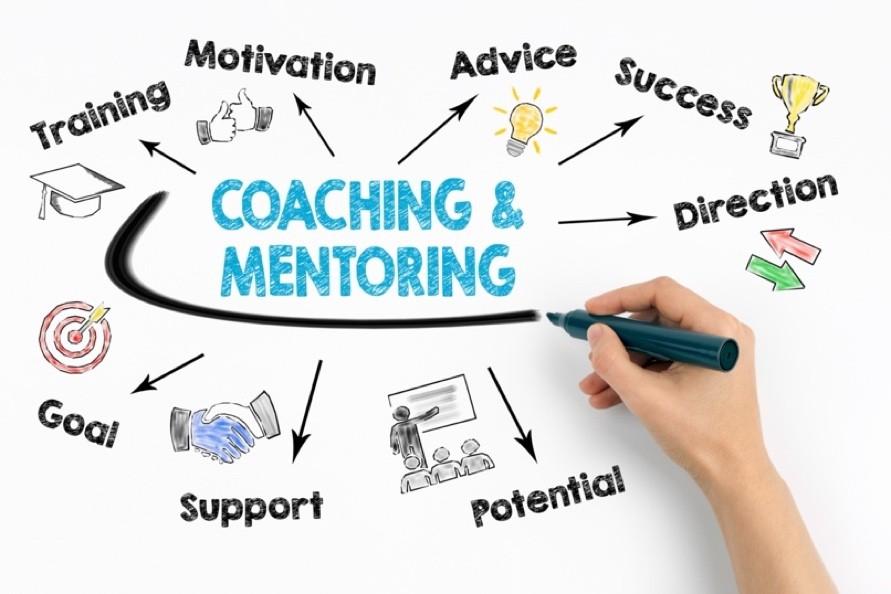
Once you’ve done your research and have a better idea of what you’d like to do, it’s time to find a mentor. A mentor can help guide you in your career and provide you with advice and support. Mentors can be found in many different places, such as online forums, professional organizations, or even through friends and family. A mentor is someone who acts as an advisor and support person for someone less experienced. Traditionally, the relationship is between an older employee and a younger one for the purpose of career development.
However, many other types of mentoring have also proven successful. Peer mentoring is where colleagues mentor each other and reverse mentoring is where the traditional mentoring relationship is flipped on its head. Regardless of the type of mentoring relationship, it’s focused on growth and development.
Having a mentor in sustainability is important for a number of reasons. First, they can help you navigate the ever-changing landscape of sustainability issues and solutions. Second, they can offer advice and guidance on how to best implement sustainable practices in your own life or business. And third, they can provide an invaluable network of contacts and resources.
But finding a good mentor is not always easy. So where do you start? Here are a few tips:
10 Steps to Become a Sustainability Professional - Dr. Mohammed S. Al-Surf
91
1. Ask around. Talk to friends, family, and colleagues who might have someone in mind.
2. Check out online directories or networks like the Sustainability Mentors Network.
3. Attend events or conferences related to sustainability. Chances are there will be someone there who can help you out.
4. Do some research online or in libraries to find experts in specific sustainability topics that interest you.
With a little effort, you should be able to find a mentor who can help you achieve your sustainability goals.
Finding a mentor can help you in many ways. Here are 10 ways a mentor can help you become the sustainability professional you dream of becoming:
1. Gain experience not shared in books
2. You're more likely to succeed with a mentor
3. Network opportunities
4. A mentor gives you reassurance
5. Provide new perspective
6. Help develop your career by setting new goals
7. Provide unbiased opinions
8. Give you constructive criticism
9. Help develop your leadership skills
10. Hold you accountable to achieve your goals
92
10 Steps to Become a Sustainability Professional - Dr. Mohammed S. Al-Surf
3. Get Experience

The next step is to get some experience in the field of sustainability. This can be done in many ways, such as working on a project, volunteering, or interning. Gaining experience will not only help you learn more about sustainability, but it will also give you the opportunity to network with other professionals.
Without the knowledge you gain from experience, you would be completely clueless about certain aspects of life. You wouldn’t understand what goes into making a successful business, or why people behave in a certain way; instead, they would seem like an enigma.
Experience allows you to build relationships. Also, Experience teaches you how to deal with different types of people. As you gain experience, you will learn how to handle different personalities – some of which may be difficult to please. You’ll also learn how to negotiate and compromise, which can come in handy when working with a team.
If you want to take your involvement in sustainability initiatives to the next level, then taking on a professional role is the way to go. This could involve working for a company or organization that specializes in sustainability practices, or taking on an internship position with a non-profit environmental organization. Not only will this give you direct experience in sustainability efforts, but it can also help you build your resume and make connections in the field.
10 Steps to Become a Sustainability Professional - Dr. Mohammed S. Al-Surf
93
You can also look for opportunities at local businesses or organizations that are looking for help with their sustainability efforts. There may be volunteer roles available that allow you to gain valuable experience while making a positive impact in your community.
Finally, if there isn’t any specific work or volunteer opportunities out there, consider reaching out to companies and organizations yourself. You never know what kind of opportunities might arise if you just ask. The more proactive and persistent you are, the more likely it is that someone will take notice and offer you a chance to get involved in something meaningful.
By taking on a professional role related to sustainability, you can quickly gain expertise, network with professionals in the field, and make meaningful contributions to the greater good. It’s a great way to make an impact and get some real-world experience in the process
Experience gives you knowledge and insight into things such as human nature, history, math concepts, and scientific theories; this kind of knowledge will give you an edge when it comes to competing in the job market. Shared below are the top 10 benefits of experience:
1. Experience Makes You More Marketable
2. Experience Allows You To Achieve More With Less Effort
3. Experience Helps You Grow As A Person
4. Experience Teaches You Patience And How To Deal With Failure
5. Experience Allows You To Be More Confident In Your Abilities
6. Experience Helps You Stay Ahead Of The Curve
7. Experience Leaves You With Fewer Regrets
10 Steps to Become a Sustainability Professional - Dr. Mohammed S. Al-Surf
94
8. Experience Gives You The Confidence To Take On More Responsibility
9. Experience Helps You Find Your True Purpose
10. Experience Helps You Prioritize Better
95 10
Al-Surf
Steps to Become a Sustainability Professional - Dr. Mohammed S.
4. Stay Up-ToDate

In order to be a successful sustainability specialist, it’s important to stay up-to-date on the latest news and developments in the field. This can be done by reading industry publications, attending conferences and events, or following sustainability leaders on social media.
No matter what role or field you work in, staying on top of industry news and trends will help you gain expertise, identify opportunities for growth and give you a competitive edge. Keeping up to date with your industry doesn’t need to be difficult, though. It can be as easy as subscribing to a newsletter that send regular updates weekly, monthly, or bi-monthly. Subscribe to online trade journals, blogs, magazines, industry webinars and other publications for news and updates delivered straight to you. There are plenty of well-followed and informative independent websites across different fields and industries.
If you’re faced with a lack of time and a cluttered inbox, try getting into the routine of reading through industry emails at the same time each day. It could be first thing in the morning, before you pack up for the day, or during your lunch break.
Social media has become one of the best up-to-the-minute sources of industry news, plus the bite-sized nature of it makes it easy to take in information. Follow experts and industry leaders on channels like Twitter or Instagram to absorb the latest information and opinions while you get your daily social media fix.
96 10
Steps to Become a Sustainability Professional - Dr. Mohammed S. Al-Surf
Staying up to date in sustainability is crucial to ensure that the efforts we make to protect our planet and its resources are successful. Keeping updated with the latest developments and best practices related to sustainability will not only help us to make more effective decisions, but it will also allow us to stay ahead of any new environmental issues that may arise. Here are a few reasons why it’s important to stay up to date in sustainability:
1. To Stay Informed on Climate Change: As climate change continues to alter our environment, it’s essential for us to stay informed on the latest research and strategies for dealing with its effects. By staying up to date on climate change, we can make better decisions about how we can reduce our own emissions and adapt our lifestyles and businesses in order to minimize our impact on the environment.
2. To Implement Innovative Solutions: Staying abreast of the latest sustainable innovations allows us to implement new solutions into our lives and businesses that can help reduce waste, conserve resources, and create a healthier planet for all of us. This knowledge can also be used by businesses as a competitive advantage, helping them remain profitable while still being mindful of their environmental footprint.
3. To Be Prepared for Future Challenges: As environmental challenges become more complicated, staying informed on potential solutions is the best way to prepare for them. Being knowledgeable about emerging sustainability issues allows us to anticipate changes that may affect us in the future and take steps now so that we are ready when they arise.
By remaining aware of current events related to sustainability, we can all make more informed decisions about how we can protect our planet while still achieving success. Learning more about sustainable practices is an essential part of making sure that our
10 Steps to Become a Sustainability Professional - Dr. Mohammed S. Al-Surf
97
efforts actually lead towards a better future for everyone involved – both now, and in years to come.
10 Steps to Become a Sustainability Professional - Dr. Mohammed S. Al-Surf
98
5. Be Passionate

It’s important to be passionate about what you do. Sustainability is a complex issue, and it’s important to have a genuine interest in making a difference. If you’re passionate about sustainability, you’ll be more likely to succeed in this field.
Living sustainably and taking care of our planet is something I care very deeply about, and I’ve often thought about how each one of us can contribute to building a more sustainable future. Being passionate about making a difference in the way we live and shift from a make-take-waste living style to a more circular economy lifestyle. This means that the choices we make in our daily life habits need to be more environmentally conscious and helps even in the smallest way you may think of.
From my personal experience, being passionate goes a long way. It gives you the fuel you need to act and take the necessary steps to make a difference. It means that you can be the change you want to see in the world. My passion for sustainability started way back in 2004 when I was introduced to the concept of sustainability by a professor in Architecture who I took later as my mentor and still is till this day.
There are several ways a person can find the passion that can be the fuel that drives that individual to be more sustainable in every aspect of their lives. Being passionate about your job can help you feel fulfilled and find meaning in your professional responsibilities. Understanding how you can be passionate in your personal and professional life may help you develop new skills while also allowing you to do things
99 10
Steps to Become a Sustainability Professional - Dr. Mohammed S. Al-Surf
that bring you joy. I list here some of the ways you can find your passion in sustainability and work on developing it into a path to a better career for you:
1- Create a list of interests: In order to discover what you're passionate about, you can begin by creating a list of your general interests.
2- Think about where you spend your time and money: People typically focus their time, money, and other resources on things they consider meaningful or worthwhile. Consider assessing your schedule or the activities you frequently take part in to notice what brings you joy or helps you feel fulfilled.
3- Learn about your passion: Once you've created a list of what interests you and notice your habitual behaviors, you can learn more about these hobbies, activities or professions and narrow down which one or two you care about the most. You can look for books related to this topic, watch films or documentaries, and find online articles or blogs in order to learn more about the subject.
4- Seek feedback and insight from others: In addition to conducting your own research, you can ask industry experts or friends with similar interests about their perspective. These people may be able to offer you advice or unique insights related to your mutual hobbies or professions. While a book or blog post may be helpful, you can also benefit from discussing your ideas one-onone with another person.
5- Take risks: While you may have several hobbies or practices you enjoy, discovering which interests are your passions may involve taking a risk.
6- Set goals and strive for them: You can continue to harness your passions by creating a plan that outlines your goals and the steps you can take to achieve them. If you’re committed to pursuing meaningful interests, you may find that challenging yourself can keep you engaged and motivated.
7- Integrate your passion into your life: After you’ve created a general plan, consider integrating your passion into your life by making it a part of your daily or weekly routine. For example, using reusable water bottles instead of
10 Steps to Become a Sustainability Professional - Dr. Mohammed S. Al-Surf
100
purchasing single use plastic water bottles. Changing your normal lights to LED lights.
10 Steps to Become a Sustainability Professional - Dr. Mohammed S. Al-Surf
101
5.Network

Most people think of networking as going to industry events and exchanging business cards with as many people as possible. But if you want to build a sustainable career in the sustainability field, networking is about so much more than that. It’s about building genuine relationships with people who share your values and who can help you achieve your goals.
When you network effectively, you create a strong support network of like-minded individuals who can offer advice, mentorship, and opportunities. And when you have a strong network, you’re more likely to land jobs, get promoted, and advance in your career. So if you’re serious about building a sustainable career, then you really need to start networking today. Networking is definitely an advantageous asset and a beneficial resource. It can provide you with the means to resolve research difficulties, locate friendships or jobs, seek guidance and assistance, link up with colleagues for joint ventures, as well as widen your awareness base. Utilizing this valuable tool towards forming strong ties will help bring about triumph not only for oneself but also those connected in the network circle.
It's important to think of yourself as part of a broader community and not just as an isolated individual. Your network is the people you know and the people who they know. From your relative perspective, you are at the center of your own network. But if you step back and examine it from a distance, you are just one node in a much larger web. Considering yourself as part of this larger community will help you serve that
102 10
Steps to Become a Sustainability Professional - Dr. Mohammed S. Al-Surf
community better. For example, when attending an event, think about what value or information you can offer to the other attendees instead of only focusing on what you want to get out of it.
On an individual level, networking has a wide variety of benefits, ranging from professional to emotional. These benefits include career security, being a better employee, increasing your productivity and knowledge, and feeling happier and more satisfied with life. Networking can get you jobs, promotions, awards, committee, and board positions, and speaking engagements.
At its core, networking involves building relationships with individuals who can offer advice and support. This could be peers in your own field, or professionals in adjacent industries who are doing similar work to what you hope to do. It could include reaching out to potential employers or contacts who may have insights as to how you can pursue a career in sustainability.
It's important to note that networking doesn't have to involve grandiose gestures or being overly extroverted. You don't need to attend every industry event or join every professional organization in order to network effectively; sometimes all it takes is an email or phone call and a few thoughtful questions. You should also remember that networking is a two-way street: while you are looking for contacts and advice, those same contacts may be looking for someone with your particular skill set or experience level.
Overall, networking is essential for anyone looking to gain traction in their sustainability career - no matter where they are in their journey. By forming meaningful connections with other professionals in the field, you can open doors of opportunity that would not be available otherwise. So, take the time to reach out, ask questions, and get yourself noticed.
10 Steps to Become a Sustainability Professional - Dr. Mohammed S. Al-Surf
103
7. Get Certified

There are many different certification programs available that can help you show employers that you have the skills and knowledge necessary to work in sustainability. Research different programs and find one that fits your needs and interests. Getting certified or accredited can help demonstrate your commitment and knowledge of the field to potential employers. There are a variety of certifications available from organizations such as the Association for the Advancement of Sustainability in Higher Education (AASHE), the U.S. Green Building Council (USGBC), and the International Society of Sustainability Professionals (ISSP) and more. These certifications require passing an exam and can provide valuable credentials that may open doors for career advancement.
Additionally, you may be able to pursue continuing education credits for some of these certifications which can help you stay up-to-date with current trends in sustainability. In addition to certification, there are other ways to demonstrate your expertise as a sustainability specialist. Attending conferences and networking events, joining professional organizations, reading relevant books or articles, and participating in online discussion forums are all great ways to stay informed on the latest developments in sustainability and make important connections in the industry.
There are many benefits for organizations to becoming certified in sustainability. Not only does it help to ensure that your organization is doing its part to reduce its environmental footprint, but also that it's making a commitment to the long-term
10 Steps to Become a Sustainability Professional - Dr. Mohammed S. Al-Surf
104
sustainability of our planet. Here are just some of the reasons why certification in sustainability is so important:
1. Increased Credibility - Being certified in sustainability gives you and your organization greater credibility and trustworthiness among customers, partners, and other stakeholders. It shows that you're taking steps to protect the environment and demonstrate your commitment to sustainability initiatives.
2. Improved Efficiency - By understanding current best practices for sustainability, organizations can become much more efficient with their use of resources. This helps them reduce costs while still meeting their environmental objectives.
3. Better Reputation - Becoming certified in sustainability improves your organization's reputation as a responsible company that cares about the environment. This can have a positive effect on attracting new customers, investors, and partners who share your commitment to sustainability efforts.
4. Access to Funding – Certifications in sustainability can help qualify organizations for funding from various sources such as grants or subsidies from governments or international agencies. Such funding could be used for further development of sustainable practices or green technologies within the organization.
5. Employee Retention – Employees want to work for companies that care about the environment and make an effort to make a difference. Becoming certified in sustainability shows employees that their employer is committed not only to their success but also to making a positive impact on the world around them.
By becoming certified in sustainability, organizations can gain valuable advantages while helping make a difference in protecting our planet’s future health and longevity. It’s no wonder why so many organizations are taking steps towards certifying themselves in sustainable practices today.
10 Steps to Become a Sustainability Professional - Dr. Mohammed S. Al-Surf
105
8. Become An Expert In One Area Of Sustainability
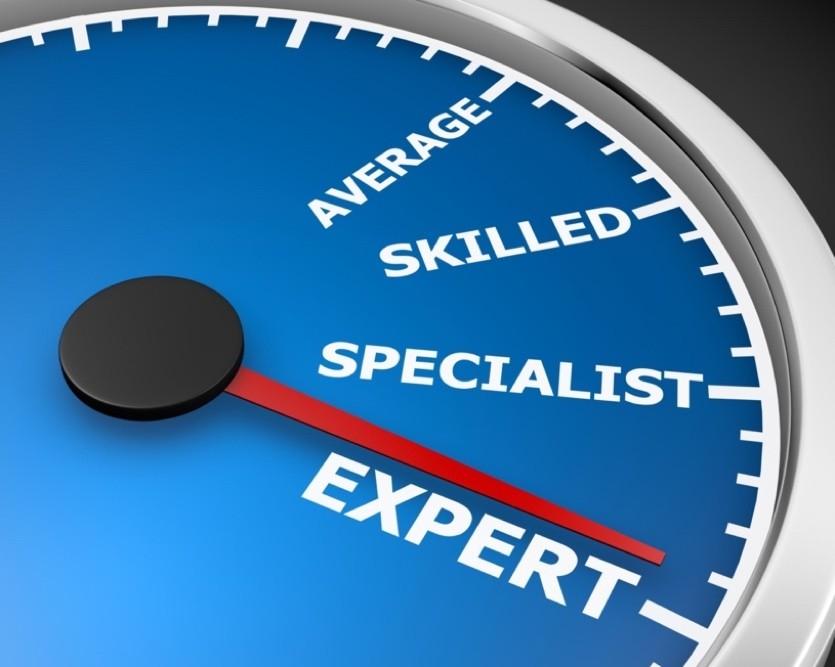
The key here is to focus. Without dedicated focus, the ability to think clearly is weakened, if not lost. You can always spread out into more areas of expertise later. There are many different aspects of sustainability, so it’s important to choose one area to focus on. Identify your strengths and passions and use them to guide your path towards becoming an expert in that particular area. By becoming an expert, you’ll be able to provide valuable insights and advice to businesses and organizations working towards more sustainable practices.
One key aspect of becoming a sustainability professional is to find your niche. Depending on your career goals, you can specialize in different areas of sustainability such as green building, clean energy, or climate change mitigation. Find out which areas interest you most and research the job market for those roles. Once you have identified your niche, think about how to develop a portfolio of experiences that demonstrate your expertise in that area. You may want to consider furthering your education with relevant certifications or degrees.
Many accredited universities and organizations offer courses and certification programs focused on sustainability. Completing this type of training can help you stand out from other candidates when applying for jobs. Additionally, look into
106 10
Steps to Become a Sustainability Professional - Dr. Mohammed S. Al-Surf
attending relevant conferences or joining professional organizations related to sustainability in order to expand your knowledge and build a network.
Becoming an expert in one area of sustainability can be a rewarding endeavor. Not only will you be able to help the environment and make a positive impact on the world, but you'll also gain invaluable knowledge that can help you in many other areas of life. Here are some of the key benefits of becoming an expert in sustainability:
1. Increase Your Knowledge: By focusing on one specific area of sustainability, you'll become an expert in the field and deeply understand the nuances involved. This knowledge can be applied to your current job or career, making you more valuable to employers. Additionally, this expertise can be used to inform decision-making processes and improve overall efficiency.
2. Enhance Your Credibility: When you're knowledgeable about a certain topic, people tend to take you more seriously. Becoming an expert in sustainability allows you to demonstrate your commitment to environmental issues and gives people confidence that you know what you're talking about. This credibility is invaluable when it comes to networking and advancing your career.
3. Improve Your Quality of Life: Learning about sustainability allows you to better understand how your decisions affect the environment around you, enabling you to make smarter choices when it comes to everyday living—from purchasing products that are eco-friendly or investing in renewable energy sources like solar power. This knowledge can also help you save money over time by reducing energy costs or finding more efficient ways to use resources.
By taking the time to become an expert in one area of sustainability, not only will you benefit from increased knowledge and credibility, but also improved quality of life as well
10 Steps to Become a Sustainability Professional - Dr. Mohammed S. Al-Surf
107
9. Spread the Word

Help others understand the importance of sustainability and how they can make a difference. Share your knowledge with friends, family, and co-workers. Write articles, give presentations, or lead workshops on sustainability topics.
When it comes to sustainability, the only way to create real change is by spreading the word. When people are aware of the issues we are facing, they can take action and become part of the solution. It is important that we spread the message in a persuasive but positive manner in order to create meaningful, lasting change.
We need to inform people about our current environmental and social problems, and make sure that they understand why it is important for them to take action. We need to point out that sustainability isn't just about reducing our carbon footprint; it's about creating a better future for everyone. By emphasizing the positive aspects of sustainability, such as improved health and well-being, economic stability, and reduced pollution, we can motivate people to take action.
In order to effectively spread the word about sustainability, we must be creative in how we deliver our message. We need to find ways to make sustainability interesting and relevant in order to engage people. This could include using visual elements such as infographics or videos, or using storytelling techniques like case studies or personal stories. We also need to ensure that our message reaches diverse audiences in different
108
10 Steps to Become a Sustainability Professional - Dr. Mohammed S. Al-Surf
ways; this could be through social media campaigns, public speaking events, or workshops.
Ultimately, it is up to us all as individuals to spread the word about sustainability and create real change. By taking a proactive approach and delivering our message with enthusiasm and creativity, we can inspire others to join us on this journey towards a more sustainable future.
As we continue our journey toward a more sustainable future, it's important that we find ways to spread the word about sustainability. After all, the more people who are aware of the issue, the more likely we are to make progress.
One way to do this is through tonality. When we speak about sustainability in a positive, persuasive tone, we are more likely to get people on board. Here are a few tips for spreading the word about sustainability in a persuasive way:
1. Use positive language. Rather than talking about what we need to stop doing in order to be sustainable, focus on what we can start doing. This positive framing is more likely to inspire people to take action.
2. Be specific. Vague statements like "we need to be more sustainable" aren't as effective as specific ones. For example, "if each of us reduces our energy consumption by 10%, we can make a significant impact."
3. Appeal to emotion. Sustainability is an emotional issue, so it's important to appeal to people's feelings when discussing it. For example, rather than simply talking about the environmental benefits of sustainability, you could tell a story about how sustainability has helped improve someone's life.
10 Steps to Become a Sustainability Professional - Dr. Mohammed S. Al-Surf
109
4. Use data. People are more likely to be convinced by data and statistics than by general statements. So, if you have any hard numbers to back up your argument for sustainability, make sure to use them.
5. Be personal. In addition to using data, another way to convince people of the importance of sustainability is to share your own personal experiences with it. For example, you could talk about how making small changes in your daily life has made a big difference for you or how you've seen sustainability positively impact your community.
By following these tips, you can help spread the word about sustainability in a persuasive and effective way.
110
10 Steps to Become a Sustainability Professional - Dr. Mohammed S. Al-Surf
10. Stay Positive
Finally, remember to stay positive. It can be easy to get overwhelmed by the magnitude of environmental problems we face, but try to center your focus on the progress that’s being made every day towards a more sustainable future.

Ways to Stay Positive
Staying positive in sustainability can be a challenge, but with the right attitude and tools, you can continue to work towards your goals with optimism. Here are some ways you can stay positive and motivated when it comes to sustainability:
1. Find Your Why: When times get tough, understanding the why behind your work towards sustainability will help you stay focused and energized. Ask yourself questions like “What am I doing this for?” or “What is the greater purpose of this work?” Finding answers to these questions will help you keep your motivation alive and recharge your passion for sustainability.
2. Celebrate Small Victories: It’s important to celebrate the small wins along the way as they can help boost morale and give you a sense of accomplishment. Celebrate even the smallest steps towards your sustainability goals. This could include anything from a successful composting program at your workplace to reducing your carbon footprint by 10%.
111 10
Steps to Become a Sustainability Professional - Dr. Mohammed S. Al-Surf
3. Take Breaks: Taking regular breaks from your sustainability efforts is important in order to remain positive and motivated. Allowing yourself space from your work allows for a chance to reset and refocus, resulting in more productive work overall. This doesn’t mean to stop recycling if you have already started with that, or other such elemental efforts in the sustainability realm. What it does mean is to step back temporarily from your active campaign to convince the world of the need for sustainability.
4. Get Creative: Thinking outside of the box can help make sustainability more fun and engaging. Brainstorm new ideas, try out different projects, or incorporate elements of art into your initiatives in order to give yourself something new and exciting to focus on.
5. Connect with Others: Working together with like-minded people is an excellent way to stay positive when working on sustainability projects. Collaborating with others who have similar goals will not only provide motivation but also create an inspirational network that can help push each other further towards success.
By following these tips, you’ll be well on your way to staying positive when it comes to sustainability initiatives. Keeping an optimistic outlook is essential for sustainable success - so don’t forget to take care of yourself throughout the process.
112 10
Al-Surf
Steps to Become a Sustainability Professional - Dr. Mohammed S.
Sustainability Credentialing and Certifications Programs
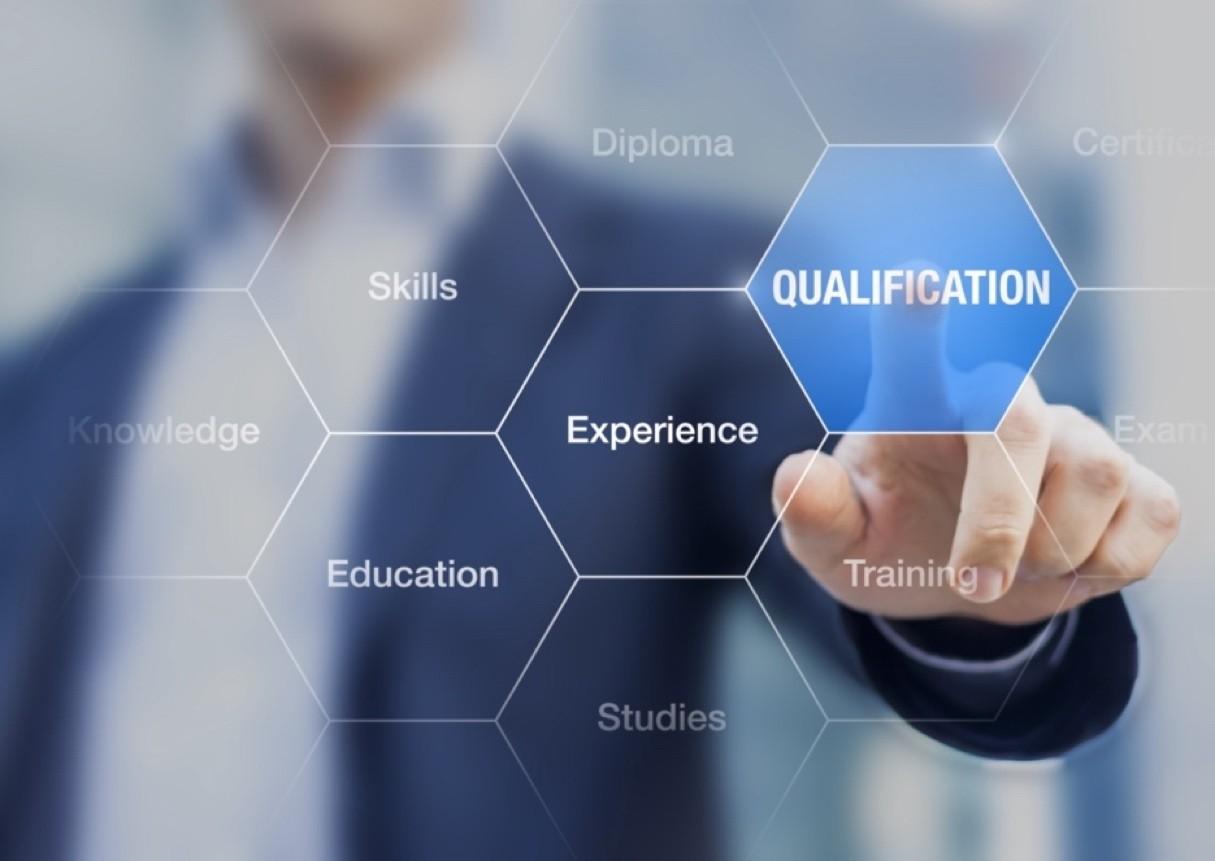
Sustainability credentialing and certification programs provide employers with a way to verify an employee's skills and commitment to sustainable practices. Credentialing programs also offer employees a way to demonstrate their dedication to sustainability, which can help them stand out in the job market.
There are many different types of sustainability credentialing programs available, and the best program for an employer or employee may vary depending on the specific industry or sector. However, all sustainability credentialing programs share a common
10 Steps to Become a Sustainability Professional - Dr. Mohammed S. Al-Surf
113
goal: to promote the adaptation of sustainable practices across different sectors of the economy.
The benefits of sustainability credentialing and certification programs are clear. By promoting the adaptation of sustainable practices, these programs help businesses save money, reduce their environmental impact, and improve their social and ethical credentials. In addition, by providing a way for employees to demonstrate their commitment to sustainability, these programs can help businesses attract and retain top talent.
As someone who works in the sustainability field, I often get asked about the various credentialing and certification programs available. And while there are many different programs out there, I believe that they all play an important role in helping to move the sustainability agenda forward.
Here’s why:
1. Credentialing and certification programs help to legitimize the field of sustainability.
There are still many people out there who don’t believe that sustainability is a real thing or that it’s important. But as more and more people get credentialed and certified in sustainability, it helps to show that this is a legitimate field with real-world applications.
2. Credentialing and certification programs help to raise the bar.
10 Steps to Become a Sustainability Professional - Dr. Mohammed S. Al-Surf
114
As the field of sustainability grows, it’s important to ensure that standards are being met. Credentialing and certification programs help to do this by setting standards for practitioners and making sure that they are being met.
3. Credentialing and certification programs help to create a community of practitioners.
One of the best things about credentialing and certification programs is that they create a community of like-minded individuals who can support each other in their work. This is important because it helps to create a network of people who can share best practices and help each other to improve.
4. Credentialing and certification programs help to advance the sustainability agenda.
By legitimizing the field, raising standards, and creating a community of practitioners, credentialing and certification programs play an important role in advancing the sustainability agenda. This is important work that needs to be done if we want to create a sustainable future for our planet.
115
10 Steps to Become a Sustainability Professional - Dr. Mohammed S. Al-Surf
The U.S. Green Building Council (USGBC) and Green Business Certification Inc. (GBCI)
U.S. Green Building Council (USGBC) Leadership in Energy and Environmental Design (LEED) LEED is the most widely used and recognized tool for measuring a building's environmental performance. LEED certified buildings are designed and built using energy efficient, water conserving, and resource stewardship strategies aimed at improving indoor air quality, regulating and decreasing general energy consumption and reducing greenhouse gas emissions.
Since its founding in 1993, the USGBC has been committed to providing an open and balanced platform for the entire building industry to share ideas and best practices for creating more sustainable buildings. The LEED rating system is one of the many tools is offered by USGBC and GBCI to help achieve this goal.
Here are the main credentials GBCI and USGBC provide for individuals:
LEED Green Associate is for those newer to sustainability and LEED
LEED AP with specialty is for individuals actively working on green building and LEED projects and who wish to demonstrate expertise with a specific LEED rating system
TRUE Advisor
SITES AP
EDGE Expert
LEED Green Rater
ISSP SEA
ISSP SEP
10 Steps to Become a Sustainability Professional - Dr. Mohammed S. Al-Surf
116
Green Business Certification Inc.™ (GBCI) is the premier organization independently recognizing excellence in green business industry performance and practice globally.
Established in 2008, GBCI exclusively administers project certifications and professional credentials and certificates within the framework of the U.S. Green Building Council’s Leadership in Energy and Environmental Design (LEED®) green building rating systems as well as the PEER® standard for power systems, the WELL Building Standard™, the Excellence in Design for Greater Efficiencies (EDGE) program, the Sustainable Sites Initiative (SITES®), the City Climate Planner Urban Greenhouse Gas Inventory Specialist credential, the Investor Confidence Project
Investor Ready Energy Efficiency (IREE) certificate, Parksmart, TRUE, and the ℠ Sustainability Excellence credentials.
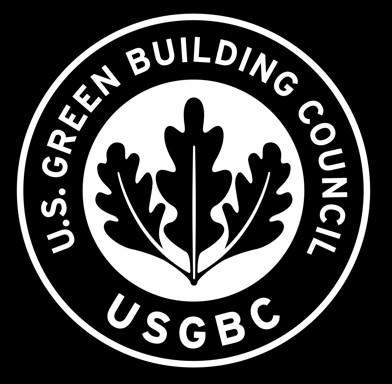

10 Steps to Become a Sustainability Professional - Dr. Mohammed S. Al-Surf
117
LEED Green Associate
The LEED Green Associate exam measures general knowledge of green building practices and how to support others working on LEED projects. The exam is ideal for those newer to sustainability and LEED. The Green Associate credential is earned by passing the 100-question LEED Green Associate exam administered by the Green Business Certification Inc. (GBCI). The LEED Green Associate credential affirms a professional’s thorough comprehension of green building principles and practices.
Here are the steps to getting your LEED Green Associate Credential:
Prep: Review study materials and access exam prep resources.
Exam: The exam is two hours long and has 100 multiple-choice questions. You have the option to take the exam at a Prometric Testing Center or from home as a remote proctored online exam. Review exam details.
Maintain: LEED Green Associates must earn 15 continuing education hours within two years of passing their exam
As a LEED Green Associate, you will have a thorough understanding of current green building principles and practices. You will also be committed to your professional future in this rapidly expanding field. The development of a valid LEED exam begins with a clear and concise definition of the knowledge, skills and abilities needed for success. All LEED exams are developed by an international network of Subject Matter Experts and meet the specifications of a job analysis. The Exam specifications are then subject to rigorous validation by these experts, ensuring that the exam is valid and measures what it is supposed to measure. Once the exams are launched, questions on the exams are monitored regularly to ensure continued reliability.
The exam assesses your abilities at three cognitive levels: Recall, Application and Analysis.
10 Steps to Become a Sustainability Professional - Dr. Mohammed S. Al-Surf
118
a) Recall Questions: These questions assess your ability to recall factual material that is described in the exam references.
b) Application Questions: These questions provide you with a novel problem or scenario to solve using familiar principles or procedures described in the exam references.
c) Analysis Questions: These questions assess your ability to break the problem down into its components to create a solution. You must recognize the different elements of the problem and evaluate the relationship or interactions of these elements.
Exam Format
The LEED Green Associate exam contains 100 multiple choice questions and is delivered in a 2-hour period. Each question will have only one correct answer option. The exam has scored questions and unscored questions. All questions are placed randomly throughout the exam, so you should respond to all of them. Unscored questions are used to gather data on how well the question performs for future use. The exam is computer-based with your responses being timed. Questions and answer options are displayed on screen during the test which you can flag for review later if needed.

119 10
Steps to Become a Sustainability Professional - Dr. Mohammed S. Al-Surf
LEED AP with specialty
A LEED AP credential distinguishes those with advanced knowledge in green building, plus expertise in a particular LEED rating system. Previous experience working on a LEED-registered project is strongly recommended. The LEED AP exams measure knowledge about green building, a specific LEED rating system and the certification process. The exam is ideal for individuals who are actively working on green building and LEED projects, and to apply for this exam, the applicant must already hold the LEED Green Associate credential.
Prep: Review the study materials and access exam prep resources.
Exam: The combined exam includes the LEED Green Associate and LEED AP with specialty exams. Current LEED Green Associates can take the specialtyonly portion. You have the option to take the exam at a Prometric Testing Center or from home as a remote proctored online exam. Review exam details.
Maintain: LEED APs must earn 30 continuing education hours within two years of passing their exam
A LEED AP with specialty credential holder is an individual who possesses the knowledge and skills necessary to support the LEED certification process. The development of a valid exam begins with a clear and concise definition of the knowledge, skills, and abilities needed to successfully perform the job of a LEED AP with specialty. All LEED exams are developed by a global network of Subject Matter Experts and meet the specifications of a job analysis. Exam specifications are subject to rigorous validation by these experts, which ensures that the exam is valid and measuring what it is intended to measure. Once exams are launched, exam questions are regularly monitored to ensure continued reliability.
10 Steps to Become a Sustainability Professional - Dr. Mohammed S. Al-Surf
120
The exams assess your abilities at three cognitive levels: Recall, Application and Analysis.
a) Recall Questions: These questions assess your ability to recall factual material that is described in the exam references.
b) Application Questions: These questions provide you with a novel problem or scenario to solve using familiar principles or procedures described in the exam references.
c) Analysis Questions: These questions assess your ability to break the problem down into its components to create a solution. You must recognize
Exam Format
Each LEED AP with specialty exam contains 100 multiple choice questions and is delivered in a 2-hour period. Each multiple-choice question will have only one correct answer option. The exam has scored questions and unscored questions. All questions are placed randomly throughout the exam and candidates are not informed of a question’s status, so you should respond to all questions on the exam. Unscored questions are used to gather data regarding how the question performs. This data informs the use of the question on future exams.
The exam is computer-based. Exam questions and answer options are displayed on screen. The computer records your responses and times your exam. You can change your answers, skip questions and flag questions for later review.
There are 5 LEED AP with specialty credentials a professional can take:
LEED AP BD+C
LEED AP ID+C
LEED AP O+M
LEED AP ND
LEED AP HOMES
10 Steps to Become a Sustainability Professional - Dr. Mohammed S. Al-Surf
121
LEED AP Building Design + Construction (LEED AP BD+C)
Suits professionals with expertise in the design and construction phases of green buildings, serving the commercial, residential, education and healthcare sectors.

LEED AP Operations + Maintenance (LEED AP O+M)
Distinguishes professionals implementing sustainable practices, improving performance, heightening efficiency and reducing environmental impact in existing buildings through enhanced operations and maintenance.

10 Steps to Become a Sustainability Professional - Dr. Mohammed S. Al-Surf
122
LEED AP Interior Design + Construction (LEED AP ID+C)
Serves participants in the design, construction and improvement of commercial interiors and tenant spaces that offer a healthy, sustainable and productive work environment.
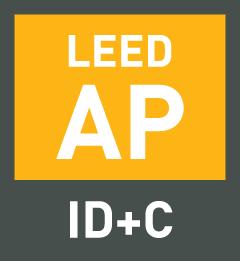
LEED AP Neighborhood Development (LEED AP ND)
Applies to individuals participating in the planning, design and development of walkable, neighborhoods and communities.

10 Steps to Become a Sustainability Professional - Dr. Mohammed S. Al-Surf
123
LEED AP Homes
Suited for those involved in the design and construction of healthy, durable homes that use fewer resources and produce less waste.
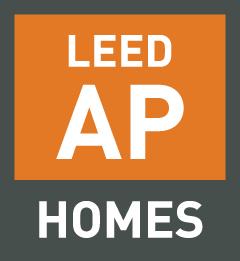
10 Steps to Become a Sustainability Professional - Dr. Mohammed S. Al-Surf
124
SITES AP
The SITES Accredited Professional (SITES AP) provides professionals with the opportunity to increase and demonstrate their knowledge, expertise and commitment to sustainable land development. The SITES AP credential applies to landscape architects, sustainability consultants, planners, ecologists, urban designers and others interested in nature-based solutions, optimizing ecosystem services, and overall, ensuring outcomes of a development project are sustainable, resilient and regenerative.
Eligibility requirements
Candidates must be 18 years of age or older, and prior SITES project experience is not required but recommended, as well as exposure to SITES concepts through educational courses, volunteering or work experience.
Exam Development
A SITES AP is an individual who possesses the knowledge and skills necessary to support the SITES certification process, including participating in the design and development process, supporting and encouraging integrated design, managing the application and certification process and providing advocacy and education for the adoption of SITES. The development of a valid exam begins with a clear definition of the knowledge, skills and abilities needed to successfully perform the job of a SITES AP. The SITES AP exam is developed by a global network of Subject Matter Experts who meet specifications based on a job analysis. The exam specifications are subject to rigorous validation by these experts, which ensures that questions on the exam measure what it is intended to measure. Once launched, questions on the exam are regularly monitored to ensure continued reliability.
10 Steps to Become a Sustainability Professional - Dr. Mohammed S. Al-Surf
125
The exam assesses your abilities at three cognitive levels: Recall, Application and Analysis.
a) Recall Questions: These questions assess your ability to recall factual material that is described in the exam references.
b) Application Questions: These questions provide you with a novel problem or scenario to solve using familiar principles or procedures described in the exam references.
c) Analysis Questions: These questions assess your ability to break the problem down into its components to create a solution. You must recognize the different elements of the problem and evaluate the relationship or interactions of these elements.
Exam Format
The SITES AP exam contains 100 randomly delivered multiple choice questions and must be completed in a 2-hour period. Each multiple-choice question will only have one correct answer option. The exam has both scored and unscored questions. All questions are delivered randomly throughout the exam and candidates are not informed of a question’s status, so you should respond to all the questions on the exam.
Unscored questions are used to gather data regarding how the question performs. This data informs the use of the question on future exams.
The exam is computer-based. Exam questions and answer options are displayed on the screen. The computer records your responses and times your exam. You can change your answers, skip questions, and flag questions for later review.
Credential maintenance program
The SITES AP credential requires ongoing maintenance every two years. The SITES AP Credential Maintenance Program (CMP) is designed to align with the LEED and WELL professional credentials’ CMP so that professionals can leverage CE hours earned for one program for the other. The credential maintenance fee is $85.
10 Steps to Become a Sustainability Professional - Dr. Mohammed S. Al-Surf
126


10 Steps to Become a Sustainability Professional - Dr. Mohammed S. Al-Surf
127
TRUE Advisor
The TRUE Advisor is a certificate program that uses instructional design principles to deliver best in class education. The course consists of 12 on-demand, self-paced modules and the assessment will be a 75-question exam delivered online via a computer-based testing platform. The TRUE Advisor certificate demonstrates that an individual possesses basic knowledge of zero waste terminology, tools, technologies, and implementation strategies to assist in the TRUE Zero Waste certification process in accordance with the TRUE Zero Waste Rating System.
Course Requirements
There are no eligibility requirements to participate in the program. Individuals must complete the online course and pass the assessment over a period of 90 days in order to earn the TRUE Advisor certificate. The online course is three hours in length; however, it may take participants up to 6.5 hours to complete the entire course as they complete the activities, download template and take notes. Your progress will be saved as you work, so you may exit the course at any time to resume where you last stopped. You must view the modules and slides sequentially, so you will not be able to advance and/or skip ahead.
The certificate program provides a comprehensive curriculum for individuals who want to learn about zero waste policies and programs that can help projects achieve TRUE Zero Waste certification. TRUE Advisors have a practical understanding of current zero waste business principles plus show commitment toward professional growth.
128
10 Steps to Become a Sustainability Professional - Dr. Mohammed S. Al-Surf
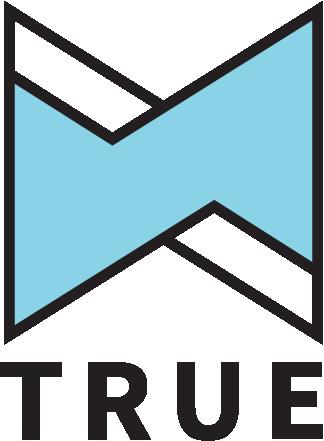
10 Steps to Become a Sustainability Professional - Dr. Mohammed S. Al-Surf
129
Edge Expert
An innovation of IFC, a member of the World Bank Group, EDGE is a green building certification system focused on making buildings more resource-efficient in over 170 countries. It enables developers and builders to quickly identify the most cost-effective ways to reduce energy use, water use and embodied energy in materials. EDGE empowers emerging markets to scale up resource-efficient buildings in as fast, easy and affordable way. As a global certification partner, Green Business Certification Inc. (GBCI) administers EDGE certification in over 160 countries around the world.
As certified EDGE experts, we have the skills and knowledge to create a green portfolio for your project. Our persuasive abilities will help you see the potential for an entirely sustainable development. At the individual level, becoming an EDGE Expert results in greater expertise, career progression and opportunities to showcase your work. For firms, credentialing staff demonstrates commitment to upskilling employees while attracting new talent. Whether you are a sole practitioner or part of an engineering or architecture team, anyone can become an EDGE Expert. We play a vital role in bringing together different aspects of the design process while providing excellent value to clients.

130 10
Steps to Become a Sustainability Professional - Dr. Mohammed S. Al-Surf
LEED Green Rater
LEED Green Raters provide verification services for LEED residential projects and play a critical part in the LEED certification of residential buildings. With tens of thousands of registered projects, the demand for qualified LEED Green Raters is growing every day. They are individuals authorized by GBCI to perform verification services, based on their demonstrated experience and expertise in residential green building and verification.
LEED Green Raters must be involved with the project from the design phase (prior to a preliminary rating, as required by rating system) and throughout the construction process and are responsible for:
Providing on-site verification services for registered LEED residential projects
Verifying that the project is designed and built to the rigorous requirements of the LEED rating system through documentation review and onsite verification
Assembling the project submittal package for submission to GBCI for certification review
Project teams interested in certifying a residential project must contact a LEED Green Rater.

10 Steps to Become a Sustainability Professional - Dr. Mohammed S. Al-Surf
131
International Society of Sustainability Professionals (ISSP)
Since ISSP was formed in 2007, the field of sustainability has attracted millions of people from a variety of backgrounds who are doing work in this field and claim the title “sustainability professional". While the field has been enriched and informed by this diversity of expertise, it has also created inconsistency in practice and definition. In order for the field and its professionals to be taken seriously and be granted due credibility, there needs to be some definition and standardization of the competencies employers can come to expect.
With that goal in mind, ISSP has developed two professional credentials designed to provide coherence to the field of sustainability as well as recognize the knowledge, skills, and abilities sustainability professionals bring to their work.
The Sustainability Excellence Credentials were developed by ISSP through global collaboration by sustainability practitioners, for sustainability practitioners. Designed with rigorous international standards in mind, these credentials provide third-party verification of competency in the profession.
Sustainability Excellence Associate (SEA) for early and midcareer professionals
Sustainability Excellence Professional (SEP) for advanced professionals
Sustainability Excellence Associate (SEA). Originally designed by ISSP, the SEA credential demonstrates an understanding of core sustainability concepts and best practices. SEA is designed for those who are new to the sustainability field, including
10 Steps to Become a Sustainability Professional - Dr. Mohammed S. Al-Surf
132
students, recent graduates or professionals interested in incorporating sustainability concepts into their work. The SEA is a prerequisite for the SEP.
Sustainability Excellence Professional (SEP). The SEP demonstrates advanced knowledge and extensive experience in the sustainability field. This credential is intended to recognize leaders and experts who are at the forefront of the transition to a more sustainable world. In order to earn an SEP credential, candidates must previously have earned their SEA and demonstrated professional mastery in key fields, including stakeholder engagement, core sustainability concepts, and implementation of sustainable strategies.
ISSP Credential History
The ISSP credentials were launched in 2016 to define and recognize competency in the field of sustainability. In 2017, GBCI and ISSP partnered to enhance, scale, and promote the credentials with the goal of driving positive environmental, social, and economic outcomes in organizations and communities at a global scale. GBCI formally acquired the credentials in 2019 and is responsible for administering and delivering them. ISSP delivers professional development to support exam preparation, credential maintenance, and professional development. Today, GBCI and ISSP continue to partner together to provide best-in-class educational resources and empower a growing network of sustainability professionals.
On December 1, 2020, GBCI gave the ISSP credentials a new name and look; however, the credentials continue to represent a mastery of the six domains of sustainability professional excellence that remain the core of the program. The ISSP Sustainability Associate (ISSP-SA) is renamed the Sustainability Excellence Associate (SEA), while the Sustainability Professional (ISSP-SP) credential is renamed Sustainability Excellence Professional (SEP). The SEA credential is designed for those
10 Steps to Become a Sustainability Professional - Dr. Mohammed S. Al-Surf
133
new to the field of sustainability, while the SEP credential is intended for experienced professionals who want to demonstrate their advanced knowledge and skills.

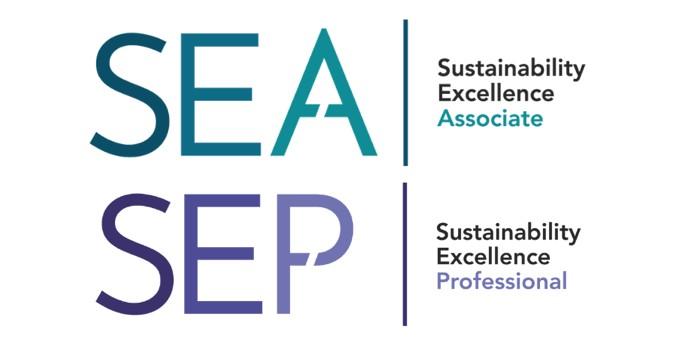
10 Steps to Become a Sustainability Professional - Dr. Mohammed S. Al-Surf
134
Mostadam
Sustainable BuildingTM has created Mostadam, a comprehensive sustainability rating and certification system designed to promote the long-term resiliency of housing projects in Saudi Arabia. This program is an integral part of fulfilling the Saudi Vision 2030 goals by addressing numerous sustainability considerations essential for and specific to KSA's development. The objective of this initiative is to foster superior construction environments throughout the country with its certificate validating buildings that have met all requirements related to sustainable elements such as energy efficiency and water conservation measures. In order for participants to earn recognition from their peers via Mostadam’s stamp, they must show commitment towards these initiatives through implementation and integration into their design plans on top of achieving other technical criteria set forth by Sustainable BuildingTM itself.
The Saudi Building Code (SBC) is a set of legal, administrative and technical regulations that specify the minimum standards for building design and construction in KSA. The Saudi Green Building Code (SgBC 1001) is part of the SBC and has been developed to ensure that buildings designed and constructed according to the code have a lesser impact on the environment. Mostadam for Residential Buildings is aligned with the SBC, and in particular the SgBC, and has been developed to go beyond the minimum SBC requirements to ensure an even higher level of sustainability for residential buildings. Furthermore, Mostadam O+E requires a set of specific performance parameters that have been benchmarked with the baseline parameters as defined in the SgBC for performance and further improvement in operation.
This building rating system is created for Saudi Arabia’s local climate and environmental characteristics. It supports the Saudi economy and employment.
10 Steps to Become a Sustainability Professional - Dr. Mohammed S. Al-Surf
135
Additionally, it’s designed to comply with existing legislation. Mostadam aligns with the Kingdom of Saudi Arabia’s Vision 2030 and the Saudi Green Building Code (SgBC). Vision 2030 emphasizes three priority areas, which are at the core of Mostadam as a rating system:
• Water
• Energy
• Human Health & Comfort
Among others, Mostadam helps to increase energy efficiency, encourage the use of renewable energy, increase water efficiency and the use of recycled water, and increase overall awareness of sustainability.
Mostadam Accredited Professional (Mostadam AP) is an industry professional ready to support and monitor projects seeking Mostadam certification.
The requirements for a Mostadam AP are to:
• Have a bachelor’s degree in Engineering or a relevant field.
• Complete Mostadam AP training courses in any element of Mostadam rating system.
• Pass the exam administered by Sustainable Building or Saudi Real Estate Institute (SREI) (24 out of 40 questions must be answered correctly).
• Undertake Continued Professional Development (CPD), which is the process of maintaining and enhancing knowledge, skills, and experience beyond the initial training and certification.
Mostadam APs are responsible for:
• Being a point of contact for the project team and to coordinate to provide any additional information if needed.
• Project registration, documentation submission, and coordination with Mostadam Assessor for all technical discussions related to the project.
10 Steps to Become a Sustainability Professional - Dr. Mohammed S. Al-Surf
136
• Understanding the Mostadam credits requirements and providing the project team with guidance and support.
• Supporting the project team when defining a Sustainability Action Plan.
• Reviewing documentation and evidence prior to submission to Sustainable Building.
• Submitting Credit Clarification Inquiries (CCIs) to Sustainable Building.

10 Steps to Become a Sustainability Professional - Dr. Mohammed S. Al-Surf
137
Estidama, Peral Qualified Professional (PQP)
Estidama is the Arabic word for sustainability and an initiative developed by the Abu Dhabi Urban Planning Council (UPC) to achieve the late Sheikh Zayed bin Sultan Al Nahyan's dream. Estidama is an aspiration - a manifestation of visionary governance that puts emphasis on carefully and responsibly managed development. The ultimate goal of Estidama is to preserve and enrich Abu Dhabi's physical and cultural identity, while creating an ever improved quality of life for its residents.
The Pearl Rating System (PRS) is a framework for sustainable design, construction and operation of communities, buildings and villas. The PRS is unique in the world as it is specifically tailored to the hot climate and arid environment of Abu Dhabi. The PRS supports the social and cultural traditions and values of Abu Dhabi. It is part of the Estidama program, a government wide collaborative initiative to improve the lives of all citizens living in the Emirate. The PRS requires accountability of the operational phase of a development to verify performance.
Estidama Testing Information
Two different exams are available. Both are computerized multiple choice exams with 40 questions. One exam is on the Pearl Community Rating System (PCRS) and the other on the Pearl Building Rating System (PBRS). Passing an exam will lead to a certificate that states you are a Pearl Qualified Professional (PQP) in either the PBRS or PCRS, or both, as appropriate. The PQP Exam provides the mechanism for a candidate to receive the PQP credential as required within the Pearl Rating System process for all buildings and communities. The PQP will be responsible for:
10 Steps to Become a Sustainability Professional - Dr. Mohammed S. Al-Surf
138
Understanding the credits of the Pearl Community and Building Rating Systems and their application to projects
Facilitating the certification process
Providing quality assurance to documents prior to submission to Estidama. To register for the Exam, please choose "Estidama Pearl Rating System" in the Test Takers section of www.prometric.com or log on directly to www.prometric.com/UPC/default.htm
The PQP Exam is a computerised multiple-choice exam provided through a Prometric testing center. The exam is available at two testing sites in the UAE, one in Abu Dhabi and one in Dubai, as well as internationally. You can take either the Pearl Community Rating System (PCRS) Exam or the Pearl Building Rating System (PBRS) Exam.
The cost for each exam is $200 (around AED740) and comprises of 40 multiple-choice questions. You can choose to become qualified for either Rating Systems or only one; however the Appointed PQP for the project must hold the relevant Rating System certificate.
The pass rate for each exam is 70% or 28 questions correct out of 40. The pass rate was determined after an extensive data collection and analysis of approximately the first 200 completed exams. The first group of approximately 200 PQPs was notified by email in early February 2011.
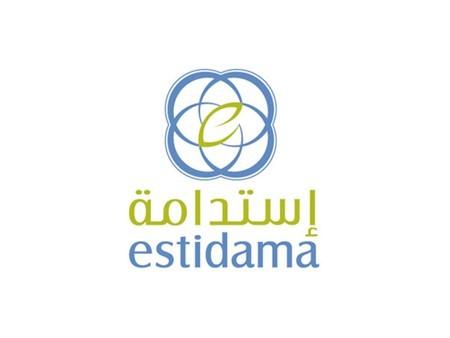
10 Steps to Become a Sustainability Professional - Dr. Mohammed S. Al-Surf
139
QSAS, The Global Sustainability Assessment System (GSAS)
The Global Sustainability Assessment System (GSAS) is a performance-based sustainable building rating system developed for the creation of a sustainable built environment that not only minimizes its ecological impact but also preserves the values, traditions, and identity of the region.
Originally called QSAS, the Gulf Organization for Research and Development (GORD) developed the system to provide the systematic assessment customized to the unique conditions and requirements of the State of Qatar. Since then, the rating schemes have been developed for the transition from local to a global scale. The primary objective of GSAS is to create a sustainable, built environment that minimizes ecological impact while addressing specific regional needs and those of the surrounding environment.
GSAS criteria include the measurement of energy and water consumption and indoor environmental performance of buildings. The application of GSAS criteria to a building's design and construction contributes to the improvement of the overall quality, maintenance requirements and life span of the building.
With knowledge dissemination and capacity building at the core of GORD’s corporate philosophy, GSAS Certified Green Professional (CGP) program empowers engineering professionals with the technical skillset needed to manage the implementation of sustainability principles guided by GSAS framework. Understanding that the nature of the required sustainability expertise varies for each project phase, and candidates can choose from three streams depending on the certification type that their project has opted to implement:
10 Steps to Become a Sustainability Professional - Dr. Mohammed S. Al-Surf
140
• GSAS-D&B CGP
• GSAS-CM CGP
• GSAS-OP CGP
GSAS-D&B CGP
Certifies professionals to manage GSAS Design & Build projects. The license is awarded to candidates who have successfully completed GSAS Design & Build Certified Green Professional Course and passed the online exam. GSAS-D&B CGP license equips professionals with a solid knowledge base covering aspects related to urban connectivity, site, energy, water, materials and indoor environment.
GSAS-CM CGP
Certifies professionals to manage GSAS Construction Management projects. The license is awarded to candidates who have successfully completed GSAS Construction Management Certified Green Professional Course. GSAS-CM CGP license empowers professionals with the ability to influence the construction management process, undertake assessment and manage project certifications to achieve a sustainable built environment. At the same time, curriculum curated for this training equips the candidates with all the necessary tools, methods and expertise needed to embark on a GSAS-CM project.
GSAS-OP CGP
Certifies professionals to manage GSAS-OP projects. The license is awarded to candidates who have successfully completed GSAS-OP Certified Green Professional Course. GSAS-OP CGP license attests professionals’ learning and understanding of GSAS-D&B incentive criteria, weights and implementation while also familiarizing them with GSAS tools needed for GSAS-OP certification.
10 Steps to Become a Sustainability Professional - Dr. Mohammed S. Al-Surf
141
GSAS Accredited Auditor designation qualifies professionals to perform energy audits during operations stage for buildings that opt to obtain GSAS Operations certification. It equips individuals with knowledge and expertise to assess certain aspects in the building. Available GSAS Accreditation Auditors qualifications include Accredited Energy Auditor (AEA), Accredited Energy Manager (AEM) and Accredited Water Auditor (AWA).
Other Professional Accreditations qualify professionals to engage in certain activities related to operational stage of the facility. Candidates can select from a range of accreditations that include Accredited Facility Management Professional (AFMP), Accredited Waste Management Professional (AWMP) and Accredited Building Commissioning Professional (ABCP).
Credential Maintenance
GSAS Certified Green Professionals are required to update their knowledge every 3 years by attending courses exclusively focused on updates, alterations, and additional requirements by GSAS. Offered throughout the year, GSAS Refresher Courses present an opportunity for CGPs to maintain their credibility and receive continuing education units.

10 Steps to Become a Sustainability Professional - Dr. Mohammed S. Al-Surf
142
BREEAM Assessors and APs
The BREEAM rating system is recognized nationally and internationally as the most comprehensive and rigorous method for assessing the environmental performance of buildings. There is increasing demand from clients for high BREEAM ratings for both new construction and refurbishment projects, and clients realize that reducing environmental impact makes sound business sense. The challenging economic climate is also focusing attention on the need to manage construction and operating costs, improve productivity, and protect the bottom line. Professionals with specialist knowledge of sustainability and environmental design are taking the lead in helping design teams meet these client expectations.
BREEAM is an "Assessor lead" process through which designers submit evidence to an accredited individual who assumes no design responsibility. Until now there has been no way for designers themselves to claim a high level of competence with BREEAM other than by association with completed BREEAM Excellent buildings or by qualifying as a BREEAM Assessor. The BREEAM AP qualification is a response to industry calls to fill this gap by recognising specialist skills in sustainability and environmental design combined with a high level of competence in the BREEAM assessment process. It is aimed at architects, engineers and others with design skills and responsibilities. In recognition of the significant contribution a BREEAM AP can make to the design process, up to three BREEAM credits (BREEAM 2011) are available if a BREEAM AP is engaged from an appropriate point in a project
The Role
BREEAM APs provide the design team with expert advice on built environment sustainability, environmental design and environmental assessment. They will facilitate the team's efforts to successfully schedule activities, set priorities and
143
10 Steps to Become a Sustainability Professional - Dr. Mohammed S. Al-Surf
negotiate the trade-offs required to achieve a target BREEAM rating when the design is formally assessed.
A licensed BREEAM or Home Quality Mark Assessor has a deep level of understanding and competency in the scheme for which they are licensed and monitored by BRE Global Ltd. Their role is to manage the formal assessment process and apply for certification of that assessment on behalf of the client. In doing so they will confirm the appropriate scheme, apply the relevant scheme criteria and liaise with the client and relevant stakeholders to facilitate an assessment. Only BRE Global Ltd licensed assessors can offer, register, undertake and apply for certification of assessment.
A BREEAM Accredited Professional (BREEAM AP) has specialist skills in sustainability and environmental design combined with a high level of competence and understanding in BREEAM and its assessment process. The BREEAM AP is one type of ‘sustainability champion’ defined and recognised in BREEAM. The BREEAM AP uses their expertise to assist clients and project teams by facilitating cross-project consideration and collaboration on solutions to scheme compliance, target setting and performance monitoring. A BREEAM AP cannot undertake a BREEAM assessment and apply for certification, unless they are also a licensed BREEAM assessor in the relevant scheme
10 Steps to Become a Sustainability Professional - Dr. Mohammed S. Al-Surf
144

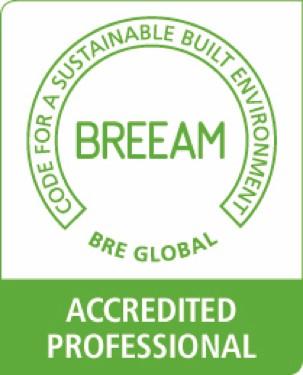
10 Steps to Become a Sustainability Professional - Dr. Mohammed S. Al-Surf
145
World Green Economy Council Certifications
The World Green Economy Council (WGECO®) is a global network for leaders, practitioners and organizations promoting affordable and consistent green system and advocating for Green Economy Leadership. It is a green federation of more than 40 organizations in 21 countries. These organizations are legal entities to impart green economy concepts & applications in the countries of their existence. The WGECO activities including but not limited to: Green Energy, Green Life, Green Jobs, Green Vehicle, Green Building, Green Industry, Green Logistics, Green Lean, Green Investment, Green Information System and Green Technology.
The World Green Economy Council (WGECO®) is an international nonprofit organization, advocating for Green Leadership. WGECO working together with Governments, Public & Private Sectors and other International institutions to accelerate & educate on green business practices & solutions for a better tomorrow.
The WGECO leads the direction and fosters the growth of the Green profession through actively setting standards and building the capability of the profession. Moreover, its programs and services are internationally recognized for their excellence and effectiveness by prominent professional and academic bodies around the world.
Following is a more detailed account of the various WGECO® certifications and specialties:
Certified Green Building Consultant (CGBC™)
The CGBC™ designation recognizes builders, re-modelers and other industry professionals who incorporate green and sustainable building principles— without driving up the cost of construction. The required courses provide a solid background in green building methods, as well as the tools to reach consumers, from the organization
10 Steps to Become a Sustainability Professional - Dr. Mohammed S. Al-Surf
146
leading the charge to provide market-driven green building solutions to the home building industry.
CGBC coursework is closely aligned with the National & International Green Building Standards, which includes chapters on energy, water and resource efficiency, indoor environmental quality, lot and site development and home owner education and is the core curriculum for the required CGBC classes.
CGE® - Certified Green Economist
The green economy is defined as an economy that aims at reducing environmental risks and ecological scarcities, and that aims for sustainable development without degrading the environment. It is closely related with ecological economics, but has a more politically applied focus. The 2011 UNEP Green Economy Report argues "that to be green, an economy must not only be efficient, but also fair. Fairness implies recognizing global and country level equity dimensions, particularly in assuring a just transition to an economy that is low-carbon, resource efficient, and socially inclusive."
A feature distinguishing it from prior economic regimes is the direct valuation of natural capital and ecological services as having economic value and a full cost accounting regime in which costs externalized onto society via ecosystems are reliably traced back to, and accounted for as liabilities of, the entity that does the harm or neglects an asset.
Global Energy Manager (GEM)
When you’ve earned the right to put the initials “GEM” behind your name, you’ve distinguished yourself among global energy management professionals. Simply put, the designation GEM recognizes individuals who have demonstrated high levels of
10 Steps to Become a Sustainability Professional - Dr. Mohammed S. Al-Surf
147
experience, competence, proficiency and ethical fitness in the green energy management profession.
The Gem Examination Requirement
In addition to meeting specific educational and experience requirements detailed below on this page, candidates for GEM certification must formally submit a GEM certification application, along with a $400 exam/application fee (covers remote testing), and successfully complete a four-hour open book exam. Fast Track GEM Preparatory Course for Green Energy Managers Online Seminar is an ideal preparatory vehicle for those wishing to sit for the GEM exam.
Green Project Management Professional (GPMP®)
The GPMP® designation is designed by WGECO® for project management practitioner’s candidate or employed in middle/senior-level Management, Full- or parttime. This program provides comprehensive training in green project management and equips the participants with appropriate knowledge, skills and techniques to perform project management functions and responsibilities in organizations. The GPMP® BOK “body of knowledge” is a recognized standard set by industry professionals and consultants working in the PM profession. It is designed to answer the question, “What should Green Project Professionals and Managers know and be able to apply to be considered a competent GPM?”
This professional program is designed to provide an advanced level of knowledge, for management of green project management in an organization. It offers a good blend of theories, practices and case studies in the management of green projects to meet the growing demand for competent GPM Professionals. The program has been endorsed by WGECO® Global Leaders and past graduates have attained successful careers in the industry.
10 Steps to Become a Sustainability Professional - Dr. Mohammed S. Al-Surf
148
The CGLP® Designation
Becoming a Certified Green Logistics Professional (CGLP®) is easily the single best thing you can do to earn more money, access management positions in the supply chain logistics business, and protect your career through tough economic times. The CGLP® designation will increase your professional credibility, capabilities and confidence.

10 Steps to Become a Sustainability Professional - Dr. Mohammed S. Al-Surf
149
Fitwel Ambassadors
Fitwel Ambassadors are meeting the demand for healthy buildings and taking their careers to the next level. Ambassadors are leaders and active participants in Fitwel’s healthy building movement. They are well-versed in the evidence-based connection between design and health, can integrate Fitwel’s strategies within projects, and are able to effectively navigate the Fitwel Portal to track progress and attain Fitwel Certification.
Ambassador Benefits:
• Increase your knowledge and capacity to leverage Fitwel
• Fast track project review and certification
• Priority contact with the Fitwel team
The Ambassador Course introduces the rationale and evidence used to develop Fitwel and its high impact strategies, while also familiarizing participants to the digital interface used for certification. The Course includes a 60-minute pre-recorded training video and access to the Fitwel Reference Guides for participants to take a follow up online exam. Once completed, Ambassadors receive recognition through a certificate and listing on fitwel.org, an introductory presentation, and AIA credits, when applicable. Ambassadors also receive a fast track through the project review and certification process (12 weeks rather than 16 weeks). It typically takes between 36-48 hours to complete enrollment once purchase is complete.

150
10 Steps to Become a Sustainability Professional - Dr. Mohammed S. Al-Surf
The Association of Climate Change Officers (ACCO)
Certified Climate Change Professional (CC-P) for mid-career professionals
CC-P Candidate Pilot Program for young professionals or professionals transitioning to a career in climate change
As a Certified Climate Change Professional® (CC-P®), you can work in virtually any industry or professional function, and will be a highly valued asset who provides substantive capacity to support the organization's efforts toward climate preparedness and reducing its emissions in a dynamically changing global environment. The Certified Climate Change Professional® (CC-P®) signifies that you have developed the fundamental skills and knowledge to effectively support climate change initiatives and connects you to the premier community of professionals, organizations and experts worldwide. Earning recognition as a CC-P® Candidate shows to potential employers that you have the fundamental knowledge and competencies to support climate preparedness and action initiatives.
The CC-P® Candidate is the perfect stepping stone to becoming a future Certified Climate Change Professional® (CC-P®). This program is designed for:
Professionals transitioning to a career in climate change who do not currently satisfy the experience requirements of the CC-P®; and
Young professionals and students about to graduate looking to get a climate change position or job.

10 Steps to Become a Sustainability Professional - Dr. Mohammed S. Al-Surf
151
Sustainability Reporting Certifications
Sustainability reporting certifications are important for ensuring that companies are accurately and transparently disclosing their environmental and social impacts. These certifications also help to build trust with investors, customers, and other stakeholders.
There are a number of different sustainability reporting certifications available, including the Global Reporting Initiative (GRI), the Carbon Disclosure Project (CDP), and the Sustainability Accounting Standards Board (SASB). Each certification has its own specific requirements, but all require companies to disclose their greenhouse gas emissions, water usage, energy consumption, waste generation, and other sustainability indicators.
Many companies are choosing to get certified by more than one organization in order to demonstrate their commitment to sustainability reporting. In fact, a recent study found that nearly 60% of companies surveyed had multiple sustainability reporting certifications.
There are many benefits of getting certified, but there are also some challenges. The cost of certification can be prohibitive for some companies, and the disclosure requirements can be time-consuming and resource-intensive. However, the benefits of increased transparency and trust are well worth the effort for many organizations.
10 Steps to Become a Sustainability Professional - Dr. Mohammed S. Al-Surf
152
The following Sustainability Reporting Systems are discussed in detail:
Global Reporting Initiative (GRI) Professional Certification
Sustainability Accounting Standards Board (SASB) Fundamentals of Sustainability Accounting Credential
CDP Climate Change Survey Certification
Integrated Reporting (IR) Fundamentals of Integrated Reporting Certificate
10 Steps to Become a Sustainability Professional - Dr. Mohammed S. Al-Surf
153
Global Reporting Initiative (GRI) Professional Certification
With two flexible learning routes to choose from – online self-paced via the GRI Academy (route A) or blended and instructor-led (route B) – the GRI Professional Certification program provides a unique opportunity to gain expertise and global recognition in sustainability reporting with the GRI Standards.
The program is comprised of four courses and a final certification exam:
1. Introduction to sustainability reporting and the GRI Standards 2021 update
2. Reporting with GRI Standards 2021 update
3. Reporting on Human Rights with GRI Standards 2021 update
4. Integrating the SDGs into sustainability reporting
By completing the courses and the exam, you will obtain the ‘GRI Certified Sustainability Professional’ status, which is valid for two years. Your certification can be renewed by earning Continuing Education Units (CEUs), awarded when you complete additional training courses.

10 Steps to Become a Sustainability Professional - Dr. Mohammed S. Al-Surf
154
Sustainability Accounting Standards Board (SASB)
Fundamentals of Sustainability Accounting
Credential
The FSA Credential is designed for professionals who benefit from understanding the link between financially material sustainability information and a company’s ability to drive enterprise value. The Fundamentals of Sustainability Accounting (FSA)
Credential equips professionals with the knowledge and skills to understand the link between financially material sustainability information and a company’s ability to drive enterprise value.
The FSA Credential combines two exams to assess professional expertise in the materiality of sustainability information for corporate performance and investment analysis. After passing Level I, candidates are identified as an “FSA Level II Candidate.” After passing Level II, candidates become an “FSA Credential Holder.”
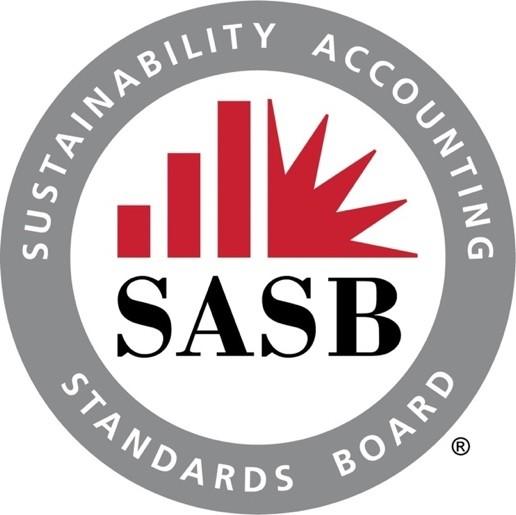
10 Steps to Become a Sustainability Professional - Dr. Mohammed S. Al-Surf
155
CDP Climate Change Survey Certification
Founded in 2000, CDP was the first platform to leverage investor pressure to influence corporate disclosure on environmental impact. Now with the world’s largest, most comprehensive dataset on environmental action, the insights that CDP holds empower investors, companies, cities, and national and regional governments to make the right choices today to build a thriving economy that works for people and the planet in the long term.
CDP is a not-for-profit charity that runs the global disclosure system for investors, companies, cities, states, and regions to manage their environmental impacts. The world’s economy looks towards CDP as the gold standard of environmental reporting with its richest and most comprehensive dataset on corporate and city action. CDP runs the global environmental disclosure system. Each year CDP supports thousands of companies, cities, states, and regions to measure and manage their risks and opportunities on climate change, water security and deforestation.
Why disclose as a company
As the world takes steps towards building a climate safe, deforestation free, water secure future, ambitious corporate action is more crucial than ever. Disclosure through CDP provides the bedrock for this. As the world’s most comprehensive dataset, CDP's data both fuels and tracks global progress towards building a truly sustainable economy for people and planet.
As well as meeting the demands of your investors and customers, reporting your environmental data through CDP enables you to protect and improve your company’s reputation, boost your competitive advantage, uncover risks and opportunities, and track and benchmark progress. In a world where mandatory disclosure is gaining
10 Steps to Become a Sustainability Professional - Dr. Mohammed S. Al-Surf
156
momentum, disclosing through CDP also helps companies get ahead of regulation.
CDP is the gold standard for corporate environmental reporting and is fully aligned with the TCFD recommendations.
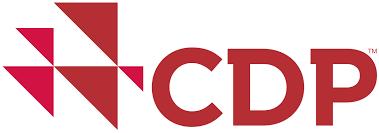
10 Steps to Become a Sustainability Professional - Dr. Mohammed S. Al-Surf
157
Integrated Reporting (IR) Fundamentals of Integrated Reporting Certificate
Accredited by the International Integrated Reporting Council (IIRC), this online selfstudy certificate program will ensure you understand the benefits of Integrated Reporting for your organization, develop your knowledge of the IIRC's International Framework and prepare you to successfully implement Integrated Reporting.
Key Topics
• Integrated reporting — the vision for better corporate reporting
• Integrated thinking — creating value over time
• Preparing the integrated report — communicating value creation
• Implementing integrated reporting — from financial management to value management.
Learning Outcomes
• Identify the business case for the introduction of Integrated Reporting, including integrated thinking, to an organization.
• Recall the fundamental concepts of value creation, the capitals, and the value creation process.
• Identify the requirements of the International IR Framework.
• Identify the factors which contribute to successful implementation of Integrated Reporting, including integrated thinking, within an organization.
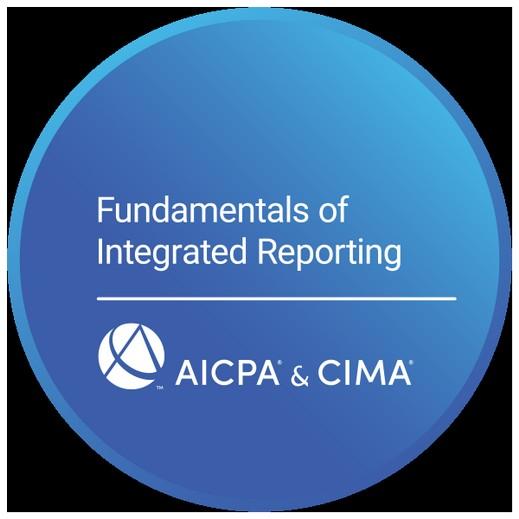
158 10
Steps to Become a Sustainability Professional - Dr. Mohammed S. Al-Surf
Certified Sustainability Reporting Assurer (CSRA)
Institute of Certified Sustainability Practitioners (ICSP) is an organization for Sustainability Practitioners. Established to educate professionals preserving natural and social capital resources by using principle professional guidelines. The CSRS (Certified Sustainability Reporting Specialist) Examination is one of the world’s premier and oldest assessments to promote and build sustainability skills, providing confidence and overall standards to help businesses, government, and NGOs develop best practices in sustainability management.
Today, ICSP in conjunction with the NCSR is opening this examination to those who have experience, knowledge, and skills in sustainability but have not taken the specific courses (Certified Sustainability Reporting Specialist) offered by NCSR to qualify for this Examination. We all recognize there are many paths to achieving success. Those interested in the CSRA certificate will have a basic level of proficiency in assurance engagement related to sustainability or CSR reporting and thus have an opportunity to become a more professional assurer and develop capability in the following areas:
Examining the completeness and compliance of sustainability/CSR reports
Identifying any data and information omitted that could have been included
Independent comments on targets, impacts, shortcomings and recommendations
Assessment of sustainability/CSR reporting including interpretation of reported data and performance
The CSRA Course concentrates more specifically on assurance engagement to verify corporate sustainability performance. The CSRA certification program has the following objectives:
Transfer practical skills in relation to assurance services development
10 Steps to Become a Sustainability Professional - Dr. Mohammed S. Al-Surf
159
Increase the knowledge of international standards in relation to assurance engagement in sustainability/CSR reporting and;
Provide insight into the various aspects of assurance engagement in relation to sustainability/CSR reporting, including recognized methods and techniques of auditing.
The aspects are covered in the CSRA Course session includes:
Assurance Standards and Criteria,
Scope of Assurance Engagement,
Risk Perspectives,
Stakeholder Dialogue,
Substantive Assurance,
Assurance Issues,
Assurance Reporting,
Reporting Standards, and
Reporting Practicalities.

10 Steps to Become a Sustainability Professional - Dr. Mohammed S. Al-Surf
160
Green Building Initiative’s Green Globes
Green Globes is a science-based, collaborative, and user-friendly assessment and rating system that provides a three-in-one evaluation of the environmental sustainability, health and wellness, and resilience of an individual building or an entire portfolio. Green Globes creates a roadmap for improving building performance and reducing climate impacts through a collaborative process supported by outstanding staff and expert assessors. Green Globes Assessors are highly qualified individuals that interact directly with teams throughout the process, including visiting the property to review progress toward certification, providing feedback on opportunities for improvement, and collaborating with teams to ensure projects meet their sustainability goals.
Here are the certificates a person can get from Green Globes:
Green Globes Emerging Professional (GGEP) is for college students and early career professionals
Green Globes Professional (GGP) is for professionals with at least five years of experience in the design and construction phases of green building

10 Steps to Become a Sustainability Professional - Dr. Mohammed S. Al-Surf
161


10 Steps to Become a Sustainability Professional - Dr. Mohammed S. Al-Surf
162
International Living Future Institute (ILFI)’s Living Building Challenge
The Living Building Challenge has been known to be the world’s most demanding green building and sustainable design certification. Living Buildings work towards having net-zero or even net-positive energy, as well as being free of any toxic chemicals. The International Living Future Institute works with individuals and organizations that are coming up with innovative solutions for improving our relationship with both the natural environment and the built environment around us. With accreditation from this institute, practitioners have an edge in their field by displaying their broadened knowledge and expertise in sustainability practices.
Living Future Accreditation (LFA) demonstrates proficiency in ILFI’s certification programs and understanding of leading-edge regenerative design philosophy

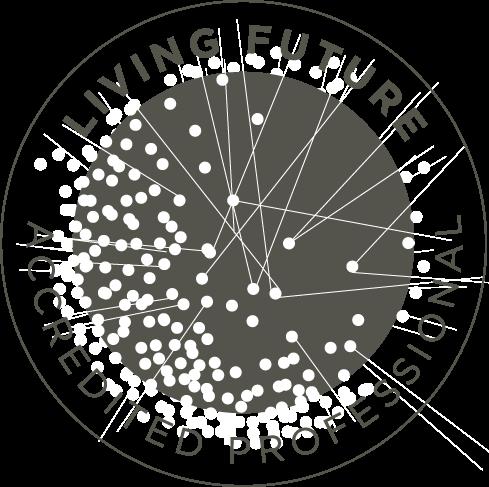
10 Steps to Become a Sustainability Professional - Dr. Mohammed S. Al-Surf
163
International WELL Building Institute’s WELL Building Standard
The WELL Building Standard is a guide for generating and verifying locations that advance human prosperity and contentment across 10 essential ideas. WELL functions on any size, from one inside space to an entire organization. The WELL AP test and credential are regulated by Green Business Certification Inc. (GBCI), an autonomous body offering impartial oversight for certifications of professionals as well as projects certification counting those related with the standards of the building code regulations set out in Well; in association with IWBI GBCI supervises the process of redevelopment during 2020-2021 timeframe concerning reestablishing exams belonging to this program: An ISO/ IEC 17024 accredited entity , GBCI sticks strictly to best practices when it comes down to crafting, distributing along with preserving personnel qualifications credentials such like these relative ones released under name 'WELL AP'.
The WELL AP credential is awarded when you pass the WELL AP exam. Candidates must be at least 18 years of age to be eligible to sit the exam. There are no other prerequisites, although prior WELL project experience or exposure to the WELL Building Standard is highly recommended.
WELL Accredited Professional (WELL AP) is open to students as well as experienced professionals
The WELL AP exam evaluates your understanding of WELL strategies and programs.
Length: 2 1/2 hours
Format: 115 multiple-choice questions
Languages: English, more languages coming in 2023
10 Steps to Become a Sustainability Professional - Dr. Mohammed S. Al-Surf
164
The WELL AP exam is based on the Q4 2020 addenda version of WELL v2 and three guidebooks.
WELL Building Standard, v2 with Q4 2020 addenda
WELL Certification Guidebook with Q3-Q4 2020 addenda
WELL Portfolio Guidebook with Q4 2020 addenda
Get To Know The New WELL AP Exam Guide
The WELL AP Candidate Handbook
You will not be expected to memorize these materials, rather, to demonstrate an ability to apply the material in practical contexts. Sometimes this calls for recall of key knowledge, at other times, your ability to refer to it in developing recommendations and implementing strategies.
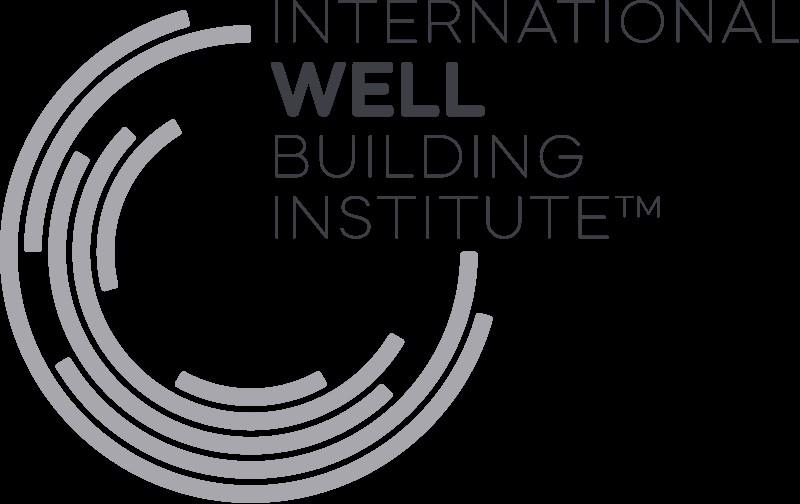
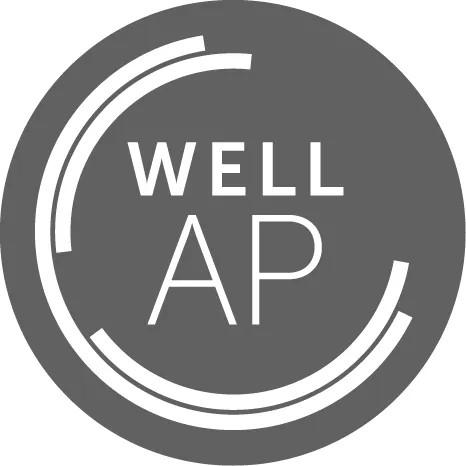
10 Steps to Become a Sustainability Professional - Dr. Mohammed S. Al-Surf
165
Certified Green Building Engineer - GBE™
Individuals must complete the CEM® training program requirement and have successfully passed the CEM® exam and hold a current U.S. issued P.E. license, can apply for the Green Building Engineer Certification. AEE's Certified Green Building Engineer (GBE) program awards special recognition to those green building, design and construction engineering professionals who have demonstrated a high level of competence and ethical fitness for green building related disciplines, as well as laws governing and affecting green building professionals.
Objectives
To raise the professional standards of those engaged in green building engineering, design and construction.
To improve the practice of green building engineering by encouraging professionals in a continuing program of professional development.
To identify persons with acceptable knowledge of the principles and practices of green building engineering related disciplines and laws governing and affecting professionals by meeting prescribed standards of performance and conduct.
To award special recognition to those Green Building Engineers who have demonstrated a high level of competence and ethical fitness for green building engineering, design and construction.

10 Steps to Become a Sustainability Professional - Dr. Mohammed S. Al-Surf
166
Certifications Related to Energy for The Built Environment
Green building principles are a great way to reduce a building’s impact when remodeling or undergoing new construction, but there are also huge opportunities in improving the energy efficiency and management of existing buildings and connecting them to renewable energy sources. These certifications are of most value to people whose work will focus on energy in buildings and/or renewable energy procurement. As with the green building certifications, those hoping to work in sustainability strategy or program management may find this training helpful as well.

167
10 Steps to Become a Sustainability Professional - Dr. Mohammed S. Al-Surf
Association of Energy Engineers (AEE)
The AEE offers dozens of certifications around energy management, sustainable development and utility services for the commercial, industrial, institutional, governmental, energy services and utility sectors.
Certified Energy Manager (CEM) this is the AEE signature certification and serves as the basis for many other certifications. Training for this certification teaches candidates how to implement energy management strategies for a building or portfolio of buildings
Certified Business Energy Professional (BEP)
Certified Energy Procurement Professional (CEP)
Renewable Energy Professional Certification (REP)
Certified Sustainable Development Professional (CSDP)

10 Steps to Become a Sustainability Professional - Dr. Mohammed S. Al-Surf
168
Certified Energy Manager
The Certified Energy Manager certification from the Association of Energy Engineers (AEE) validates that a person can implement energy management strategies to reduce energy consumption. The association recommends the certification for employees who work to optimize energy use in buildings and systems.
To earn the certification, candidates complete a training program that covers energy management principles, including :
• Codes and standards
• Electrical power systems
• Maintenance and commissioning
• Renewable energy
Candidates then take an exam that evaluates their proficiency in energy efficiency. The AEE also requires candidates to have a combination of education and work experience in energy, building or facility management.
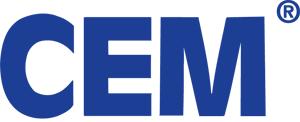
169
10 Steps to Become a Sustainability Professional - Dr. Mohammed S. Al-Surf
Certified Business Energy Professional
The AEE also offers the Certified Business Energy Professional certification. This credential is for business, marketing and energy employees with extensive knowledge of energy management and who work to implement energy improvement programs for businesses. Candidates for the credential complete a training program that teaches various energy concepts, including:
• Utility rates
• Energy audits
• Energy accounting and marketing
• Industrial systems
• Energy-efficient equipment
Individuals earn the certification by passing an exam at the end of the program. The organization requires candidates to have their Certified Energy Manager credential and a combination of education and work experience in business, marketing, sales or energy.
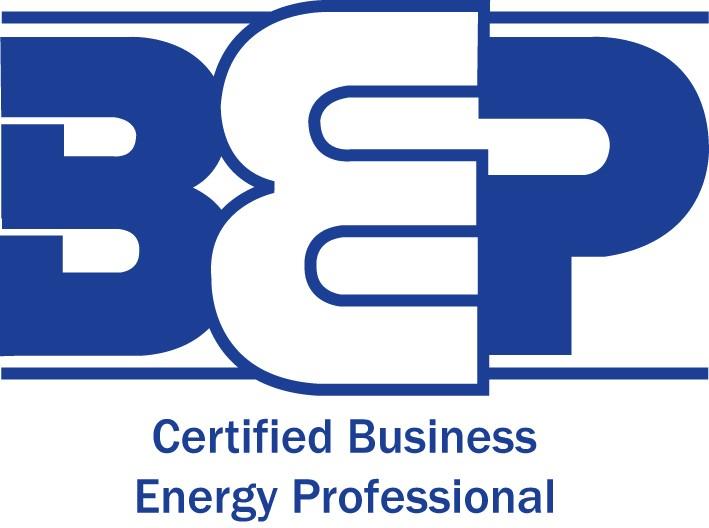
10 Steps to Become a Sustainability Professional - Dr. Mohammed S. Al-Surf
170
Renewable Energy Professional Certification
Another AAE credential is the Renewable Energy Professional Certification, which recognizes knowledge of renewable and alternative energy technologies. It demonstrates that a person understands renewable energy's core practices and applications. To earn the certification, candidates complete a training program that covers many areas of renewable energy, including:
• Carbon reduction
• Solar and wind energy
• Hydropower
• Alternative energy programs
• Transportation systems
Candidates pass a final exam to receive the credential. AEE requires candidates to have their Certified Energy Manager certification and a degree or equivalent experience in renewable or alternative energy.

10 Steps to Become a Sustainability Professional - Dr. Mohammed S. Al-Surf
171
Certified Building Commissioning ProfessionalCBCP®
The Association of Energy Engineers (AEE) has certified thousands of energy industry professionals since 1981. AEE's certifications are recognized by governmental agencies like the U.S. Department of Energy and the U.S. Agency for International Development, as well as by utilities, end users, and energy service companies. Earning the Certified Building Commissioning Professional (CBCP) designation shows that you have the knowledge and experience necessary to effectively commission new and existing buildings. You have demonstrated high levels of competence and specialized knowledge within your field.
Building commissioning professionals ensure that new building systems are designed, installed, tested, and capable of being operated and maintained according to the owner’s intent, requirements, and operational needs. They lead, plan, coordinate and document the commissioning process on buildings such as hospitals, data centers, airports, etc.
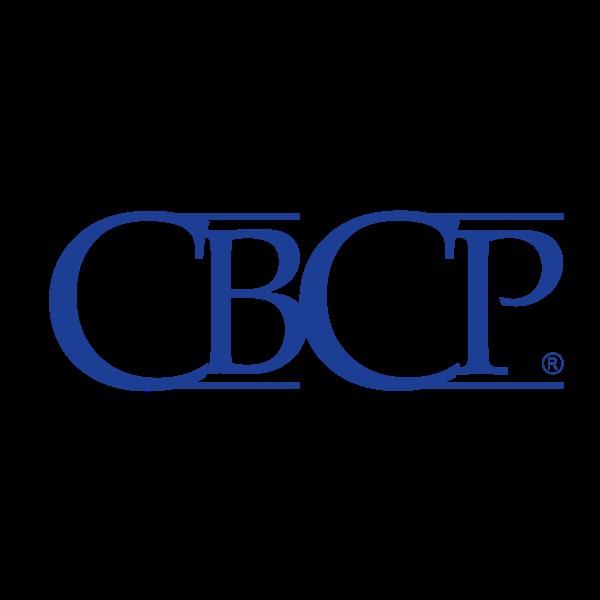
10 Steps to Become a Sustainability Professional - Dr. Mohammed S. Al-Surf
172
Specialty Certifications
If you’ve been working in sustainability for even a small amount of time, you already know that the scope of topics that could fall under the term "sustainability" is virtually limitless.
As a result, there are also endless possibilities for training and certification in sustainability for different industries, issues and disciplines. Here are several other notable professional certifications that don’t fall neatly into one of the categories above:
Envision Sustainability Professional (ENV SP)
International Supply Chain Education Alliance Certified Supply Chain Analyst
Global Association of Risk Professionals (GARP) Sustainability and Climate Risk (SCR) Certificate
The American Center for Life Cycle Assessment (ACLCA) Life Cycle Assessment Certified Professional (LCACP)
The CFA Institute Certificate in ESG Investing
Alliance for Water Stewardship (AWS) AWS Professional (Foundation, Advanced and Specialist levels)
The World Bank City Climate Planner (CCP) Certificate Program
The Events Industry Council Sustainable Event Professional Certificate
Green Roofs for Healthy Cities Green Roof Professional (GRP) Accreditation
The Institute of Environmental Management and Assessment (IEMA) (based in the United Kingdom) Chartered Environmentalist (CEnv)
The American Institute of Chemical Engineers (AIChE) Institute for Sustainability (IfS) AIChE Credential for Sustainability Professionals (ACSP)
Life Cycle Assesment Certified Professional (LCACP)
10 Steps to Become a Sustainability Professional - Dr. Mohammed S. Al-Surf
173
Envision Sustainability Professional (ENV SP)
The Institute for Sustainable Infrastructure (ISI) offers the Envision Sustainability Professional certification, which attests to a person's understanding of the remarkable Envision Framework. This tool enables individuals to evaluate the sustainability of civil infrastructure projects such as roads and bridges. Candidates must complete an educational program followed by a written test in order to be eligible for this accreditation.
As global recognition grows concerning its excellence and effectiveness in creating sustainable, durable, equitable infrastructures; so too is it becoming more essential that professionals involved with these structures have their ENV SP designation on hand 8 thousand people around the world can attest to this. This credential provides them with skillsets allowing them access into applying those incomparable EnVision concepts within their day-to-day activities successfully. The course covers various areas of the framework, including:
• Leadership
• Resource allocation
• Climate
People can meet the course requirements by completing seven online modules or attending a full-day workshop. Candidates earn the certification with a 75% or higher score on the 75-question final exam.

174
10 Steps to Become a Sustainability Professional - Dr. Mohammed S. Al-Surf
175
International Supply Chain Education Alliance: Certified Supply Chain Manager
ISCEA's mission is to provide total supply chain knowledge to healthcare, manufacturing and service industry professionals through Education, Certification and Recognition. ISCEA is the developer of Internationally recognized certification programs of Certified Supply Chain Manager (CSCM), Certified Supply Chain Analyst (CSCA), Certified Healthcare Supply Chain Analyst (CHSCA) Certified Lean Master (CLM), Certified Supply Chain Technology Professional (CSCTP), Certified Demand Driven Planner (CDDP) and others. ISCEA is the governing body for the Ptak Prize. ISCEA members hold mid to upper supply chain management positions in Global 2000 companies.
The International Supply Chain Education Alliance (ISCEA) was the first organization certifying supply chain professionals around the globe, and it remains the worldwide authoritative resource for supply chain career development with thousands of certificate holders commanding top-tier salaries.
This program is designed to provide you with the opportunity to demonstrate your mastery of the body of knowledge pertaining to supply chain management. It is designed, combining theory and current industry practice, to give you insight and support for making daily decisions. In addition to offering in-depth coverage of standard supply chain tools, strategies, and methodologies, it also covers topics such as Leadership, Theory of Constraints, Lean Six Sigma and Operational Accounting.
10 Steps to Become a Sustainability Professional - Dr. Mohammed S. Al-Surf
176
A CSCM designation demonstrates that you are both an expert in supply chain theory, and a practitioner. It demonstrates your capability to manage and lead a modern supply chain organization.

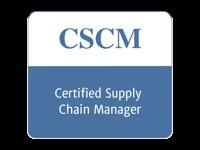
10 Steps to Become a Sustainability Professional - Dr. Mohammed S. Al-Surf
177
Global Association of Risk Professionals
(GARP) Sustainability and Climate Risk (SCR)
Certificate
The SCR certificate is part of GARP's flagship certifications and educational programs. This program challenges candidates to understand and apply a range of knowledge and skills necessary to function effectively as a sustainability and climate risk specialist. As the leading professional association for risk managers, GARP developed the SCR program to prepare candidates for sustainability and climate risk challenges. Professionals who complete this certificate will:
• Gain the knowledge to become climate risk leaders
• Obtain the skills to advance effective change
• Be able to lead their organization's incorporation of sustainability standards
The SCR certificate curriculum, study materials, and exam will cover the following topics:
• Foundations of Climate Change: What is Climate Change?
• Sustainability
• Climate Change Risk
• Sustainability and Climate Policy, Culture, and Governance
• Green and Sustainable Finance: Markets and Instruments
• Climate Risk Measurement and Management
• Climate Models and Scenario Analysis
• Net Zero
10 Steps to Become a Sustainability Professional - Dr. Mohammed S. Al-Surf
178
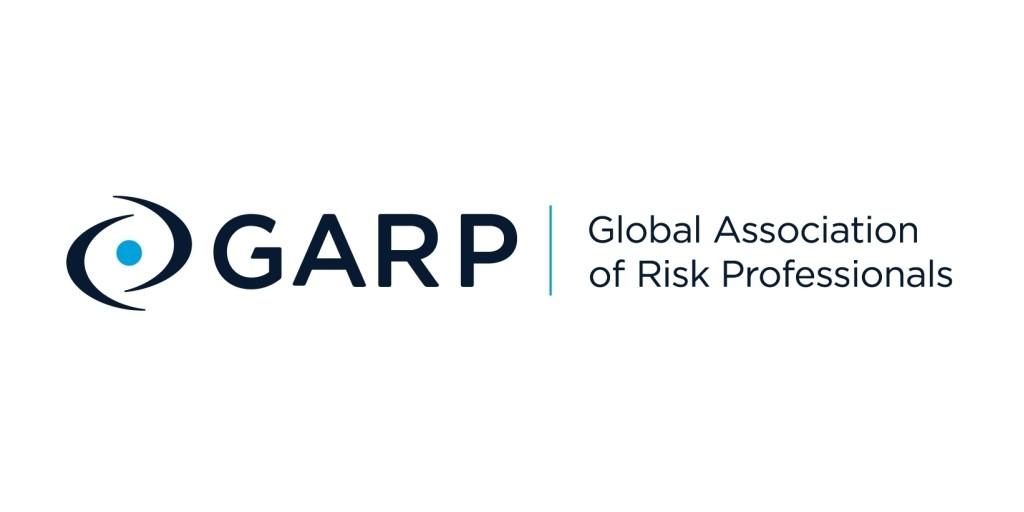
10 Steps to Become a Sustainability Professional - Dr. Mohammed S. Al-Surf
179
Carbon Auditing Professional - CAP™
AEE’s Certified Carbon Auditing Professional (CAP™) program is designed to provide recognition for professionals who have distinguished themselves as leaders in the growing field of carbon reduction.
Carbon auditing professionals help companies and organizations to reduce their carbon footprint and become as “carbon-neutral” as possible. They understand the principles of the Paris climate agreement, Kyoto Protocol and other guidelines published by WRI, ISO, and WBCSD. For firms engaged in this area, CAPs can interpret current trends and legal requirements; conduct carbon audits and emission inventories; identify reduction opportunities; set up a GHG emissions management program, report carbon emissions in compliance with international standards and complete the emissions verification process. They are also able to structure financing and marketing to maximize project success.
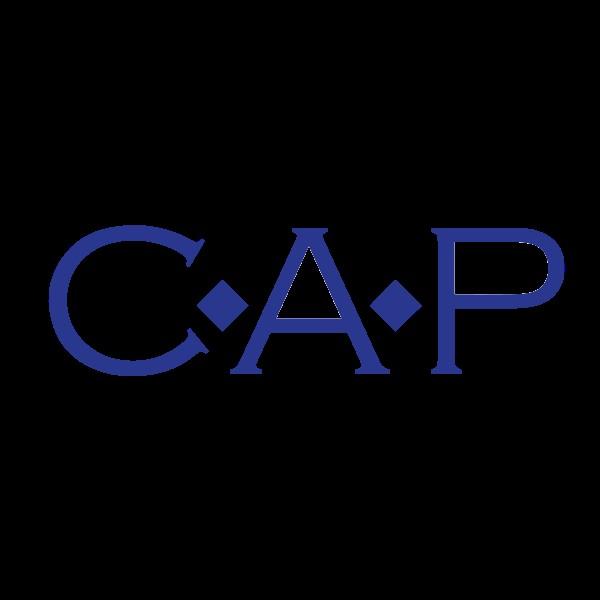
10 Steps to Become a Sustainability Professional - Dr. Mohammed S. Al-Surf
180
The CFA Institute Certificate in ESG Investing
The CFA Institute Certificate in ESG Investing gives individuals both practical application and technical expertise within the rapidly-developing area of ESG investing - an opportunity to quicken progress as well as showcase purpose. The certification and educational materials have been crafted by leading professionals for practitioners, being officially recognized by UN Principles for Responsible Investment (PRI), a separate body that strives to persuade investors into using responsible investment strategies in order to augment returns while managing business risks more efficiently.
This certificate is managed, owned, and awarded worldwide under the authority of CFA Institute after initially having been developed and given out by CFA Society UK. This credential was created with asset managers who wish to deepen their knowledge regarding how they can conduct analysis on material environmental factors then incorporate them into everyday operations at hand; it's suitable for anyone dealing directly or indirectly with investments, such as salespeople distributing wealth management items along other similar roles.
The CFA Institute Certificate in ESG Investing exam consists of 100 multiple choice questions and to be completed within 2 hours and 20 minutes
Section 1: Exam Questions
Section 2: End of Exam Notification
Section 3: Survey
181 10
Steps to Become a Sustainability Professional - Dr. Mohammed S. Al-Surf

10 Steps to Become a Sustainability Professional - Dr. Mohammed S. Al-Surf
182
Alliance for Water Stewardship (AWS) AWS Professional (Foundation, Advanced and Specialist levels)
AWS is a global membership collaboration comprising businesses, NGOs and the public sector. Our members contribute to the sustainability of local water-resources through their adoption and promotion of a universal framework for the sustainable use of water – the International Water Stewardship Standard, or AWS Standard – that drives, recognizes and rewards good water stewardship performance. AWS Standard System Training is presented as a single package, which takes trainees sequentially through three levels: Foundation, Advanced and Specialist.
Foundation Level
The first level of training provides an introduction to the concept of water stewardship and an overview of the AWS Standard. Through this course, participants gain a foundation-level knowledge of water stewardship and water risk, the AWS Standard and tools that support ongoing water stewardship activity. Foundation Level is an important first step for those wishing to implement the AWS Standard and promote water stewardship.
Advanced Level
Advanced training in AWS Standard V2.0 provides a more comprehensive understanding of the criteria and indicators used to assess a site's compliance with the standard. This course uses a specially developed case study to illustrate how these concepts are applied in practice. Participants will gain a deeper understanding of how the AWS Standard is applied at catchment level and within supply chains. This training will be invaluable for those involved in implementing the standard, as well as specialist service providers working towards their AWS Professional credentials.
10 Steps to Become a Sustainability Professional - Dr. Mohammed S. Al-Surf
183
Specialist Level
The Specialist Training course provides complete coverage of the AWS assurance program, accreditation and certification requirements, and other elements of the AWS System. The course is valuable to implementers, consultants, and anyone else who is interested in joining the Professional Credentialing program. It provides a complete understanding of the auditing procedures and certification requirements.
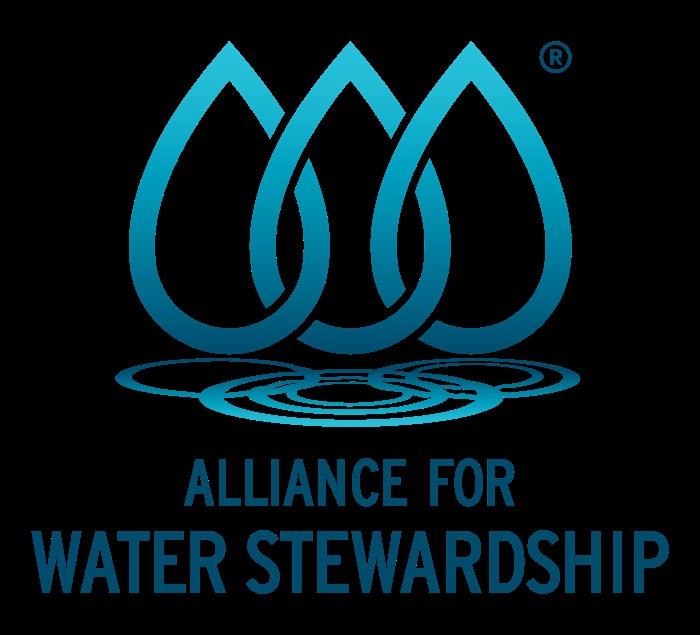
10 Steps to Become a Sustainability Professional - Dr. Mohammed S. Al-Surf
184
Certified Water Efficiency Professional - CWEP™
The Certified Water Efficiency Professional (CWEP) program is designed to help educate and qualify individuals in the water/energy management field on best practices for improving water efficiency. Water efficiency professionals are often energy managers that have selected to focus on, or expand into the specific area of water management. This may include improving water usage and efficiency in an existing building or implementing a sustainability program that includes water efficiency for their firm or organization. These individuals will understand water systems and technologies and will have specific knowledge on utility billing practices, and policies, incentives, and water specific mandates made by local municipalities, federal, or state governments. They use their specialized knowledge to assist firms or organizations; they audit existing systems; set realistic goals for new projects; and get the most significant benefits when implementing systems at a small or large scale.

185
10 Steps to Become a Sustainability Professional - Dr. Mohammed S. Al-Surf
The World Bank City Climate Planner (CCP) Certificate Program
The City Climate Planner (CCP) Certificate Program is designed to help increase the number of qualified local climate planning specialists around the world. By offering training and professional certificates, the CCP will provide city practitioners with the skills they need to design, plan and implement green growth initiatives in their cities. This will help to create more sustainable and livable communities.
The City Climate Planner (CCP) Certificate Program is a training and professional certificate program developed by the World Bank and global partners to increase the global talent base of climate planning professionals. The first certificate to be developed focuses on GHG emission inventories, as they are seen as key building blocks in development of quality climate action plans. The result is a training on the latest internationally accepted standard for GHG inventories, a rigorous certificate exam that allows candidates to demonstrate mastery of the content, and access to professional networks that support this work.
The first certificate developed under the CCP program is for community-level GHG emissions inventory accounting. The certificate is for individuals who help cities or communities develop and track GHG emissions at the local scale. The Global Protocol for Community-Scale Greenhouse Gas Emission Inventories (GPC), which is an internationally-recognized standard for developing local inventories, forms the basis of this certificate.
The certificate exam is a key component of the City Climate Planner Certificate Program. The exam was written and developed by experts in GHG emissions inventory accounting and tests the knowledge of exam takers rigorously. Successful
10 Steps to Become a Sustainability Professional - Dr. Mohammed S. Al-Surf
186
completion of the exam demonstrates mastery of the GHG inventory building process and its connection to city climate planning, supporting professional development in the field.
A professional credential for individuals working in city climate action can bring the following benefits:
• Draw individuals to the field of climate planning by establishing a professionalized career path
• Provide a quality assurance mechanism and signal to potential employers
• Establish a set of technically sound practices that can help enhance the overall quality of climate planning
• Foster communities of practice or professional associations that evolve and grow the profession
• Link inventory findings to broader local and national climate goals to help formulate and shift policy to benefit city scale green growth

10 Steps to Become a Sustainability Professional - Dr. Mohammed S. Al-Surf
187
The Events Industry Council Sustainable Event Professional Certificate
The Sustainable Event Professional Certificate (SEPC) program is designed for event professionals who want to accelerate sustainability and social impact in their organizations and global business events. The program provides guidance that will be valuable for reaffirming our industry’s commitment to a recovery that is resilient, sustainable, and equitable.
This course has recently been expanded from the in-person program and provides the knowledge and tools for event strategists to design and implement their own sustainable events. Developed by a globally diverse group of business events industry leaders and experts in the areas of sustainability, social impact, and event management, this highly interactive and accessible format takes users on an engaging, insightful, and easy-to-follow journey.
The Sustainable Event Professional Certificate is comprised of 16 modules that include understanding the business value of sustainability, improving environmental performance of meetings and events, and effective methods for achieving social impact. By completing this program, event professionals will be equipped with the skills and knowledge they need to create more sustainable, responsible, and profitable events.
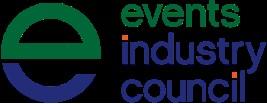

188 10
Steps to Become a Sustainability Professional - Dr. Mohammed S. Al-Surf
10 Steps to Become a Sustainability Professional - Dr. Mohammed S. Al-Surf
189
Green Roofs for Healthy Cities Green Roof Professional (GRP) Accreditation
In 2009, Green Roofs for Healthy Cities (GRHC) introduced the GRP Training & Certification program to bridge any knowledge chasm in sector instruction and finest practices. Previously, no traditional area of expertise or learning had all the capabilities needed for successful green roofing - from construction science, horticulture, irrigation system techniques, waterproof covering principles, vegetation physiology, structural engineering plus more. Ever since then, over 750 people have passed on the GRP Credential Exam as well as obtained their own GRP classification.
Green Roof Professional (GRP) Training program is comprised of three courses:
• Green Roof Design & Installation
• Green Roof Waterproofing & Drainage
• Green Roof Plants & Growing Media
Each course has been carefully designed by experts to help you develop the knowledge you need to differentiate yourself within the market. Because the GRP Accreditation Exam is built upon the material presented in the courses, in-class and online training are the ultimate resources when preparing for the examination. GRP accreditation is an indicator that an individual has achieved a specific knowledge level regarding green roof design, project management, installation, and maintenance.
Passing the test indicates that you have exhibited proficiency and are considered essential by the green roof sector at a certain juncture. It is not an authorization, nor does it signify expertise in this domain. For instance, someone may be certified as LEED Accredited Professional but do not mean they possess 'expertise' to construct a green building structure. To pass GRP Certification Exam candidates must receive
10 Steps to Become a Sustainability Professional - Dr. Mohammed S. Al-Surf
190
80% or more on their scorecard. Results will be emailed within 2-3 weeks after taking the exam. Successful applicants shall get GRP Credential Package sent to them while unsuccessful ones will obtain sub-score report of examination which can help for further study purposes. Retaining standing with program necessitates obtaining minimum 16 continuing education credits every two years; eight out of these should relate to activities conducted under Green Roofs Human Capital such like the conference and courses etcetera. Participants also need to hold a valid membership with the organization.
Accredited Green Roof Professionals will be ideally positioned to be the professional of choice on green roof projects. Benefits include:
• Earn confidence and credibility in the green infrastructure field
• Distinguish yourself among industry professionals
• Protect your green roofing projects from sub-standard industry practice
• Optimize the range of benefits from your green roof projects
• Ensure projects provide long term results for maximum client satisfaction
• Earn up to 21 Continuing Education Units (CEUs) for GRP Training course completion
• Stay up to date in industry developments and best practice
• Become part of the GRP Community and benefit from an extensive professional network
• Demonstrate your commitment to the green roofing profession
10 Steps to Become a Sustainability Professional - Dr. Mohammed S. Al-Surf
191


10 Steps to Become a Sustainability Professional - Dr. Mohammed S. Al-Surf
192
The Institute of Environmental Management and Assessment (IEMA) (based in the United
Kingdom) Chartered Environmentalist (CEnv) And Registered Environmental Practitioner (REnvP)
Chartered Environmentalist (CEnv)
The Chartered Environmentalist credential is growing in prominence and reputation and is increasingly seen as a highly desirable demonstration of an individual’s competence. Being registered as a Chartered Environmentalist means that an individual has been judged by their peers to be working at the highest possible standards in the environmental profession. This credential is globally recognized and respected and holding it can open doors to new career opportunities.
Chartered Environmentalists must be able to demonstrate:
• High level of theoretical knowledge of sustainability and environmental issues
• Successful application of this knowledge to lead sustainable management of the environment
• Effective interpersonal and communication skills
• A personal commitment to maintain professional standards, and to recognize obligations to society, the profession, and the environment
• The option to use the post-nominal letters “CEnv” provides a clear way for Chartered Environmentalists to signal this knowledge and expertise to employers and potential clients
10 Steps to Become a Sustainability Professional - Dr. Mohammed S. Al-Surf
193
All Chartered Environmentalists commit to following a Code of Professional Conduct and undertaking continued professional development (CPD). These showcase to employers that the individual remains consistently at the high standard they expect of Chartered Environmentalists.
Registered Environmental Practitioner (REnvP)
The Registered Environmental Practitioner (REnvP) designation serves to commend the expert level of practitioners within the environmental field. It is a symbol that indicates an individual's proficiency, knowledge and expertise in this domain; one which spans fields from academia to government agencies, industry bodies and consultancies.
Holders of such distinction are devoted to carrying out actions for minimising ecological damage while maximising natural quality - with their capabilities being put into service for nature as well as people around them alike. As a REnvP-accredited professional you can showcase your exclusive set talents coupled with your dedication towards upholding ethical norms via continual self-development efforts!

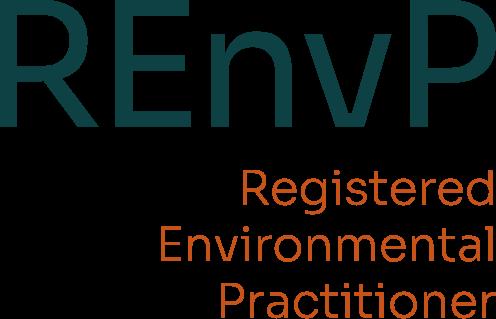

10 Steps to Become a Sustainability Professional - Dr. Mohammed S. Al-Surf
194
The American Institute of Chemical Engineers (AIChE) Institute for Sustainability
(IfS) AIChE
Credential for Sustainability Professionals (ACSP)
The IfS with its many equals established a baseline definition of what Sustainability entails, a Body of Knowledge (BOK) in the field of sustainability. This Body of Knowledge is at the heart of the new sustainability Credential is based on the AIChE Sustainability Index and focuses on the seven areas critical to a world class sustainability effort: strategic commitment, innovation, environmental performance, safety performance, product stewardship, social responsibility and value chain management.
The AIChE Credential for Sustainability Professionals (ACSP) will distinguish recipients as qualified experts in sustainability, and will be supportive to those engineers who aspire to the Professional Engineering License. The program is also designed to help companies control training costs by pooling expertise and by providing readily accessible resources that have been evaluated for quality.


195
10 Steps to Become a Sustainability Professional - Dr. Mohammed S. Al-Surf
Life Cycle Assessment Certified Professional (LCACP)
LCACP certification allows the LCA practitioner to demonstrate a level of expertise in LCA practice and a commitment to the ACLCA Code of Ethics. The LCACP exam is a closed-book 3.5-hour multiple choice exam in English. There are 184 questions. The examination covers: General LCA knowledge, ISO standards, LCI, LCIA, Project management, Data quality management, post-impact calculations, LCA modeling/software, Statistics, Ethics, and Emerging issues. The LCACP certification requires renewal at three-year intervals. During those three years, LCACPs must earn continuing education units (CEUs) in accordance with the recertification policy.
Certifying Organization: American Center for Life Cycle Assessment (ACLCA)

10 Steps to Become a Sustainability Professional - Dr. Mohammed S. Al-Surf
196
The Australian Life Cycle Assessment Society (ALCAS), Life Cycle Assessment Certified
Practitioner (LCACP)
The Australian Life Cycle Assessment Society (ALCAS) is Australia’s peak professional organisation for people involved in the use and development of Life Cycle Assessment (LCA), management and thinking. ALCAS was established in 2001, an important milestone in Australia’s development of LCA. It was incorporated to promote life cycle practices and sustainable development, and to coordinate the rapidly growing professional community in Australia. A not-for-profit organisation, ALCAS has individual and corporate members from industry, government, academia and service organisations. Anyone interested in the practice, use, development, education, interpretation of and advocacy for life cycle based approaches is eligible for membership
Here’s how to begin the process
Review pre-requisites for LCACP Exam below
Submit application with proof of prerequisites met and pay the application fee
Once prerequisites have been approved, pay the exam fee
Reserve exam date and time (Proctored LCACP exam is available online)
The Exam
The LCACP exam is a closed-book 3.5-hour multiple choice exam in English. There are 184 questions. The examination covers General LCA knowledge, ISO standards, LCI, LCIA, Project management, Data quality management, Post-impact calculations, LCA modeling/software, Statistics, Ethics, and Emerging issues.
10 Steps to Become a Sustainability Professional - Dr. Mohammed S. Al-Surf
197
Exam Locations
The LCACP exam can be taken anywhere in the world at your convenience.
Maintaining Certification
The LCACP certification requires renewal at three-year intervals. During those three years, LCACPs must earn continuing education units (CEUs) in accordance with the recertification policy. The Recertification Process describes how to keep current
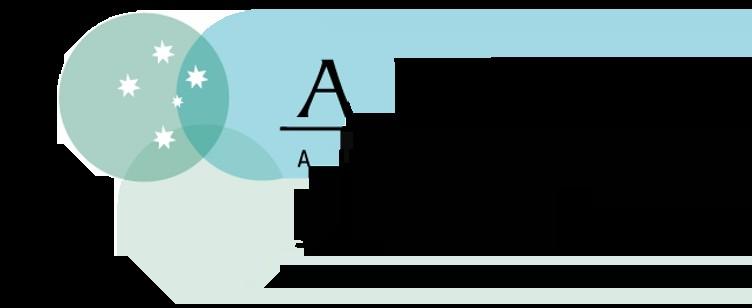
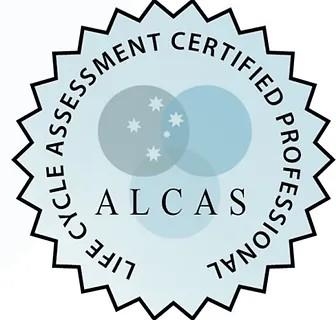
10 Steps to Become a Sustainability Professional - Dr. Mohammed S. Al-Surf
198
GEP Environmental
GEP Environmental are premier suppliers of energy and ecological counselling administrations to customers the nation over. They have been approved by the Institute of Environmental Management and Assessment (IEMA) as a Training Centre, offering Certified and Approved programs to members universally. GEP offer an assortment of classes covering waste administration, natural supportability, just as environmental mindfulness that give accreditation upon consummation with endorsement demonstrating proficient learning objectives were met. Their courses utilize down-toearth strategies for an organizations driven outcomes while keeping up their scholastic quality through IEMA confirmation
• Introduction to Environmental Awareness (IEMA Approved)
o A one-day IEMA certified course to equip delegates with the skills to identify and action opportunities to enhance environmental performance and identify cost savings in the workplace.
• Carbon Management (IEMA Certified Course)
o A one-day IEMA certified course to provide you with tools and information for measuring and managing your organizations carbon emissions. Identify opportunities for reducing carbon while maximizing business benefits.
• Green Champions Environmental Engagement (GEP Certified)
o Provides an entry-level broad understanding of sustainability and environmental issues. The course will ensure that your Green Champions understand what environmental initiatives your
10 Steps to Become a Sustainability Professional - Dr. Mohammed S. Al-Surf
199
• Pathways to Net Zero Carbon (IEMA Certified Course)
o Provides participants with clear guidance on best practice on the response to the climate crisis. This course will equip individuals with a strategic and operational overview of environmental sustainability that can be applied to your relevant industry and work area.
• Introduction to Net Zero Carbon (IEMA Certified Course)
o Provides guidance on best practice on the response to the climate crisis. The course provides a fundamental understanding and operational overview of environmental sustainability that can be applied to your relevant industry and work area.
• IEMA Foundation Certificate in Environmental Management (leading to AIEMA)
o Designed to provide learners with a foundation of environmental and sustainability knowledge that the learner can utilize within their organization.
• IEMA Certified Internal EMS Auditor Course
o Designed to provide individuals who have been allocated the responsibility to audit an organization’s EMS the skills and knowledge to do so.
• IEMA Environmental Sustainability Skills for Managers
o Designed to support managers and supervisors in understanding the strategic and operational implications environmental sustainability has
10 Steps to Become a Sustainability Professional - Dr. Mohammed S. Al-Surf organization has implemented in order to manage its environmental impacts.
200
• IEMA Environmental Sustainability Skills for the Workforce.
10 Steps to Become a Sustainability Professional - Dr. Mohammed S. Al-Surf on them, their team and department, enabling them to contribute to the improved environmental sustainability of their organization.
o Designed to provide the learner with a practical introduction to environmental sustainability so they are equipped with the knowledge, understanding and motivation to make a positive difference within their organization.
201
ISO 14001 LEAD AUDITOR
An organization that wishes to be certified to ISO 14001 must develop and implement an environmental management system meeting the requirements of the standard. The standard provides a framework for organizations to manage their environmental responsibilities in a systematic way. It can help companies improve their environmental performance, reduce waste, conserve resources, and prevent pollution. By following the iso 14001 standards, businesses will also send a message to employees, customers, suppliers, and other stakeholders that they are committed to minimizing their impact on the environment.
On successfully completing the course, applicants will be able to:
Perform an audit as per the requirements of the ISO 14001:2015 Standard
Understand key elements of the ISO 19011 and ISO/IEC 17021 Standards
Be familiar with key environmental issues
Plan an audit against a set of audit criteria
Successfully execute an environmental management systems audit
Understand the differences between QMS and EMS audits
Create clear, concise, and relevant audit reports
Communicate the audit findings to a client

202
10 Steps to Become a Sustainability Professional - Dr. Mohammed S. Al-Surf
SDG Related
Certified Sustainable Development ProfessionalCSDP®
The Certified Sustainable Development Professional (CSDP) program recognizes individuals who are experts in developing and implementing sustainability programs, as well as understanding environmental issues, alternative energy sources, carbon reduction methods, sustainable policy programs, energy-efficient technologies in sustainable buildings, the impact of sustainable development policies, renewable energy options, sustainable transportation methods, and water conservation.
Certified Sustainable Development Professionals have a deep understanding of development practices, policies, technical requirements, program analysis, and financial assessments related to sustainable development. They know all about the different approaches an organization might take when developing or implementing sustainability programs. CSDPs usually work in commercial, institutional, industrial, or governmental sectors and have keen insight into a given market - such as green building construction and environmental mitigation.
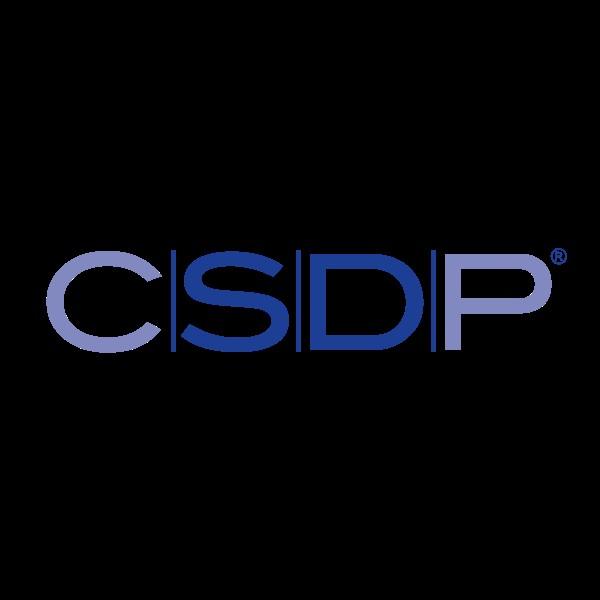
10 Steps to Become a Sustainability Professional - Dr. Mohammed S. Al-Surf
203
The SDG Academy
The SDG Academy offers free graduate-level courses on sustainable development for learners around the world and has educated more than half a million people on the SDGs. The SDG Academy is the premier source of high-quality resources and guidance on education for the SDGs, with the mandate to enrich the field of sustainable development and achieve Agenda 2030.
The mission of the SDG Academy is rooted in the early days of broadcasting Professor Jeffrey Sachs’ lectures from Columbia University in 2007. The lectures included guest speakers from leaders in government, practitioners in development, and UN leadership. The combination of mixing academic rigor with policy and practice to address issues of human development was electrifying for students in an in-person classroom.
To reach a wider audience, Professor Sachs decided to broadcast his live sessions and have two-way dialogues with classrooms all over the world. This was the start of Global Classroom and the development of our 38-course portfolio that can be found on edX and other platforms. The SDG Academy seeks to fulfill Professor Sachs’ vision of having free online, open education resources, which include curriculum, pedagogy, degrees, training, and community, for all stages of education and life. Resources under a creative commons license that can be edited, translated, and adapted for local needs will create the opportunity for extensive worldwide accredited teacher training in sustainable development academic degrees as well as professional training.

204 10
Steps to Become a Sustainability Professional - Dr. Mohammed S. Al-Surf
The SDG Action Manager
The SDG Action Manager is a free tool that helps you conduct your own materiality assessment for the SDGs, identify gaps in your performance, offer suggestions for improvement, and track your progress internally. Developed by B Lab and the United Nations Global Compact, the SDG Action Manager is a dynamic self-assessment tool that helps all businesses take action for the UN's Sustainable Development Goals (SDGs).
The SDG Action Manager assembles B Lab's B Impact Analysis and the Ten Principles of the UN Global Compact, pairing their collaborative understanding to drive substantial corporate activity with interactive self-evaluation, comparison measurements and enhancements. It draws from active SDG enterprise initiatives as well as contributions from a variety of entities such as experts in corporate sustainability, civil society groups, UN representatives and academia; motivated by Certified B Corp communities plus members firms within the United Nations Global Pact.
The SDG Action Manager is designed as a series of distinct modules, each with its own focus on one of the Sustainable Development Goals. The Baseline Module provides users with a starting point, while the other Modules offer detailed actions businesses can take to improve their impact. Each module features questions to guide businesses, performance frameworks to track progress and benchmark against others, and supplemental resources for implementation.
Launched in January 2020, the SDG Action Manager is available in English, French, Italian, Portuguese, and Spanish.
10 Steps to Become a Sustainability Professional - Dr. Mohammed S. Al-Surf
205
The UNGC has an extensive list of global tools for advancing the SDGs and Network USA has curated a list of the most popular resources
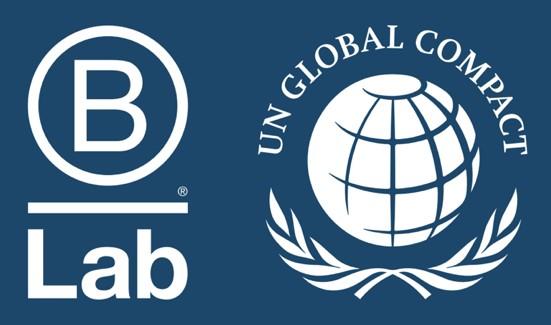
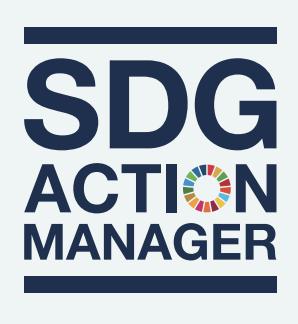
10 Steps to Become a Sustainability Professional - Dr. Mohammed S. Al-Surf
206
The Young SDG Innovators Program
The Young SDG Innovators Program is an exceptional development opportunity for young professionals under 35 working at companies participating in the UN Global Compact. This program provides corporate teams with 10 months of free sustainability, SDG, and innovation mentorship to help them develop an internal, proprietary solution for their company. The SDG Innovation Program is an opportunity for participating companies of the UN Global Compact to identify young talent within their organizations to collaborate and accelerate business innovation towards the Sustainable Development Goals (SDGs). This ten-month accelerator program activates future business leaders and changemakers to develop and drive innovative solutions through new technologies, initiatives, and business models and deliver on their company’s sustainability objectives.

207
10 Steps to Become a Sustainability Professional - Dr. Mohammed S. Al-Surf
The SDG Ambition Program
The SDG Ambition Program is a six-month accelerator designed to help senior employees of participating Global Compact companies deepen their understanding of how to operationalize the SDGs, set ambitious goals and take action to achieve them. With the support of sponsors like 3M and Accenture, participants will have the opportunity to learn from leaders in sustainable development and connect with peers committed to making positive change. Through this program, companies can position themselves as drivers of progress on the SDGs, unlocking business value, building resilience, and enabling long-term growth.
The UN Global Compact's SDG Ambition initiative enables and equips participating companies to develop and implement innovative business strategies that have a significant positive impact on the SDGs. Through the Global Compact Local Networks, participating companies can assess their current performance, identify risk areas, discover new opportunities across business units and functions, and take ambitious action to achieve the SDGs.

208 10
Steps to Become a Sustainability Professional - Dr. Mohammed S. Al-Surf
The Climate Ambition Accelerator
The Climate Ambition Accelerator is a global initiative that aims to scale-up credible climate action across companies of all sizes, sectors and regions. The Accelerator will help businesses to deliver on their commitments to reduce emissions at scale, thereby playing a vital role in mitigating the effects of climate change.
The Climate Ambition Accelerator builds on the UN Global Compact’s work to develop and promote the Science Based Targets initiative, its net-zero standards, and Business Ambition for 1.5°C campaign. Through the Global Compact Local Networks peer-to-peer learning opportunities, capacity building sessions and on-demand training.

10 Steps to Become a Sustainability Professional - Dr. Mohammed S. Al-Surf
209
Target Gender Equality
The Target Gender Equality program is a powerful tool for increasing gender equality within participating companies of the UN Global Compact. Through in-depth performance analysis, workshops focused on capacity building, peer-to-peer learning opportunities and multi-stakeholder dialogue at the country level, Target Gender Equality will help companies who are engaged with the UN Global Compact to set and achieve ambitious corporate targets for women’s representation and leadershipstarting with Board and Executive Management levels.
Gender equality is essential for the sustainable development of businesses globally. The Women’s Empowerment Principles provide a framework for companies to deepen their commitment to gender equality and contribute to Sustainable Development Goal 5.5, which calls for equal women representation, participation and leadership in business globally. Companies that participate in Target Gender Equality will be equipped with the latest data and research supporting the business case for gender equality and gain insights from UN partners and experts on how to accelerate progress on gender equality.

210 10
Steps to Become a Sustainability Professional - Dr. Mohammed S. Al-Surf
Useful Sustainability Glossary
1.5 degrees
Adaptive capacity
The target set by the 2015 Paris Agreement as the global average temperature compared with pre-industrial history. Scientists generally agree that global temperatures must be kept well below 2 degrees – ideally 1.5 degrees – to avoid the worst impacts of climate change.
The ability of systems, institutions, humans and other organisms to adjust to potential damage, to take advantage of opportunities, or to respond to consequences.
Biodegradable
Biodiversity
Blue economy
Business resilience
Able to break down and blend back in with the earth, given the right conditions and presence of microorganisms, fungi or bacteria. Ideally, but not always, no toxins are left behind.
The biological diversity of flora and fauna species on Earth, a complex web of life that underpins the natural life processes on the planet. Human-caused environmental damage reduces biodiversity, and creating a healthy, sustainable society requires increasing biodiversity.
Economic activities that create sustainable wealth from the world’s oceans and coasts.
The ability of an organisation to adapt in a changing environment to enable it to achieve its objectives and prosper.
Carbon credit
Carbon emissions
Carbon footprint
A generic term for any tradable certificate or permit deemed to allow a company, within an emissions trading scheme, to emit one tonne of CO2 equivalent. This covers CO2 or any of the other greenhouse gases.
A term often used in place of greenhouse gas emissions
Total emissions of greenhouse gases (in carbon equivalent)
211
10 Steps to Become a Sustainability Professional - Dr. Mohammed S. Al-Surf
Carbon neutral Balancing greenhouse gas emissions with an equivalent amount of independently verified carbon offsets. Also referred to as net zero greenhouse gas emissions.
Carbon offsetting
Any activity deemed to reduce overall emissions of greenhouse gases by purchasing verified carbon credits (also known as offsets) through emissions reduction projects or carbon trading schemes.
Carbon positive Any activity deemed to reduce and/or offset more emissions than it produces.
Carbon sequestration The capture and storage of carbon dioxide from the atmosphere, for example by planting trees.
Circular economy
An economy where waste and pollution are designed out, products and materials are kept in use and natural systems are regenerated.
Climate action Activities to tackle climate change and its impacts, usually by reducing greenhouse gas emissions.
Climate change See also: global warming. The altering of the planet’s climate due to an increase in greenhouse gas (GHG) emissions from human activity. Effects of climate change include rising temperatures, leading to increased extreme weather such as heatwaves, floods, droughts and storms, and resulting in reduced water and food security and social stability.
Climate change adaptation Policies and measures which make societies and companies more resilient to the impacts of climate change such as flooding and heatwaves.
Climate change Policies and measures which aim to reduce greenhouse gases
10 Steps to Become a Sustainability Professional - Dr. Mohammed S. Al-Surf for an activity or organisation over a given period of time.
212
mitigation from companies and governments with the intention of lessening the global impacts of climate change, such as reducing the amount and intensity of fossil fuel burning.
Corporate Social Responsibility (CSR)
CRVA (Climate risk and vulnerability assessment)
Deforestation
A management concept whereby companies integrate social and environmental concerns in their business operations.
An assessment of the likelihood of current and future climate hazards. It is a critical process for local authorities to understand the environmental and social impacts that climate change will have on their jurisdiction.
The process of harvesting forests for natural resources or to clear land for agriculture or construction. Deforestation that occurs faster than forests are able to recover causes environmental damage such as loss of biodiversity and climate change.
Disclosure
Environmental reporting
E-waste
Environmental management
The process in which a company submits requested information relating to the impact their business activities have on environmental areas such as climate change, deforestation and water security. Capital markets and purchasing organizations use data submitted through the disclosure process to make informed decisions.
The disclosure of a company, city, state or region’s impact on the environment.
Discarded electronic appliances such as mobile phones, computers, and televisions.
A set of processes and practices that enable an organisation to reduce its environmental impacts. The most commonly used framework is the one developed by the International
10 Steps to Become a Sustainability Professional - Dr. Mohammed S. Al-Surf
213
systems Organization for Standardisation (ISO) for the ISO 14001 standard.
Forest risk commodity
GHG (greenhouse gases)
A commodity for the production of which forest is being converted to agricultural use. The seven commodities responsible for the majority of agriculture-related deforestation are: timber products, palm oil, cattle, soy, rubber, coffee and cocoa.
Greenhouse gases, such as carbon dioxide and methane, which trap and hold heat in the atmosphere and contribute to climate change. Much of human activity emits greenhouse gases, such as burning fossil fuels for energy and transport, farming land for food production, and deforestation.
Global warming
Greenhouse gases
The increasing of the Earth’s average temperature due to a greenhouse gas (GHG) emissions from human activity. Effects of global warming include but are not restricted to increased extreme weather events, decreased water security, and rising sea levels.
Gases that trap heat in the atmosphere including carbon dioxide, methane, nitrous oxide and water vapour.
Greenwashing Activities, usually marketing, intended to make people believe a company is doing more to protect the environment than it really is.
Hazard
IPCC (Intergovernmental
The potential occurrence of a natural or human-induced physical event or trend that may cause loss of life, injury, or other health impacts, as well as damage and loss to property, infrastructure, livelihoods, service provision, ecosystems and environmental resources.
An intergovernmental body of the United Nations dedicated to researching and advancing knowledge of climate change.
10 Steps to Become a Sustainability Professional - Dr. Mohammed S. Al-Surf
214
Panel on Climate Change)
Life cycle assessment (LCA)
Internationally regarded as the leading scientific authority on climate change, and the author of reports that advise policymakers on the impacts of, and solutions to, climate change.
The process of attempting to measure the environmental impacts of a product or service throughout its existence.
Net-zero The overall balance between emitting and absorbing carbon in the atmosphere. The outcome of limiting catastrophic climate change requires companies and countries to become net-zero, and many policies are based on achieving that within certain time frames.
Paris Agreement
Recycling
Recyclable
Regeneration
Renewable energy
A legally binding international treaty on climate change, adopted at COP21 in Paris in 2015. Its goal is to limit global warming to well below 2, preferably to 1.5 degrees Celsius, compared to pre-industrial levels.
Processing materials that would otherwise be thrown away and turning them into reusable material. In closed loop recycling materials from a product are recycled to make the same, or a similar, product without significant degradation or waste. This can be done repeatedly. In open loop recycling materials from a product are used to make a different type of product.
A product or material that can be collected, processed and manufactured into a new product.
Improving ecological health and biodiversity by enabling, supporting and enhancing natural processes.
Energy that comes from natural sources that are constantly replenished like wind, water and sunlight.
Science-based Provide a clearly-defined pathway for companies and
10 Steps to Become a Sustainability Professional - Dr. Mohammed S. Al-Surf
215
targets financial institutions to reduce greenhouse gas emissions in line with what the latest climate science deems necessary to meet the goals of the Paris Agreement.
Scope 1, 2 & 3 emissions
SDGs (Sustainable Development Goals)
Scope 1 emissions refer to direct greenhouse gas (GHG) emissions that occur from sources that are controlled or owned by an organization. This includes all land-use emissions from companies that own or control land to produce agricultural and forest-risk commodities.
Scope 2 emissions refer to indirect GHG emissions associated with any purchases of electricity, steam, heat, or cooling.
Scope 3 emissions are the result of activities from assets not owned or controlled by the reporting organization, but that the organization indirectly impacts in its value chain. This includes the emissions linked to downstream companies where sourced commodities are being produced from forestrisk products through the Agriculture, Forestry and Other Land Use (AFOLU) sector (GHG Protocol).
17 social goals established by the United Nations Department of Economic and Social Affairs to promote prosperity while protecting the planet. The goals are: No poverty; zero hunger; good health and wellbeing; quality education; gender equality; clean water and sanitation; affordable and clean energy; decent work and economic growth; industry, innovation and infrastructure; reduced inequalities; sustainable cities and communities; responsible consumption and production; climate action; life below water; life on land;
10 Steps to Become a Sustainability Professional - Dr. Mohammed S. Al-Surf
216
Social capital
Sustainability
Sustainable business
Maintaining a balance of resources extracted and resources restored. The 1987 United Nations Brundtland Commission defines it as “meeting the needs of the present without compromising the ability of future generations to meet their own needs.”
A business that is economically viable, socially responsible and environmentally conscious.
Sustainable procurement Decisions when buying products and services that include social and environmental factors along with price and quality.
Systems thinking
Task Force on Climate-Related Financial Disclosures (TCFD)
Triple bottom line
The collective value of all social networks; the links and shared values in society that enable individuals and groups to work together.
An approach to problem-solving that views ‘problems’ as part of a wider, dynamic system. It is the process of understanding how things influence one another as part of a whole.
An international organisation created in 2015 to develop consistent climate-related financial risk disclosures for use by companies, banks, and investors in providing information to stakeholders. In 2021 New Zealand was the first country in the world to adopt reporting requirements based on the TCFD framework. The Bill will make climate-related disclosures mandatory for around 200 organisations in the financial and insurance sectors.
A phrase first coined by John Elkington in 1994, describing the separate but interdependent financial, social and
10 Steps to Become a Sustainability Professional - Dr. Mohammed S. Al-Surf peace, justice and strong institutions; and partnerships for the goals.
217
UNFCCC (United Nations Framework Convention on Climate Change)
Upcycling
Value chain
Volatile Organic Compounds (VOC)
environmental ‘bottom lines’ of companies.
The United Nations entity tasked with supporting the global response to the threat of climate change. The parent treaty of the 2015 Paris Agreement. CDP is an accredited observer to the UNFCCC.
Water security
It’s a term used to describe the creative reuse or transforming discarded items (usually with lesser value) or waste into new items with greater artistic or environmental value.
A business model that describes the full range of activities needed to create a product or service.
Volatile organic compounds (VOCs) are carbon-containing gases and vapors such as gasoline fumes and solvents (excluding carbon dioxide, carbon monoxide, methane, and chlorofluorocarbons). Many individual VOCs are known or suspected of having direct toxic effects on humans, ranging from carcinogenesis to neurotoxicity. The more reactive VOCs combine with nitrogen oxides (NOx) in photochemical reactions in the atmosphere to form ground-level ozone, a major component of smog. VOCs are also a precursor pollutant to the secondary formation of fine particulate matter (PM2.5).
The capacity of a population to safeguard sustainable access to adequate quantities of acceptable quality water for sustaining livelihoods, human wellbeing, and socioeconomic development, for ensuring protection against water-borne pollution and water-related disasters, and for preserving
10 Steps to Become a Sustainability Professional - Dr. Mohammed S. Al-Surf
218
ecosystems in a climate of peace and political stability (from UN Water). Reduced water security is an impact of climate change.
Waste stream The complete flow of a specific type of waste from domestic or industrial areas through to recovery, recycling or disposal.
Zero carbon A term sometimes used to describe a product or service that creates no CO2 or greenhouse gas emissions during production and/or operation.
Zero waste A target of sending no waste for disposal via landfill or burning.
10 Steps to Become a Sustainability Professional - Dr. Mohammed S. Al-Surf
219
References
U.S. Green Building Council: https://www.usgbc.org/
Green Business Certification Inc. : https://www.gbci.org/
LEED Green Associate: https://www.usgbc.org/credentials/leed-green-associate
LEED AP with Specialty: https://www.usgbc.org/credentials/leed-ap
SITES AP: https://www.sustainablesites.org/professionals
TRUE Advisor: https://true.gbci.org/true-advisor
Edge Expert: https://edge.gbci.org/auditors
LEED Green Rater: https://www.usgbc.org/credentials/leed-green-rater
International Society of Sustainability Professionals (ISSP): https://sustainabilityexcellence.gbci.org/
ISSP SEA: https://sustainability-excellence.gbci.org/sea
ISSP SEP: https://sustainability-excellence.gbci.org/sep
Mostadam AP: https://www.mostadam.sa/
Estidama: https://pages.dmt.gov.ae/en/Urban-Planning/Estidama-Program
Pearl Qualified Professional: https://pages.dmt.gov.ae/en/Urban-Planning/PearlQualified-Professional-PQP-Exam-Program
QSAS, GSAS: https://gsas.gord.qa/
BREEAM Assessor and Accredited Professional: https://www.bre.co.uk
World Green Economy Council: https://wgeco.org/
Certified Green Building Consultant (CGBC): https://wgeco.org/cgbc/
Certified Green Economist (CGE): https://wgeco.org/cge/
Global Energy Manager (GEM): https://wgeco.org/gem/
Green Project Management Professional (GPMP): https://wgeco.org/gpmp/
Certified Green Logistics Professional (CGLP®): https://wgeco.org/cglp/
Fitwel Ambassador: https://www.fitwel.org/
Association of Climate Change Officers (ACCO): https://climateofficers.org/
10 Steps to Become a Sustainability Professional - Dr. Mohammed S. Al-Surf
220
Certified Climate Change Professional (CC-P®): https://climateofficers.org/certification-professional
Global Reporting Initiative (GRI): https://www.globalreporting.org/
International Sustainability Standards Board (ISSB): https://www.sasb.org/
CDP Climate Change Survey Certification: https://www.cdp.net/en
Integrated Reporting (IR) Fundamentals of Integrated Reporting Certificate: https://www.aicpa.org/cpe-learning/course/fundamentals-of-integrated-reportingcertificate-program
Certified Sustainability Reporting Assurer (CSRA):
https://www.institute-csp.org/program/certified-sustainability-reporting-assurer-csra/ Green Building Initiative’s Green Globes: https://thegbi.org/professional-certification/
International Living Future Institute (ILFI)’s Living Building Challenge: https://livingfuture.org/
International WELL Building Institute’s WELL Building Standard: https://www.wellcertified.com/
Certified Green Building Engineer - GBE™: https://www.aeecenter.org/aeecertifications/certified-green-building-engineer-gbe/
Association of Energy Engineers (AEE): https://www.aeecenter.org/
Certified Energy Manager (CEM): https://www.aeecenter.org/certified-energymanager/
Certified Business Energy Professional (BEP): https://www.aeecenter.org/businessenergy-professional/
Renewable Energy Professional Certification: https://www.aibmc.org/view_Article.aspx?type=2&ID=102&certification=1
Certified Building Commissioning Professional - CBCP®: https://www.aeecenter.org/certified-building-commissioning-professional/
Envision Sustainability Professional (ENV SP): https://sustainableinfrastructure.org/credentialing/envision-sustainability-professionalenv-sp/
10 Steps to Become a Sustainability Professional - Dr. Mohammed S. Al-Surf
221
International Supply Chain Education Alliance: Certified Supply Chain Manager: https://www.iscea.org/
Global Association of Risk Professionals (GARP) Sustainability and Climate Risk (SCR) Certificate: https://www.garp.org/scr
Carbon Auditing Professional - CAP™: https://www.aeecenter.org/carbon-auditingprofessional/
The CFA Institute Certificate in ESG Investing: https://www.cfainstitute.org/en/programs/esg-investing
Alliance for Water Stewardship (AWS) AWS Professional (Foundation, Advanced and Specialist levels): https://a4ws.org/training/aws-standard-system-training/ Certified Water Efficiency Professional - CWEP™: https://www.aeecenter.org/certified-water-efficiency-professional/
The World Bank City Climate Planner (CCP) Certificate Program: https://www.worldbank.org/en/topic/climatechange/brief/city-climate-plannercertificate-program
The Events Industry Council Sustainable Event Professional Certificate: https://eventscouncil.org/Sustainability/SEPC
Green Roofs for Healthy Cities Green Roof Professional (GRP) Accreditation: https://greenroofs.org/green-roof-professional
The Institute of Environmental Management and Assessment (IEMA) (based in the United Kingdom) Chartered Environmentalist (CEnv) And Registered Environmental Practitioner (REnvP): https://www.iema.net/skills/path-to-chartership/charteredenvironmentalist-cenv
The American Institute of Chemical Engineers (AIChE) Institute for Sustainability (IfS) AIChE Credential for Sustainability Professionals (ACSP): https://www.aiche.org/ifs/aiche-credential-sustainability-professionals
Life Cycle Assessment Certified Professional (LCACP): https://aclca.org/lcacpcertification/
10 Steps to Become a Sustainability Professional - Dr. Mohammed S. Al-Surf
222
The Australian Life Cycle Assessment Society (ALCAS), Life Cycle Assessment
Certified Practitioner (LCACP): https://www.alcas.asn.au/copy-of-certification
GEP Environmental: https://www.iema.net/skills/training
ISO 14001 LEAD AUDITOR: https://certification.bureauveritas.com/needs/iso14001-lead-auditor
Certified Sustainable Development Professional - CSDP®: https://www.aeecenter.org/certified-sustainable-development-professional/
The SDG Academy: https://sdgacademy.org/courses/
The SDG Action Manager: https://www.bcorporation.net/en-us/programs-and-tools/sdg-action-manager
The Young SDG Innovators Program: https://unglobalcompact.org/take-action/sdginnovation-accelerator
The SDG Ambition Program: https://www.unglobalcompact.org/take-action/sdgambition
The Climate Ambition Accelerator: https://unglobalcompact.ca/climate-ambitionaccelerator/
Target Gender Equality: https://www.unglobalcompact.org/take-action/target-genderequality
10 Steps to Become a Sustainability Professional - Dr. Mohammed S. Al-Surf

223























































































































